The Complete Beginner’s Guide To Freelancing
Are you considering freelancing but unsure of where to begin? Then you should read this manual. This is my comprehensive
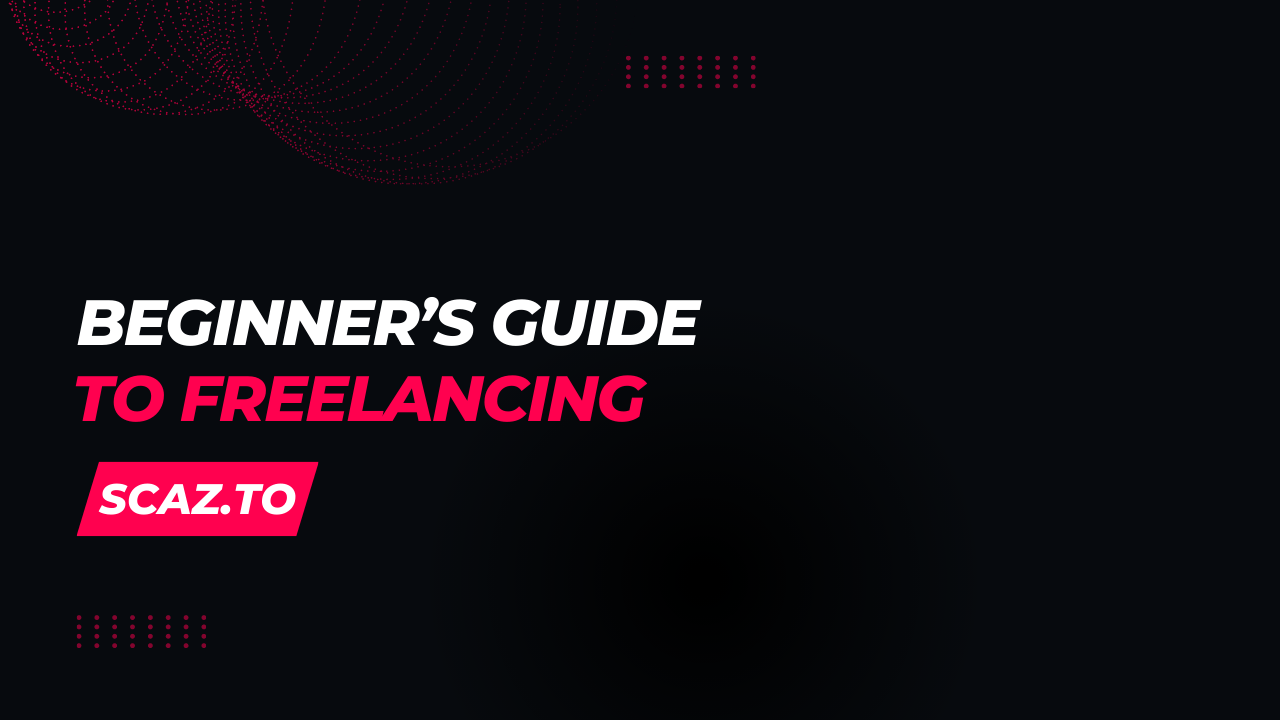
The Complete Beginner’s Guide To Freelancing
Are you considering freelancing but unsure of where to begin?
Then you should read this manual.
This is my comprehensive guide for beginners on how to begin freelancing.
This manual will assist you in beginning your journey as a freelance writer, web designer, or developer in 10 easy steps.
I need to make a few clarifications before you continue.
Contrary to what you might believe, freelancing is much more difficult. Some individuals think anyone with a laptop and internet access can work from home and make money. It’s untrue, though.
Only if you’re willing to put in the effort to achieve your goal of going freelance and obtaining financial independence should you continue reading.
Additionally, read the suggested links to find out more about each section.
Let’s get started now.
Get The Right Equipment
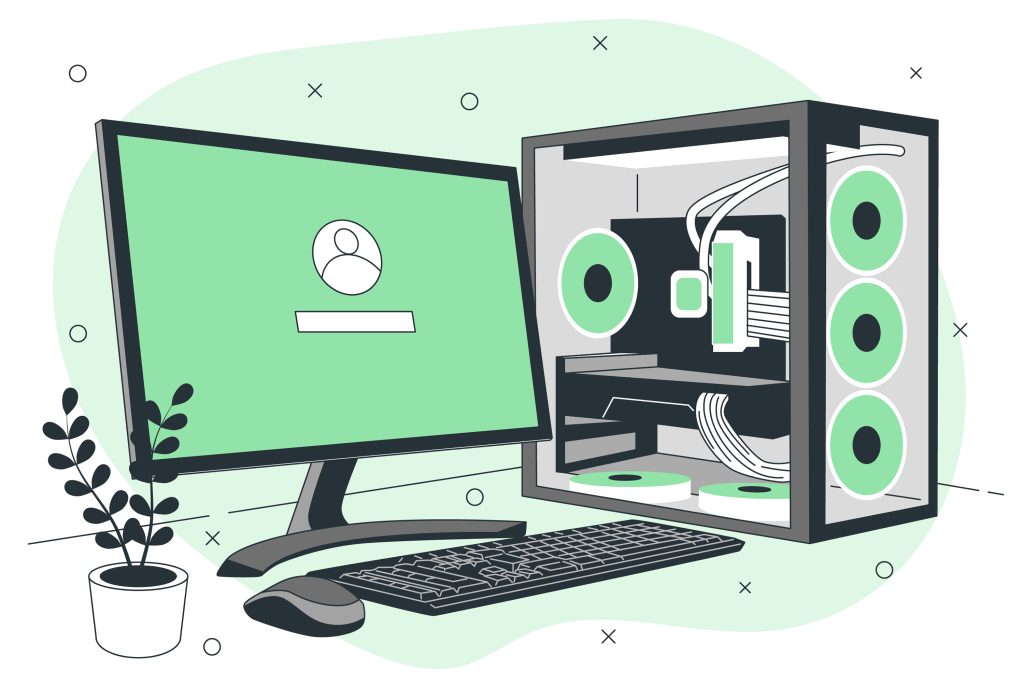
When you’re in a desperate situation, you tend to make terrible decisions. That is precisely why I always suggest against starting a freelance business in order to make quick money.
Working for yourself is not a way to get rich quickly. It takes a lot of effort. In reality, it took me close to 4 years to establish a reliable freelance income. But thankfully, compared to me, you now have more opportunities. Freelancers frequently ask me if there is any work they can do with just a smartphone. There are none, is the short answer. not ones that are worthwhile, at least.
The features of smartphone apps are limited. To run the software needed for doing the job correctly and producing excellent results, you need a computer.
Therefore, getting a laptop or an old computer would work just as well before you consider working online.
Before continuing, be sure to read the suggested articles below.
Further Reading:
- Before Quitting Your Day Job To Start Freelancing, Ask Yourself These 12 Questions
- Advantages And Disadvantages Of Being Self-Employed
Find A Marketable Skill

The next, and most important, step is to find a skill you can offer as a service.
This can be as simple as transcribing a podcast or as complex as developing a mobile application. The key to success in freelancing is to find a skill that you are proficient in and that is in sufficient demand on the market.
For instance, if you’re skilled at drawing illustrations or designing product packaging, you should visit a freelance marketplace such as Upwork or Freelancer to see if there are any available jobs.
If there are enough job postings for your skill on those sites, then you’ve struck gold.
Further Reading:
Polish Up Your Skills

Once you’ve identified a marketable skill, make sure you can provide it as a service. Simply put, you must be exceptionally skilled at what you do in order to be paid for it.
Assume you want to work as a freelance writer for health and wellness blogs. This category is in high demand. You have also written about it in school or college.
That does not, however, imply that you can create blog posts for online readers. Articles on blogs and online publications are written in very different styles and formats. Mainly to attract general audiences.
So you must now learn how to write blog posts for online readers. Discover how to use WordPress. How to make graphics for articles. And even more.
It’s the same for every other freelancing skill out there. You can’t just dive in without first learning the basics. You must first hone your skills.
Read books, watch YouTube channels, and follow blogs about your skill and industry.
Taking online courses is also the most effective way to properly learn and polish a skill.
It takes time to develop a skill from the scratch. So be patient and continue to learn and practice. It could take several weeks, months, or even years. Just keep going.
Further Reading:
Build Your Reputation

The ability to demonstrate your skills and work will determine whether or not you will be a successful freelancer.
It makes no difference whether you have a college degree or years of experience. Clients will never hire you if you can’t demonstrate your expertise in your field.
You should have articles published on popular blogs if you are a writer. You should be able to point to a brand and say you designed their logo if you’re a graphic designer. If you work as a web designer, you must be able to send a link to a website you created.
In a nutshell, put some of your work out there. Do some free work first if necessary. Contact blogs that accept guest posts. Create some concept designs. Whatever it is, work to improve your reputation.
Further Reading:
- How to Quit Your Job and Start Freelancing in 6 Easy Steps
- Begin Guest Blogging Before You Begin Your Freelancing Career
Create A Portfolio

When you start building your reputation, make sure to include a portfolio that contains all of your published/live work.
A portfolio can be a website or a webpage that displays all of your work.
For example, if you’re a graphic designer, you can use a site like Behance to showcase all of your work. When you contact a client, you can simply send them a link to your portfolio so they can evaluate your skills.
Make certain that your portfolio only contains your best work.
Further Reading:
Try Freelancing Part-Time

Freelancing is not for everyone. The process of marketing yourself, selling your services, and dealing with clients can be overwhelming.
If you’re not sure if freelancing is the right career path for you, try it part-time.
Spend a few hours each day working on smaller freelance gigs. And learn the ins and outs of freelancing.
When you feel ready to take on bigger projects, you can decide whether to freelance full-time or quit your day job.
Further Reading:
- Should You Do Part Time Or Full Time Freelancing? Here’s How To Figure Out
- How To Work Remotely From Home: 10+ Tips & Tools
Find The Right Freelance Platform
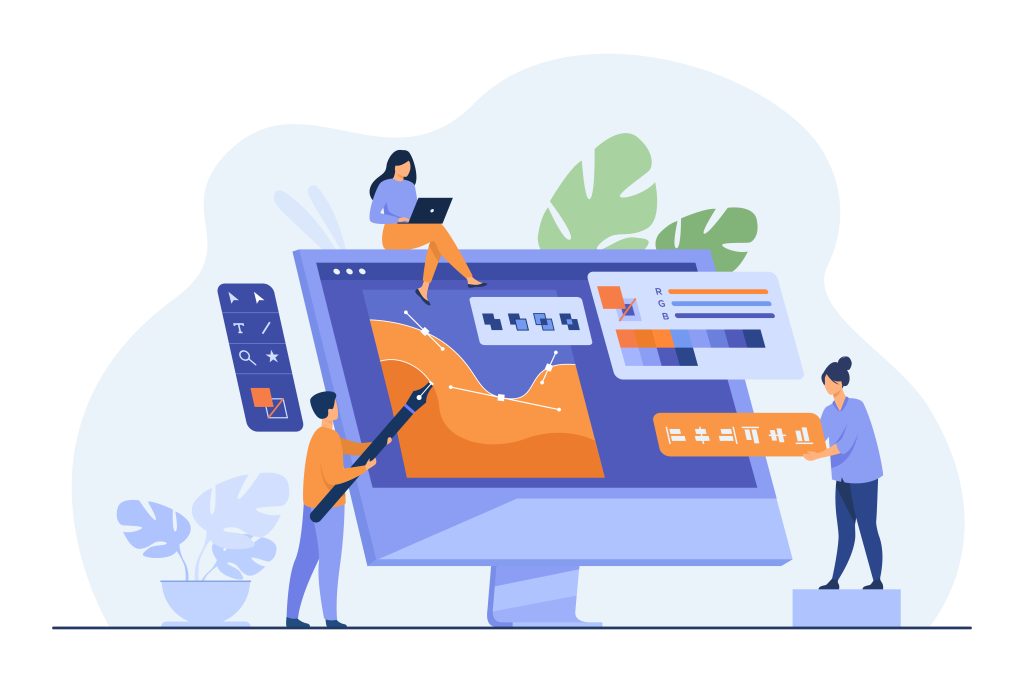
This step plays a crucial role in how easily you’ll find work and the quality of clients you’ll be able to work with.
A mistake most new freelancers make is to find and join the most popular freelance marketplace to get started. Like UpWork or Freelancer.
These sites are already filled with millions of freelancers from all over the world. And because of the competition, they engage in bidding wars to win work. They will constantly lower their prices to get the job. And that will get you nowhere.
So the best approach, and the approach that worked wonders for me, is to pick a marketplace that’s relatively new and join it. It’ll have fewer freelancers, so you’ll have less competition. And it will increase your chances of getting work.
Further Reading:
- Which Freelancing Site Is Best For Beginners? + Tips
- 15+ Lesser-Known Freelancing Sites with Low Competition
- 24 New Freelancing Sites With Low Competition
- How To Create The Perfect Freelancer Profile On UpWork
Charge The Right Price
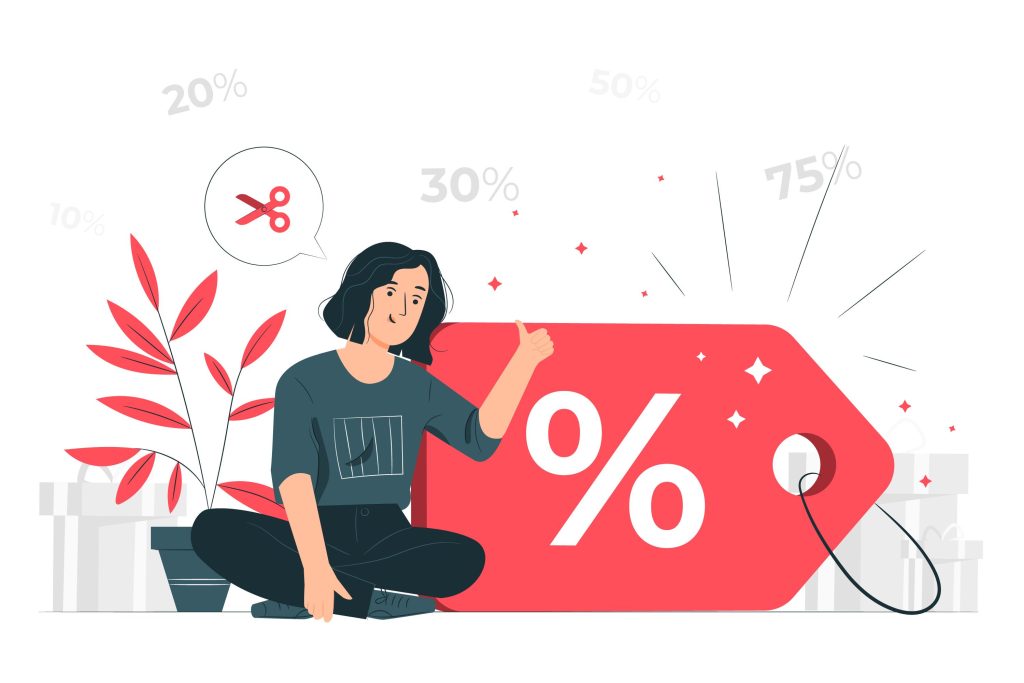
Finding the right price for your services can be a challenge. After all, if you charge the wrong price, clients will never even consider hiring you.
In the beginning, the best way to figure out the right price is to look at popular freelance marketplaces and see what other freelancers in your niche or industry are charging.
Since you’re new, it’s not fair to charge the same prices as experienced freelancers.
Instead, you should try to find a middle ground where you can offer a more competitive price than those experienced freelancers without making yourself seem cheap.
Further Reading:
- How Much Should I Charge? 5 Ways To Calculate Your Freelance Rates
- Worst Freelance Mistakes & How To Avoid Them
Send Your First Proposal

Writing a proposal to a client needs to be done carefully.
It’s not like writing a regular email or social media post. You need to put some serious thought into it and figure out how to convince your client to give you the job over all the other freelancers.
There are a few tips and hacks you can use to your advantage when writing a winning proposal. I can’t go into all the details here, so check out the links below for more information.
Further Reading:
Deliver Beyond Expectations
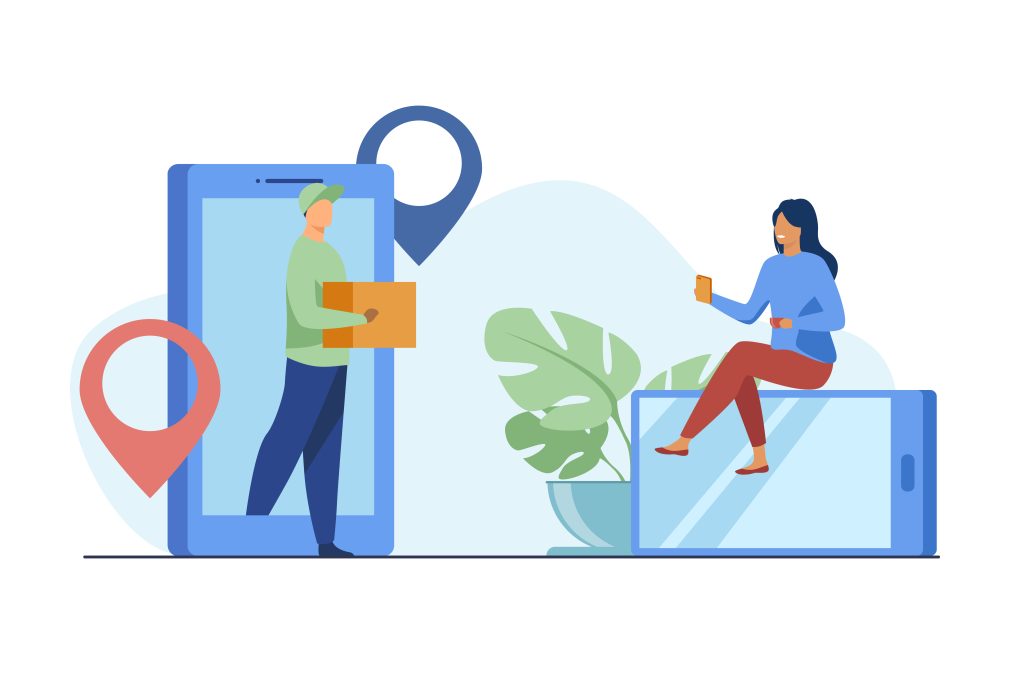
Once you land a job, the next step is to make sure you deliver the project exactly as the client asked.
Or, in this case, I want you to overdeliver by going above and beyond the client’s expectations.
I’ll give you an example. In the early days of my freelance career, I used to get jobs writing blog articles with a fixed word count, like 1000 words. What I did was write the article to be around 1100-1200 and also include a unique header image for the blog post when I delivered it. Without charging extra for it.
The clients were always happy with my work. And gave 5 star reviews.
So find a way to do work that exceeds expectations. And learn to stand out. That’s the only way to build a lasting freelance career.
Further Reading:
What’s Next?
You are now ready to enter the world of freelancing. With dedication and hard work, you’ll be able to create a profitable and prosperous freelance career. That’s guaranteed.
The Complete Guide to Becoming a Freelance Writer
If you’re new to freelance writing or planning to get started as a freelance writer, follow this guide, and you’ll
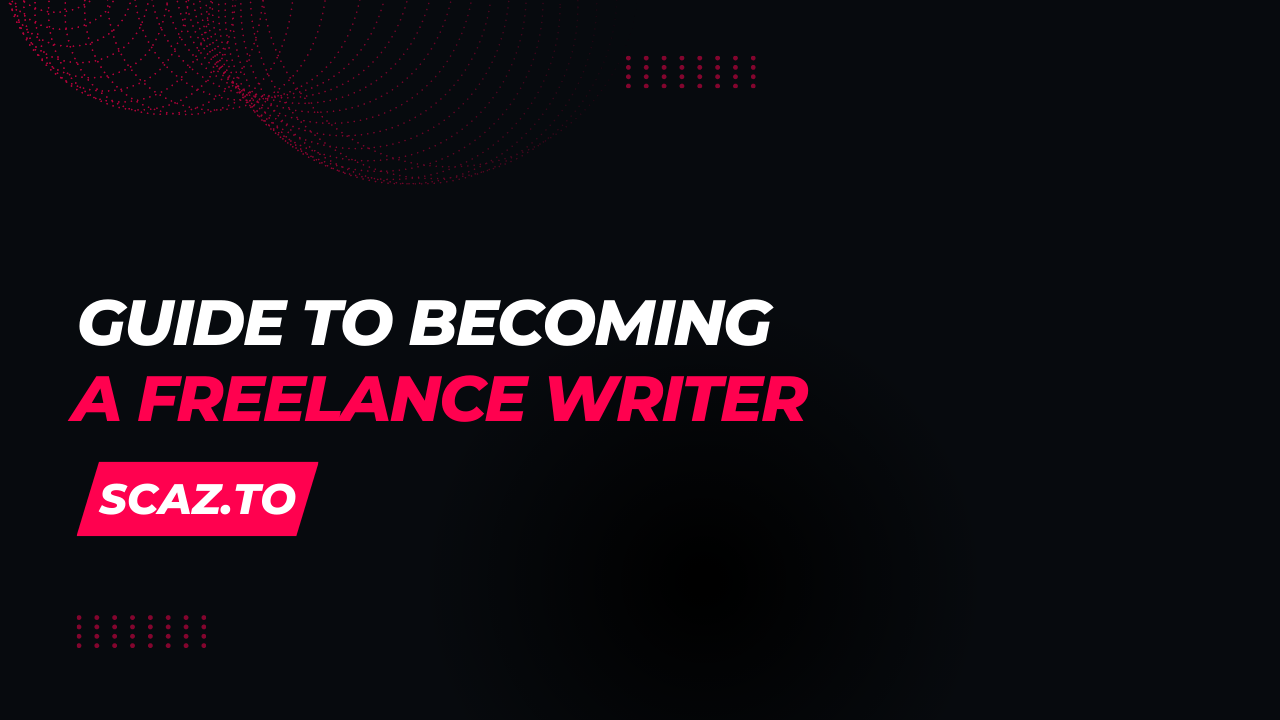
The Complete Guide to Becoming a Freelance Writer
If you’re new to freelance writing or planning to get started as a freelance writer, follow this guide, and you’ll be able to avoid many of the mistakes I’ve made over the years.
As a freelance writer, I took seven years of mistakes, failures, and many depressing moments to go from $0 to $5,000 a month. And I know many writers still need help making a few bucks online.
This article is for you. My NO BS guide to the best approach to getting started as a freelance writer, the right way.
Do You Have What it Takes to be a Freelance Writer?
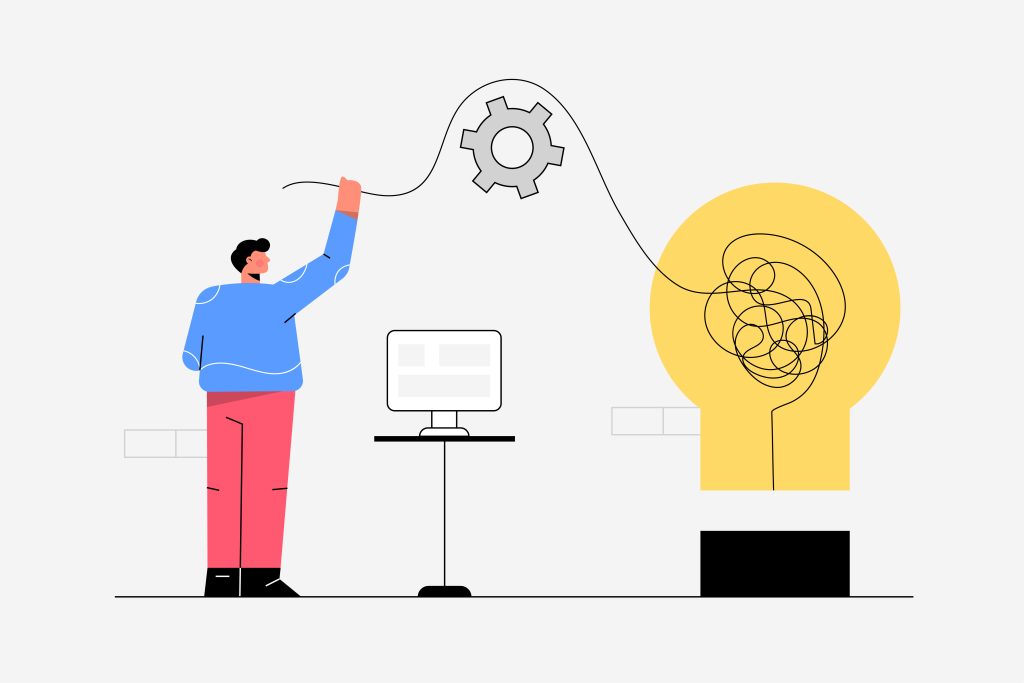
Most so-called “experts” and “gurus” make freelancing sound like a walk in the park and mislead people into believing freelancing is a quick fix for your financial problems, a way for you to make some fast cash to pay off your bills or earn some extra money during your vacations.
Well, I hate to tell you that you will not make it as a freelance writer if you’re only looking for a quick fix. Don’t start freelancing for the wrong reasons because you will have to work hard to start making money as a freelancer.
And be prepared to do a few weeks of hard work without making an income because it won’t come easy.
You’ll also need to be passionate about writing to be a successful freelance writer. It’s not something you’re born with it but something you develop over time.
For example, if you quickly get bored reading books and long articles, there may be better paths than writing for you.
So, take a moment to think things through before getting started and ask yourself: Do I want to be a freelance writer, or am I just looking for a quick fix for my financial problems?
Different Types Of Writing Gigs You Should Know About

Freelance writing is a broad field with many categories. Before you start, you should learn about the different types of freelance writing and choose the one you are most comfortable with.
Here are just a few of the types of freelance writing:
- Copywriting: Copywriting work usually involves everything from writing promotional content for brands, writing product descriptions, writing articles for blogs and magazines, and everything in between.
- Article Writing: Writing articles for online publications and blogs differs from writing essays for college.
- Blog Writing: Writing for blogs means you will also have to learn a little about blogging. This includes learning to work with WordPress, SEO, and more.
- eBook Writing: Writing eBooks differs from one industry to another. You’ll need to study different types of eBooks to be a successful writer.
- Website Content Writing: This mainly involves writing content for website pages, such as home pages, product pages, about pages, etc.
- Ghostwriting: Writing content for people to publish under their names. You won’t get credit for this type of work. But you can increase your price for this type of job.
- Fiction Writing: This could be the right path for you if you have an imaginative mind. But, it’s not easy to find fiction writing freelance jobs.
- Resume and Cover Letter Writing: Another type of writing with low demand.
- Technical Writing: This is the writing you see on product manuals and terms of an agreement and privacy policy pages.
Find Your Niche, But Keep Your Options Open
You can only call yourself a freelance writer if you can work with all (or at least most) of the above categories. So don’t try to be a jack of all trades. Instead, be specific about your skills. Limit yourself to one niche.
For example, if you’re good at writing eBooks, call yourself a freelance eBook writer. If you’re good at writing essays, call yourself a freelance essay writer.
Limiting your skills to a niche can help you gain experience in a specific area and get work more easily. But don’t limit yourself to one niche. Keep your options open.
For example, I mostly work with corporate blogs and write blog articles to help develop different types of blogs. But I also write ebooks, newsletters, and do copywriting when I can or when I feel like I need a change of pace.
Because there will be times when you desperately need the money. At those times, you should be ready to take on any kind of writing work.
Learn to write like a pro. (Even if you don’t feel like one)
When I developed my first blog, freshinfos.com (no longer active), I wrote 15 to 20 articles a day for the first 3 months, working almost 20 hours a day. I was really pushing myself to the limit. Then I slowed down to writing about 6 to 10 articles a day. This went on for over 4 years.
Most of the time they were small articles of about 300 to 500 words. But it was hard for me at first. English is my second language. I wasn’t very good at it. And I had to learn from scratch to write for an online audience.
My writing was terrible for the first few months. I received a lot of harsh comments and bullying from readers. They pointed out my grammatical mistakes and made jokes.
But I kept going and writing more and more articles. And that’s the main reason I got to where I am today.
My blog helped me practice the art of writing for an online audience, even without realizing it. While I still have a lot to learn about writing, my skills have improved drastically to the point where I can write as well as native English speakers.
What I’m trying to say is that you have to practice. No matter what you think about your abilities or what others say about your work, keep practicing. You may make mistakes, but keep writing. You’ll learn along the way.
In the book Outliers, Malcolm Gladwell says that it takes 10,000 hours of practice to master a skill. He points out that some of the most iconic artists and inventors, like Bill Gates and Mozart, put in the same amount of practice to master their skills.
It’s not too late for you to start practicing.
Start Building Your Reputation And Experience
Another benefit of developing my blog was that it doubled as my portfolio. Whenever a client asked me to show them examples of my work, I simply sent them a link to my blog. It really helps increase my success rate.
Now, you don’t have to have your own self-hosted blog to get started as a freelance writer. There are other ways to build your reputation.
If you want to be a writer, you must do two things above all others: read a lot and write a lot.” – Stephen King
The first and most effective method is to get published on other established blogs. There are hundreds of great blogs out there that accept guest posts from people outside their writing staff, such as LifeHack, ProBlogger, and Mashable.
Getting a few of your articles published on these blogs will help you convince your clients that you’re a skilled writer, not just someone who claims to be.
However, you have to be really good at writing to get an article published on another blog. They only accept the best.
So if you’re brand new, start by starting a personal blog on a free platform. Medium is my favorite place to write. It’s free and gives you more exposure for your posts.
Start a personal blog on Medium and write about topics related to your niche industry. As long as your writing is good, you can even use your Medium blog as your portfolio.
Also, familiarize yourself with the WordPress platform and learn how to use it. Learn about search engine optimization. Learn how to format eBooks.
These skills will give you bonus points when sending proposals to new clients.
Hourly Or Fixed Pricing?
Whether you should charge by the hour or by the project is a question that freelancers have been debating for a long time.
It really depends on the type of work you do. For example, an hourly rate is more appropriate for a copywriter who works mostly on website copy. And a fixed rate is appropriate for a blogger who writes articles based on word count.
On the other hand, pricing also depends on how fast and skilled you are. For example, I can write a 1,000 word article on certain topics in about 30 minutes. If I were to charge an hourly rate, I would be undervaluing my work.
So I always stick to fixed prices. It’s fair to both the freelancer and the client, and I don’t have to worry about tracking my hours. One less thing for me to worry about.
Choose A Platform To Offer Your Services
I know there are experts who will tell you not to use freelance platforms to offer your services. But I encourage you to use a platform or job board to find work, at least for the first few months.
We all have to start somewhere, right? And what better way to learn about different types of freelance work and find out what other freelancers are doing than on a freelance platform.
However, you also need to be careful when choosing a platform to offer your services. Most beginners make the most obvious choice and sign up with the most popular freelance sites, such as UpWork or Freelancer.com.
You need to avoid these platforms. There is too much competition on these sites and it will demean your skills and force you to sink to the level of cheap freelancers who engage in bidding wars to win work.
Instead, focus on new and smaller freelance sites and job boards. I know what you’re thinking: New and smaller sites don’t get as many clients as the big sites, so how is that going to help me get more work, right?
Well, it’s a lot like finding your niche. Smaller sites have fewer freelancers competing for work. And if you know how to write killer proposals and already have a great reputation, you can get more work even if there are only a few jobs available on that platform.
Best Places To Find Freelance Writing Jobs
So I advised you to avoid popular freelance platforms like UpWork and Freelancer.com. And especially stay away from Fiverr.
But what other places are there to find work?
Actually, there are a lot of great websites, platforms, and job boards where you can offer your services and find freelance writing gigs. These are my top picks.
- ProBlogger Job Board: A regularly updated job board with high-paying freelance writing gigs. Best for professional writers.
- AngelList: Remote job vacancies posted by startups. High paying but more complex work.
- goLance: A fairly new freelancing site with low platform fees.
- RemoteOK: A mix of content and digital marketing jobs. Best for content marketers.
- Inbound Jobs: Complex marketing and content writing jobs. Best for advanced writers and content marketers.
Stick to one job board or a platform. Try not to copy-paste your proposals and apply to jobs in bulk. It’ll be just a waste of time.
Futher Reading: 24 New Freelancing Websites with Low Competition
How To Write A Killer Proposal To Clients
A few months ago, I did a small case study by posting a fake job on UpWork and Freelancer (link to full case study below). A lot of freelancers applied for the job, and I was able to learn a lot from their mistakes.
One of the most common mistakes they make is to come on strong early in their proposals. It makes them sound desperate. Most of the time, they were offering really low prices to get the job done.
Professional freelancers never write proposals like this. Here’s a sample email template to give you an idea of how it’s done:
Hi [Client Name],
My name is [your name] and I’m a freelance copywriter.
I just saw your job posting on [website name] and noticed that there’s an opening for a blog article writer on your business blog.
I’ve been working online as a freelance writer for [number of years] and have been able to help develop several great and successful blogs for my clients. Including [name some of the clients you’ve worked with].
I have also published several articles on popular, authoritative websites such as [name and link to websites]. Take a look and see if my writing style fits your blog strategy.
I understand that getting lots of social media shares is just as important as optimizing articles for search engines. And I use a handful of tools to make sure I target both.
If you like, I can come up with some topics and ideas for great articles for your blog.
Let me know if you’re interested.
Regards,
[Your email signature]
Advice From One Freelance Writer To Another
Even though this strategy worked for me, I can’t guarantee that it will work for you. But if it worked for me, it can work for you!
Going forward, keep a few things in mind. If you really want to succeed and be an exceptional writer, don’t be too greedy. Don’t charge extra for every little bit of extra work you do for your clients.
Be willing to go the extra mile. Whether it’s writing an extra 100 words or preparing the images for the articles, it will help you stand out in a crowd of freelance writers.
Focus on delivering the highest quality work every time. Treat every assignment you receive as your first. Look for ways to make your clients happy.
Finally, don’t be a jerk. Always be nice to your clients and watch your temper. Whether they criticize your work or ask for more revisions, learn to keep your cool.
Further Reading: 5 Powerful Psychological Tricks for Getting More Freelance Clients
Conclusion
As you can see, it will take a while before you can complete all of these steps and start making some real money. But it will definitely be worth the effort.
One more thing, while you are working from freelance websites and job boards, create a personal portfolio website for yourself. This website will help you slowly move away from relying on job boards and start getting offers from clients directly via email.
I send a link to my personal website whenever a client asks what kind of work I do and when they want to see examples of my work.
Keep improving and don’t stop learning. Your success will depend on it!
Sports Betting Full Guide
How Investing and Sports Betting Differ The days of handing over a cash envelope to a dodgy individual in an
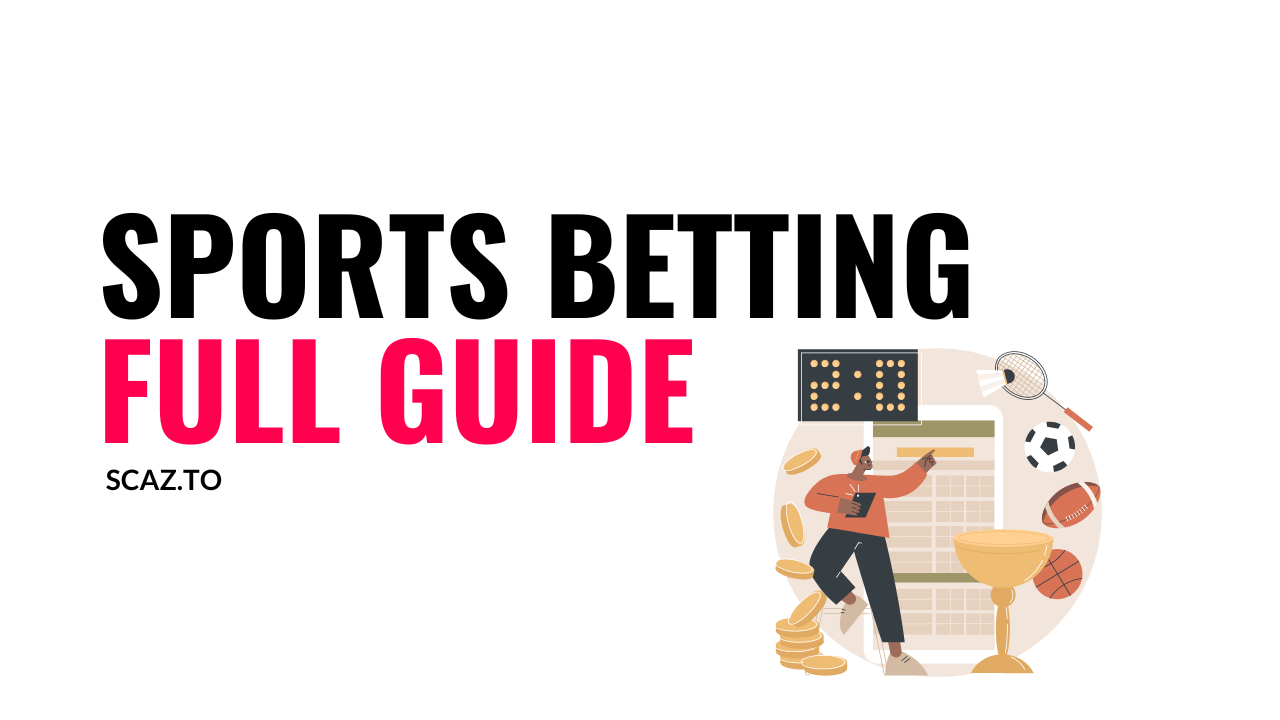
Sports Betting Full Guide
How Investing and Sports Betting Differ
The days of handing over a cash envelope to a dodgy individual in an alley are long gone. Sportsbooks are multibillion-dollar software corporations that enable you to safely place bets on your laptop or smartphone. The entire sports betting procedure is straightforward, high-tech, and legal, and sites are designed to provide clients with exceptional experiences.
The global market capitalization for sports betting is projected to be just about $60 billion per year. Sports betting provides billions of dollars in genuine, pure riches for both sportsbook employees and millions of bettors worldwide. Doesn’t that sound like the stock market?
At their most fundamental, base level, sports betting and the stock market both reward individuals who successfully predict the future. Sports betting, like the stock market, isn’t only about winning and losing (ie. stock prices going up and down). There are numerous products meant to provide hedges for bettors (or investors), increase market liquidity, and make markets more efficient for their participants. The differences between a call option and a futures bet is not significant.
- Investing and gambling both involve risking capital in the hopes of making a profit.
- In both gambling and investing, a key principle is to minimize risk while maximizing reward.
My First Observations
How was this game conceived, ie. what did those who created it count on?
Mainly yours:
1) Impatience
2) Immoderation
3) Non-objectivity
4) Ignorance
1) In a psychological sense, the desire of each of us to play a ticket with pairs that are played on the same day as the payment is understandable, in order to withdraw the money immediately after the matches are over or possibly tomorrow. A nice idea but relatively rarely achievable, so it’s now or tomorrow is never. Don’t just watch the matches that happen on the same day, but watch everything that will be played in the following weeks, it will be much easier for you to compile winning tickets.
2) Instead of playing a ticket with 4, 5, 6, or 7 pairs (how many you decided at the start) you usually insert at least one more pair to increase the odds and very often you lose on that one. Be modest and try to control yourself – if you decided to play a ticket with 4 pairs – then play those 4 matches and nothing more.
3) You are an ardent fan of a team, but if that team is no longer in the form it was in, for example, last year (harsh reality), then don’t bet on it or any other team you are emotionally attached to – because then you won’t be OBJECTIVE – and you will hardly guess.
4) Your ignorance is the result of a lack of information. Let’s say: You played 1 on the favorite, but you didn’t carefully read all the possible newspapers, listened to the radio, or watched TV, you didn’t “consult” internet, so you didn’t know the following:
- The home team (favorite) is served justice by the referee, with whom that team has been in bad relations for a long time,
- A key defensive player takes a break due to two yellow cards,
- Center forward and leading goal scorer is injured and will not play,
- The home team has a 12-point advantage over the second-placed team, and there are 4 more rounds left until the end of the championship, so they can sell points or play a draw and bury you.
How do Bookies Work?
On the (one) only possible principle: HONESTY.
If something is honest, then it’s betting! You can play a ticket that brings you the maximum amount that the bookmaker pays out, and the same ticket can be played by several players (whom you don’t know), what will happen? The bookmaker will pay all players exactly what each ticket brings.
What is Betting?
Betting is a game of chance in which you guess the outcomes of sports and other events. Someone bet on the sports result, someone on the outcome of the election for the president of Serbia. The profit depends on how accurately you predicted the outcome of the event you bet on. The amount of winnings is the product of the odds and the amount of stakes. As I said, you choose the events and types you want to bet on from the bookmaker’s offer. Then (again by yourself) you determine the amount you invest and immediately find out the profit you will achieve, of course, if you guess the outcomes of the events you bet on.
How to Read & Calculate Sports Odds
Understanding how to read the odds is a crucial step in becoming a successful sports bettor. From determining how much money you want to wager to figuring out which bets offer the most value, it all starts with a solid understanding of odds.
What Are American, Decimal, & Fractional Odds?
Odds are displayed in either American, decimal or fractional format and serve two purposes:
- They signal the implied probability of the outcome they are attached to
- They indicate how much money you could win betting on that outcome
Be careful about relying on odds alone when evaluating the likelihood of an event occurring. Odds are influenced by more than the factors that are actually relevant to the outcome of the event.
Your sports book may manipulate the odds to incentivize bets on a particular side, and the sum of the probabilities for a single event will always exceed 100 percent because the sportsbook takes a cut that is baked directly into the odds.
The odds also tell you how much the book will charge to take your bet. You may hear bettors refer to this amount as “the juice” or “cut” or “vig(orish)”.
American Odds Explained
If you see -150, +230, or any other three-digit number with a +/- in front of it, you’re looking at American odds.
What Do the + and – Mean in Sports Betting?
The – and + on a sports betting line indicate both your expected payout and whether you’re betting on the favorite or the underdog.
Negative numbers indicate the favorite on the line. The negative number indicates how much you’d have to bet to win $100.
If the number is positive, you’re looking at the underdog, and the number refers to the amount of money you’ll win if you bet $100.
Example:

Many popular wagers, including most point spread bets, have both sides with negative odds. Because the point spread is used to level the playing field between two sides, you often have to risk more than you profit when betting on the spread.
In order to win $100 on the Villarreal (favorites), you’ll need to wager $152. If you wagered $100 on the Getate (underdogs), you’d be set to win $500.
Decimal Odds Explained
Of the three types of odds you will encounter in your betting endeavors, decimal odds are the easiest to work with. Decimal odds are displayed as shown below:

Determining your payout with decimal odds is simple: simply multiply your bet by the odds associated with the team you are betting on. To calculate your winnings, subtract your original bet from the payout.
If you bet $100 on Villarreal you will win $166 ($66 profit and $100 bet), if you bet $100 on Getafe you will win $600 ($500 profit and $100 bet).
Fractional Odds Explained
Finally, let’s move on to fractional odds, which are commonly used in the UK and when betting on horse races.
These are the funny-looking odds-like 9/5 or 1/2-that you see when you bet on the Kentucky Derby. Pro tip: If you want to say out loud fractional odds like 9/5 or 1/2, you would say “nine to five” or “one to two”.
The number on the left (9) tells you how many times the book expects the outcome to fail, while the number on the right (5) tells you how many times the outcome is expected to succeed.
Let’s say boxer Gennady Golovkin is given 8/13 odds in an upcoming fight with Canelo Alvarez. These odds suggest that if this fight were to occur 21 times (8 + 13), Golovkin would lose 8 fights and win 13.
To calculate the implied probability of Golovkin winning the fight, take the number of times he is expected to win (13) and divide it by the total number of attempts (21). This results in a 61.9% chance that Golovkin will win the fight.
To calculate Alvarez’s probability of winning the fight, we do the same thing. Let’s say, hypothetically, that the odds are 11/8, meaning that if the fight were to occur 19 times (11 + 8), Alvarez would lose 11 times and win 8 times.
Therefore, the probability of Alvarez winning the fight is calculated by dividing 8 (the number of times he would win) by 19 (the total number of attempts). Alvarez has a 42.1% chance of winning the fight.
Remember what we said earlier about the “juice” or “vig”? It doesn’t go away just because the book shows the odds differently. We haven’t even factored in the probability of a tie, and the sum of the probabilities is already over 100% (61.9 + 42.1 = 104).
The implied probabilities of both outcomes added together will be greater than 100% regardless of the odds format. Unfortunately, you have to pay to play.
If you want to bet on Golovkin to win the fight (8/13 odds), you calculate your winnings by multiplying your bet by the quotient of 8 ÷ 13 (0.615). If you bet $10, your winnings would be $6.15 (10 x 0.615). In this case, you’ll get back $16.15 ($10 bet + $6.15 winnings).
If you wanted to bet your $10 on Alvarez, you would multiply that amount by the quotient of 11 ÷ 8 (1.375). Your winnings would be $13.75 ($10 x 1.375).
Your payout would be $23.75 ($10 initial bet + your winnings of $13.75).
The potential winnings are greater when betting on Alvarez, the “underdog” in this fight. Betting on underdogs in any sport usually allows you to risk less in order to win more. However, remember that they are underdogs for a reason, whether it’s a rookie season, a recent injury, or serious competition.
If you side with Golovkin, the “favorite,” you’ll have to risk more to get the same return.
What can you play?
FINAL OUTCOME
For the final outcome – football, basketball, water polo and hockey, we have three variants that we can play: 1, X and 2, and for tennis and volleyball we have two variants: 1 and 2. When it comes to football, the three final variants are:
a) 1 (ace) – means that we predict the victory of the home team,
b) X (iks) – means that we predict a draw
c) 2 (two) – means that we predict the victory of the guest.
HALFTIME-END
With this game, we have nine variants, i.e. possible types:
a) 1-1 (means that we predict that the home team will win both the half-time and the game)
b) 1-X (means that we predict that the home team will win the first half and that the match will end in a draw)
c) 1-2 (means we predict that the home team will win the first half and the away team will win in the end)
d) X-1 (means that we predict that the first half will end in a draw, and that the home fans will, in the end, go home happy)
e) X-X (means that we assume that both the first half and the end of the game will end in a draw)
f) X-2 (means we think the first half will end in a draw, and the away team will win in the end)
d) 2-1 (means that we believe that the guest will win the first half, and the home team will celebrate in the end)
h) 2-X (means that the guest will win the first half, and the match will end in a draw)
i) 2-2 (means that the first half as well as the end of the game will belong to the visiting team)
TOTAL GOALS PER MATCH
There are also several variants in the goal game:
a) First half 1+ (means that at least 1 or more goals will be scored in the first half)
b) First half 2+ (means that 2 or more goals will be scored in the first half)
c) 0-1 (means that a maximum of 1 goal will be scored in that match)
d) 0-2 (means that a maximum of 2 goals will be scored)
e) 2-3 (means that a minimum of 2 and a maximum of 3 goals will be scored)
f) 3+ (means that a minimum of 3 or more goals will be scored)
d) 4+ (means that a minimum of 4 or more goals will be scored)
h) 4-6 (means that a minimum of 4 and a maximum of 6 goals will be scored)
i) 5+ (means that a minimum of 5 or more goals will be scored)
j) 7+ (means that a minimum of 7 or more goals will be scored)
k) 2+ in the second half (it means that in that game, in a goal, and the quota for that is 25%, the second half will fall at least lower than the quota for 2+ in the first half).
DOUBLE CHANCE
With double chance, three combinations are possible:
a) for the home team to win or be tied (1 X)
b) for the host or guest to win (12)
c) to be tied or for the guest to win (X 2)
GIVE-NOT GIVE A GOAL
NOTE: This game is only represented in some bookmakers. In this game, we have four possibilities, that is, variants:
a) that the home team scores at least one goal in the match
b) that the home team does not score a single goal in the match
c) that the guest scores at least one goal in the match
d) that the guest does not score a single goal in the entire match
FIRST HALFTIME
This is an interesting game because the odds for 1 or 2 are much stronger than for the final 1 or 2, and the odds for X IP (X first half) are usually 1.90 which is very nice odds – especially when you find teams that as home or away most often they start from X I half time.
There are three possibilities (variants) for this game:
a)1 I half. (this means we assume the host will win the first halftime)
b)X I half. (this means we think the first half will end tie)
c)2 I half. (this means we believe the guest will get the first half-time)
FIRST TO GIVE A GOAL
NOTE: This game is only represented in some bookmakers.
In this game, there are also three variants:
a) 1 (means that the home team will score first),
b) 0:0 (means that the match will end with a score of 0:0, and here the odds are mostly from 6.00 to 90.00)
c) 2 (means that the guest will score first).
HANDICAP MATCHES
With this game, we have three options, ie. three final solutions, with the fact that here the bookmaker gives an advantage (most often by one goal) to the host or guest:
a) 1 (means that the home team will emerge as the winner in the final total, i.e. if the bookmaker gave the guest an advantage of one goal, then the home team must end the match with a victory of at least 2 goals, so that in the handicap game – the home team would be the winner – i.e., to finally end the match: 1
b) X (means that the match will end in a draw in the final total)
c) 2 (means that the match will end with the victory of the guest in the final total)
WHO GOES NEXT
This game is interesting because there are only two final solutions:
a) 1 (means that we predict that the host will advance to the next round of competition)
b) 2 (means that we predict that the guest will advance to the next round of competition)
TOTAL GOALS PER LEAGUE
This game is also very rewarding because we only have two final options in it:
a) Example: If the list says 18 – it means that 18 or fewer goals will be scored in that round (in that league)
b) Example: If the list says 19+, it means that 19 or more goals will be scored in that round (in that league)
The odds for this game are from 1.80 to 1.85.
WINNER OF SOME COMPETITION
This can only be played as a SINGLE, and here we predict
the winner of a competition.
MORE GOALS FALL
This game is extremely attractive, and there are three variants:
a) 1> (means that more goals will be scored in the first half, and the odds for this are from 3.45 to 3.50, depending on the bookmaker),
b) 1-2 (means that the same number of goals will be scored in the first and second half, and the odds for this are 3.25) and
c) 2> (means that more goals will be scored in the second half, and the odds for this are 1.75).
How to be Better at Betting?
Things to keep in mind when playing:
1) A team that was expected (realistically) to win away from home, and it loses, is very likely to play the next game it plays at home with maximum commitment and WIN even a team that is realistically BETTER to make up for the previous failure .
2) The team that has not won on its home ground for a long time (according to the theory of probability) is getting closer to the moment when it will FINALLY WIN at home.
3) The team that “destroys” as a HOME should be used to the maximum when playing at home, even if once after 5, 6, 7, or 8 games they FAIL (i.e. DON’T WIN), that team has brought us enough money by then.
4) If a team is in crisis and there is a change of coach, at the insistence of primarily the PLAYERS, but also the audience and management: ALMOST SURE They will do their best in the first match and play maximally well (meaning they will go for the win) in order to show how bad the FORMER coach really was, ie. that they were right (when they asked for his REPLACEMENT).
5) In a match where the HOST is at the top of the table and the GUEST is at the bottom, it is best to play GOALS: 4+, 4-6, 5+, and of course consult the statistics first.
6) The reverse of the first recommendation: the team that should have won at home and he loses will probably try to win already in the next round.
7) A team that moved from a LOWER to a HIGHER ranking of the competition, holds up very well for a while, but when it starts to SHOT – then (probably due to inexperience) problems arise, a crisis – and that team SLOWLY AND SURELY SINKS.
8) Whenever you have time – watch a few matches on TV and ALWAYS write down what’s important (say, note SOME PLAYER, or GENERAL IMPRESSION OF SOME TEAM, etc.).
General Distribution of Tickets
In principle, there are two basic types of tickets:
1. In Head (means that you have to guess all the pairs you played for the ticket to “pass”. The winnings in the IN HEAD ticket are calculated by multiplying the product of the odds of all pairs by the amount invested.
2. Systematic (System means that you have a condition on the ticket that you must fulfill in order for the ticket to “pass”). The gain here is calculated by:
a) Divide the invested sum of money by the number of combinations, so you get the value of one combination. Multiply that by the odds for each hit pair (if the System is 2/5 then we multiply the odds for every 2 hit pairs).
b) Divide the product of the odds for the affected pairs of the requested SYSTEM (if the system is 3/5, then we multiply the odds for 3 pairs) by the total number of combinations, and multiply the obtained number by the invested amount.
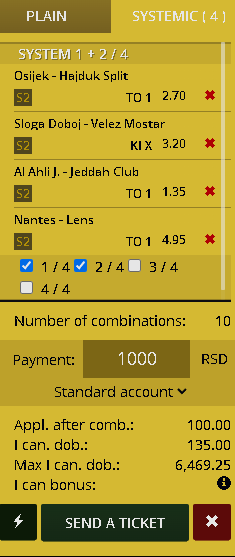
What Every Professional Does
Counter means to play a ticket on one of the two possible outcomes of a duel so that on one of the two tickets we have a 100% hit (if on the first, i.e., basic ticket, you played 1, then on the single ticket you will play counter double chance (x2) or if you played 0-2 goals on the basic ticket, on the single ticket, i.e. contribute you play 3+).
What do you achieve by doing this? You achieve that if your main ticket falls, the ticket where you countered wins you money.
Example:
Main Ticket:
Bet: 100$ Odds:32 Win:3200$
You have one more match left to win this ticket, you played 1X (Home team or Draw at the end of the (football)match), on that match you can play one more ticket, where you bet on 2 (Away team win) (Where for example odds are 2,40), so you bet 1000$ there.
Your second ticket:
Bet: 1000$ Odds:2,40 Win:2400$
This way even if your last match falls you will win money.
Strategies That my Friends Who Make a Living From Betting Play
First ticket (according to Janko), a B.Sc. philosopher, who claims:
“Absolutely everything is relative, except relativity itself, which is
absolute”. Man plays with thoughts and words, and it’s not that he’s not right.
You find 3 teams that both as hosts and as guests very often finally play X. Week after week you play the same 3 teams regardless of who and where they play that the final outcome will be X (odds 3.00), but by increasing the bet.
You can, in the beginning, invest more or less money and also increase the amount you invest every next week at a faster pace. If you like the system – make YOUR own calculation and try it.
A lot less profit but much safer, I found success in this strategy by playing it with only one or a maximum of two pairs. When I played with three, I only managed to win on the 27th ticket. I needed a big bank to reach my goal.

The second ticket (according to Marko), now my godfather, and once inseparable in the game 2 against 2 on small goals:
The principle is the same, but it differs from the previous one in a shade (the winnings are bigger).
You will find 3 teams that often play both as hosts and as guests:
More goals in the first half (1>) where the odds are 3.45-3.50, we play again from round to round. You invest at the same rate as with the previous system, so:
a) If you happen to win in the first round, then your winnings are 41.06 x $100 = $4,106 and then you continue playing from the beginning.
b) If it happens that the ticket passes only in the seventh round, then the winnings are 41.06 x $250 = $10,265, and from that, you subtract the total amount invested until then = $1,175. So you get NET earnings, which is 10,265.00-1,175.00 = $9,090.00
I haven’t played this strategy yet but it seems easier than Janko’s strategy, it also has better odds. Be aware that for these strategies you need to have a big big budget to cover all the steps until you win.
The third ticket (according to Papa), the blues master, the inevitable “problem”, from the basketball days, in the 1-on-1 game.
There are some players who, like Papa, have been playing for years according to the principle: The fewer pairs – the less possibility to make a mistake(which is correct), so they find 6-7 home or guests and play 3 mix tickets with 4 pairs each. If the average odds for all these pairs is 1.50 and only one ticket passes, you have returned your invested money and earned a little (depending on how much you bet per ticket) because per ticket = 5 (4 pairs each with odds 1.50 average) average odds, Some with more money play only such simple systems and invest $1000 per ticket, If 2 tickets go through, there’s $10,000 for them. Very simple.
Fun Strategy that i Found on Internet
Surfing, and contacting players from all over the world, I worked out the following idea: For the vast majority of people who play (bet), relatively often it happens that they miss only one or two matches (so close and so far). Sometimes you are knocked down by only 1 goal (surplus or deficit), but you continue the game in the hope of winning in the next round. When it’s already like that, and it’s like that – what can be done better? You can play with time, don’t chase the result, and it will sooner or later – come into your hands. For this game, you need some knowledge, a little patience, and a little more money (but certainly not more than you spend on average per week at the bookmaker). What should be done? I suggest you find 10-12 teams, in whose matches more goals are scored in the first half relatively often (1>). From those 12 teams, make a choice of 8 teams, so that one week you have 4 teams for this type of game and the next week another 4 teams (when some are home, others are guests and vice versa), so you can play every week.
What to do?
The first time you play this type of ticket, you pay $100. The second time you pay $125 on a ticket with the same 4 selected teams. Third-time deposit $150, etc. I only gave this as an example, I recommend you playing with less money ($ 1-10), considering that this is just a system for entertainment.
I recommend you to do this with a double (Two matches) as it greatly decreases the risk even though the ending profit is smaller.

Internet Betting Terminology
This is a list of the most common terms you can find on betting sites and online bookmakers that you probably aren’t 100% sure what they mean.
Accumulator
An accumulator is a combination of pairs where all pairs must be hit to win a bet.
Asian Handicap
It is used to balance the two sides and prevent the game from being tied.
A banker
A banker is a pair that you feel is safe and that you trust to be correct.
Bookie
The bookmaker. The bookmaker or the person who takes your bets. Also known as the ENEMY.
Dog
Underdog. A team with a much weaker reputation, lower leagues, etc.
Double
A bet consisting of two matches.
Favorites
The team that the bookies think is most likely to win. They usually have lower coefficients than they should.
Fivefold
A bet consisting of five games.
Form
Form.
Fourfold
A bet consisting of four games.
Home Dog
The home team is also the underdog.
Home Favorites
The home team is the favorite in the match.
Lengthen
When bookmakers give better odds to encourage players to bet on an event.
Heinz
Six pairs that combine into 15 doubles, 20 trebles, 15 fourfolds, 6 five-folds and 1 sixfold bet. A total of 57 bets.
Lucky 15
Four pairs, with four singles, six doubles, four trebles, and one fourfold bet, for a total of 15 bets.
Lucky 31
Five pairs, with 5 singles, 10 doubles, 10 trebles, 5 fourfolds, and 1 fivefold bet, 31 in total.
Lucky 63
Six pairs with 6 singles, 15 doubles, 20 trebles, 15 fourfolds, 6 five-folds, and 1 sixfold bet, 63 in total.
Odds
Coefficients.
Parlay
American name for the accumulator.
Patent
Three matches, with 3 singles, 3 doubles, and 1 treble bet, a total of 7 bets.
Sixfold
A bet consisting of six games.
Super Heinz
Seven pairs with 21 doubles, 35 trebles, 35 fourfolds, 21 five-folds, 7 six-folds, and 1 sevenfold bet, 120 in total.\
Treble
Three matches bet.
Trixie
Three pairs, with three doubles and one treble bet, 4 bets in total.
Probability
Here you can see how the probability of certain outcomes is calculated from betting odds. We will show it on the example of a football match.
1st step: Calculation of profit indicators
The profit indicator shows how much the bookmaker earns every time it pays out 10 dollars.
Example:
1 – Lens Wins, Odds 2.70
X – Draw, Odds 2.90
2 – Parma Wins, Odds 2.50
Profit indicator = 1/2.70 + 1/2.90 + 1/2.50 = 0.3704 + 0.3448 + 0.4 = 1.115
In this case, the bookmaker earns $11.15. for every $10 you pay out (of course, in case of an even schedule of payments).
2nd step: Calculation of the payout percentage
If the bookmaker receives bets in the correct ratio, then the percentage of payout to the players will be
Payout % = 100% x 1/profit indicator
Example:
Payout % = 100% x 1/1.115= 89.69%
3rd step: Calculation of the probability of the outcome
In the last step, the bookmaker’s price for each of the three possible outcomes should be multiplied by the payout percentage. That eliminates part of the price, which is the bookmaker’s profit and leaves an element of probability.
This calculation shows how to calculate the probability from the odds obtained in the bookmaker. Of course, that probability doesn’t have to be exact. When you calculate a different probability, then you have a good chance to put your money in the bet.
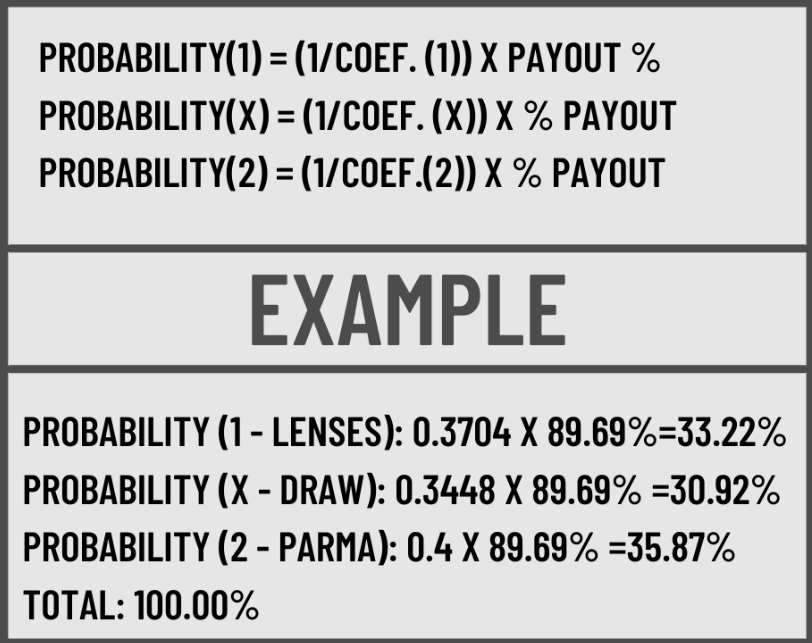
Notes
Notes: Slease read each sentence carefully, because I have not given a lot of it in the form of a schematic display of the ticket, it is just stated verbally as a reason you can note!
- Before making a final tip: look at the bookmaker’s odds; if the odds in Italy (series A) for 3+ are 1.50 and the odds for the other pairs are around 1.70 then that is – the right pair for the game 3+ (because the bookmaker will not give the odds 1.80 for a pair where most likely expect a lot of goals) look at the goal difference between the host (when playing at home) and the guest (when playing away), so if both teams in both cases give and receive more than 3 goals, then it is realistic to expect that they will play now as well for 3+. look at the situation in the table because the first team, that is, the one that almost secured the first place can play with the outsider: with few goals or sell a point or two, (because nothing bothers them) and thus destroy your ticket.
- Look at the TV set during some news and see what the weather forecast is for the part of the continent where the game you are interested in will be played (if rain is expected, the pitch will be wet and difficult to play on).
- Pay attention to the rise or fall of a team’s form recently. look at how the host played the previous game as a guest (if he was “destroyed”, then expect him to do his best now, to redeem himself in front of his audience, and to win.
- See who the referee is because no matter how he should be objective, he will always sympathize with someone more and someone less, so he will damage the other one at least for an out, a foul, a corner.
- Be careful if any key player is absent due to injury.
- The game of goals is one of the most interesting games and you should become an expert in it (it can bring you a lot) because in this game you are not interested in whether the host will score more goals and win, or the guest, rather, it is only important that there are as many of them as you like, 0-2, 3+, 4-6, etc.
Post Analyzation and Instagram Engagement Groups
Introduction This guide is not as organized as the previous ones because these tips and techniques are in random order.
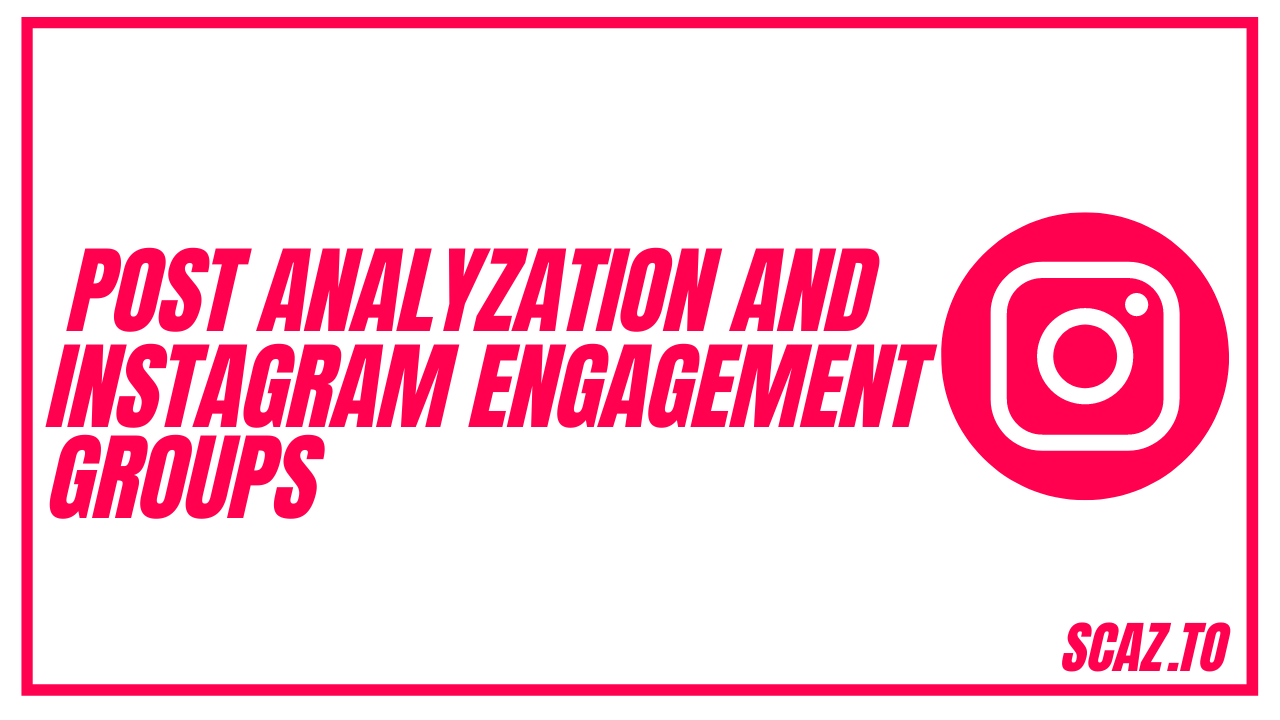
Post Analyzation and Instagram Engagement Groups
Introduction
This guide is not as organized as the previous ones because these tips and techniques are in random order. Some of the tips will apply to you and some won’t. Hopefully, you will be able to pick up some tricks and tips on how to take your Instagram to the next level.
Post Analyzation
Analyze your Post-Performance so You Can Determine if it’ll Go Viral or Flop
Here’s the thing: If you have a few thousand followers, you should be able to predict if it’s going to go viral within a few hours. A smaller audience is harder to judge. But if you have over 50,000 followers, you should be able to predict with about 90% certainty how well a post will do within 15 minutes of posting it.
If it’s not doing well after 15 minutes, it’s usually not good news. Remember, your goal with every post is to keep your current followers happy (positively engaged) and attract new followers. If you can’t do the first, you probably can’t do the second. Engagement creates growth. No engagement = no growth.
Why is tracking performance important? The first few minutes after you post are incredibly important. Instagram ranks the initial performance of your post, and compares it to the performance of similar accounts that your followers follow. Remember, Instagram’s goal is to immerse users in as much content as they think they’ll enjoy. They do this by placing the most engaging content at the top of a person’s timeline. If Instagram determines that your content isn’t engaging, then good luck trying to reach your followers – it’s not going to happen. It’s important for you to get real people to like and comment on your post as soon as you post it, so that it has maximum reach. Buying fake likes and comments won’t do the trick.
So what does all of this have to do with tracking performance? Well, think of it this way. If you consistently post bad content that doesn’t engage people, you’re going to lose a ton of followers.
- People won’t see you on their timeline, and they will naturally unfollow you over time.
- People finally see you on their timeline for the first time in a few weeks, and they think, “Why am I following this person? I don’t keep up with them anymore.
- People see your content, dislike it, and then unfollow because your content doesn’t engage or interest them.
In short, having engaging content is a must if you want to consistently gain followers. Not only will it bump you higher in your followers’ timeline, but you will be more likely to:
- Land in the Explore Tab.
- Be shared with friends.
- Rank in specific hashtags.
So, if you can determine with 90% certainty that a post will flop, you can delete it before it does any damage, or you can be aware of it and make the right changes to create engaging content.
So, should you delete poorly performing posts? No. You don’t have to, but tracking performance allows you to learn more about your account. Tracking puts your account under a microscope, and you’ll see trends you didn’t know about before.
For example, let’s say you track the performance of your latest post. Let’s say you normally get two comments within 15 minutes, but today you got 20 people who commented within 15 minutes of posting, asking what song you used in your video. Nothing else is different after 15 minutes – you have the same number of views and likes as usual, but you have 18 more comments than usual.
You find that the massive influx of comments within 15 minutes of posting helps you get more views, likes, and comments than you normally get that day. So how do you learn from experiences like this? What should you do from now on after you notice this trend? You now post every video with a different caption that asks for comments in some way – so you can at least test this theory you have. You start posting captions that say things like:
- “Comment your birthday to find your birthday twin!”
- “What kind of video should I make next?”
- “fI uoy nac daer siht, tnemmoc ruoy eman!”
- “Tag 3 friends for good luck!”
- “The first 20 people to comment will get a follow!”
(now obviously these are super cheesy, but you can tailor this to your niche)
And wallah! You have noticed a significant increase in post performance once you have the initial influx of comments. Now you can milk this for all its glory.
My Results
I like to track the first 5, 10, 15, 30, 60, and 120 minutes after a post. A typical good post for me (100k+ views in 24 hours) gets about 3,500 views in the first 15 minutes, 7,000 views in the first 30 minutes, and 14,000 views in the first hour. A great post for me will get about 3,500 views in the first 15 minutes, 10,000 views in the first 30 minutes, and 20,000 views in the first hour. An amazing post for me will get about 4,000 views in the first 15 minutes, 25,000 views in the first 30 minutes, and over 50,000 views in the first hour.
9 times out of 10, my calculations won’t be accurate, and I’ve come to the conclusion that’s just one of the mysteries of Instagram. Sometimes I get a post that gets 3,000 views in 15 minutes and somehow ends up with 20,000 views in 60 minutes. Sometimes I get 3,500 views in 15 minutes, but only 10,000 views in 60 minutes.
What I Recommend You Do
For the next week, write down on a piece of paper (or in an Excel spreadsheet) exactly what time you post, what you post, and then how many likes, views, and comments you get every 15 minutes for the first hour, every 30 minutes for the next two hours, and then every 6 hours after that. This will give you a good indicator of what performance you can expect at any given time during your posts. If you do this on every post for a week, you should be able to pinpoint exactly when a post is going to go viral.
You will also know when to delete poorly performing posts if you want to, but this will vary from account to account. Personal accounts probably don’t need to delete posts as often (unless the response is overwhelmingly negative) because that’s just you being you. You’re being “real” with your followers.
However, if your goal is to post frequently and land in the Explore as much as possible, then you need to have a game plan for what to do when a post flops. Sometimes it’s best to just let it play out and see how it performs over the course of a few hours. Other times, it’s best to delete it immediately and try again in a few minutes with a different image or video.
Use Elite Telegram Groups
Use Elite Telegram Groups for Insane Growth
Telegram groups are great, but they’re only great for certain types of Instagram accounts. For example, if you own a laundromat in real life and decided to start an Instagram account to promote it, a Telegram engagement group wouldn’t be your best bet. These groups are only ideal for accounts that consistently post viral content.
What are they?
Telegram groups are a little different from regular Instagram DM groups. Normal DM groups are limited to 15 people, and each DM group varies drastically in terms of rules, times, likes, comments, etc. In a normal DM group, you typically send posts to be liked and commented on by other people in your niche.
Telegram groups, however, are not niche specific. They’re a large collection of a bunch of random accounts all posting at the same time in an effort to not only land on the Explore page, but to go massively viral.
How They Work
First of all, there is a huge difference between getting likes from these Telegram groups and buying fake likes. Fake likes won’t help you land on the Explore page. Likes from real, large accounts (often called power likes) will. Power-likes trick Instagram into thinking that your post was SO GOOD that big accounts took the time to like it. Because huge accounts with real followers like it, Instagram wants everyone to see your post.
Now, power likes alone won’t make you go viral. Your posts have to be viral. When you post, Instagram will test your post in the Explore Feed. If people are scrolling past it, not looking at it, not liking it, not commenting on it, Instagram will remove it from the explore feed. If your followers are scrolling through it, not looking at it, not liking it, not commenting on it, Instagram will push you down on your own follower’s timeline. Your posts have to be engaging to get the benefits of Power Likes, and your posts have to be engaging to be seen by your followers. That’s how it works.
Typically, these groups contain hundreds of different people and hundreds of different accounts all participating in the same round (or posting time). Here’s how they typically work:
1.) All users will be invited to 2-3 chat rooms once they are accepted into the group.
- A general chat, discussion room
- b. A rounds room (likes)
- A rounds room (comments)
2.) In the rounds room, every 30-50 minutes (depending on the group), an automated message (or bot) will instruct members to “drop users”. This means you must comment your Instagram username so it can be added to the round in session. So, if my Instagram username was “@ViralVideos”, I would comment “@ViralVideos” immediately after seeing this bot message. This is often called “the username drop”. It is very important to comment your username as soon as that message appears. This will allow you to receive likes (or comments) before anyone else. The sooner your account receives likes after you post on Instagram, the more likely it is that your account will go viral.
3.) Group members are usually given 10-30 minutes to drop their usernames. When the username drop time expires, the bot will post all usernames that have dropped during that time.
4.) Members then copy and paste the list of dropped usernames and send it to themselves on Instagram via DM. Since all usernames start with an “@”, it’s very easy to click on a username, like, go back, click on a username, like, go back, click on a username, like, go back, etc.
5.) When you are done liking the photos, go back to Telegram and comment “D @yourusername” so other people in the group know that you finished the round. Members are usually given 30-50 minutes to like (or comment on) the dropped usernames. Failure to tell others that you’ve completed the round (or to like it) will result in you being kicked from the group.
Here are a few screenshots so you can visualize how it works.
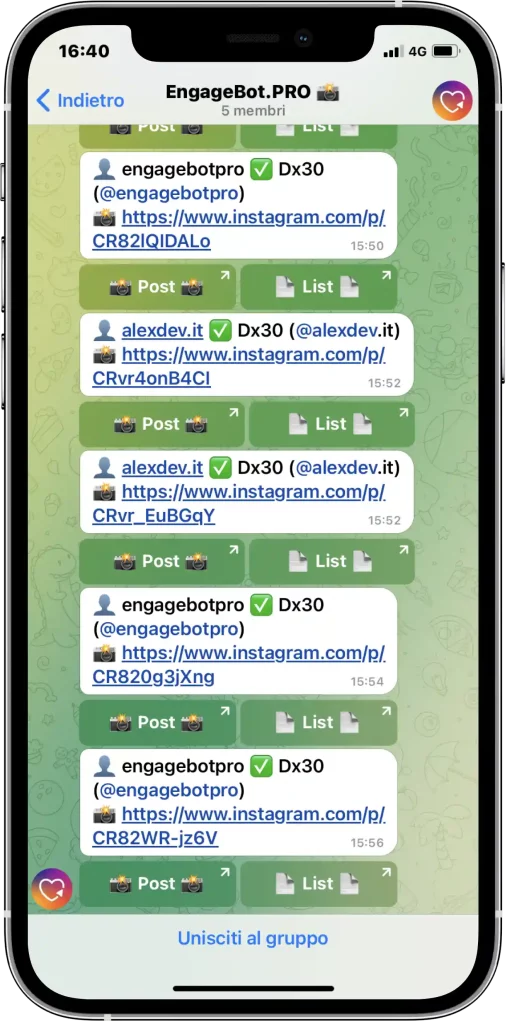
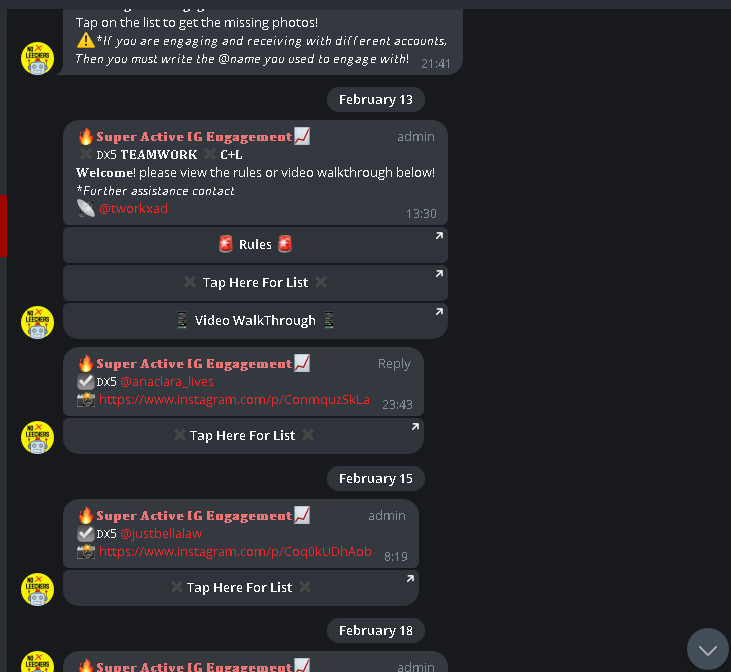
Getting In
Unfortunately, there are usually requirements to be accepted into the elite groups. Most of them have a follower minimum (to ensure that only high quality accounts are liked by other high quality accounts) and an engagement minimum.
Typically, these elite groups are by invitation only. For a few years, there were two large telegram groups, Xplor and SYNC. Xplor was open to any account with more than 80,000 followers, and SYNC was open to any account with more than 800,000 followers. They have recently been discontinued, but many other similar groups still exist.
Don’t meet the minimum for these groups? No problem. Sometimes you can find sellers in Telegram Marketplace chats who will drop your username in rounds for a fee. I’ve also seen users buy active Instagram accounts with over 80K so they can participate. There are other groups with lower minimums, but I don’t know how effective they are.
Other Tips with Telegram Groups (and Instagram in General)
1.) It’s recommended that you follow everyone you trade likes with. If you follow the people you trade likes with, Instagram will view your account more favorably than if you like posts from an account you don’t follow. Instagram sees your likes as more natural, which is what you want.
2.) There are peak times to post to these groups. Although I would recommend trying a few different times to post on Instagram to see if there are any patterns within your followers, the peak times to post are 9 am, 12 am, 3 pm, and 6 pm US EST time.
3.) Your goal should be to limit the likes you give out and maximize the likes you receive. If you look at the screenshot I shared above, you’ll notice that many members are engaging with other users – this is not by accident. Often, members will receive Likes on an account they want to grow, and give out Likes on an account they have already grown. Most of these groups will allow you to drop a username that is below the requirement ONLY IF you complete all the likes in that round with a username that is above the requirement. This allows you to grow an account very quickly. This is a very common trend in like-for-like Instagram growth.
Instagram will also view your account less favorably the more likes you give to non-niche accounts. Instagram will have a hard time trying to categorize your account; therefore, your exposure on the Explore page could be limited. Although it is not necessary for most accounts in these groups to give and receive likes on the same account, larger accounts will use burner accounts (usually dead, inactive accounts) to help smaller accounts grow.
4.) Do your DM likes before you do your group likes. When I do telegram likes, I make sure to do my DM likes before I do the telegram likes. I’ll get the Telegram likes no matter what I do at that time, but I won’t get the DM likes unless I message the people in them. After I post my picture or video (one minute before the list is published on Telegram), I share my post with everyone in my DMs so that I can get the maximum amount of exposure for my posts. If you can, it’s best to do your DM likes ahead of time so that everyone in your DM groups will be waiting to return the favor to you.
5.) Stay away from comments. For some reason, and this is just my speculation, Instagram doesn’t seem to be a big fan of accounts that do comments in their engagement groups. I’ve seen better growth by avoiding comments. It also saves a ton of time. Try it for yourself and see if it works better for you.
These groups can work insanely well if you know what you’re doing. This is probably the most common growth method for larger accounts. Your chances of going viral are much higher when you use these types of groups.
How To Become a Freelance Web Designer Guide
Many students and recent college graduates are now entering the freelancing industry in the hopes of doing freelance work and
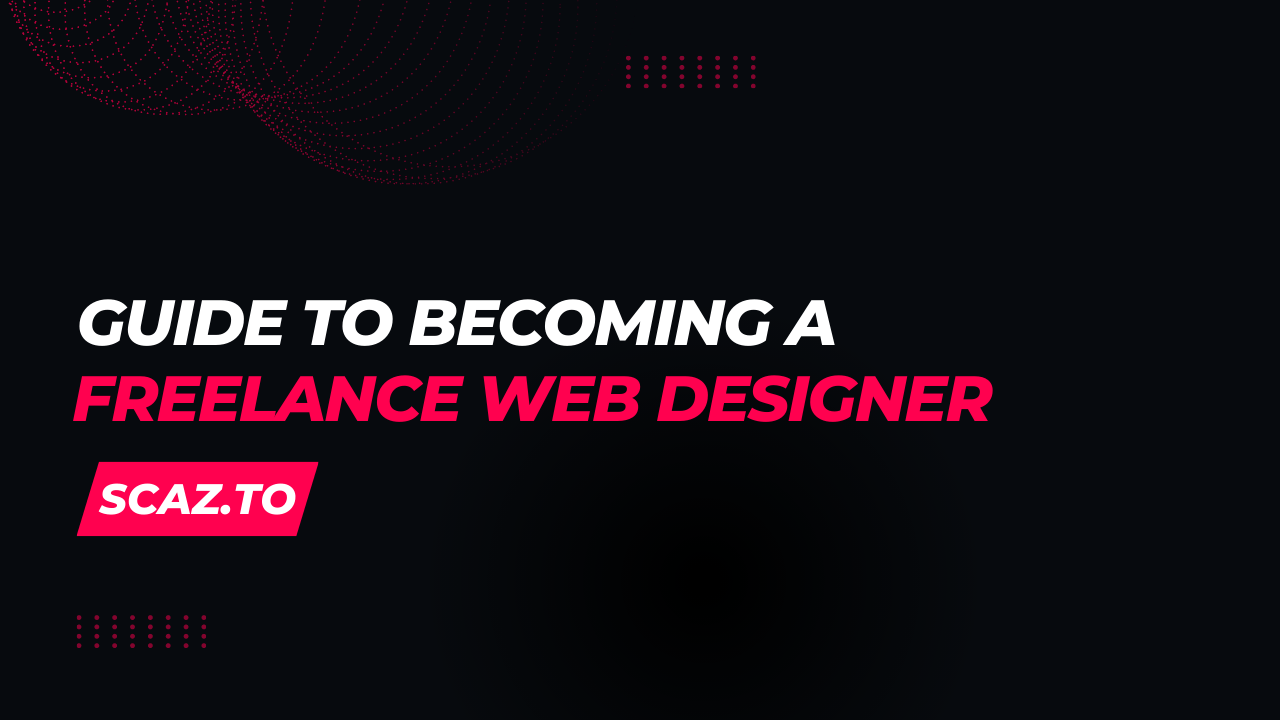
How To Become a Freelance Web Designer Guide
Many students and recent college graduates are now entering the freelancing industry in the hopes of doing freelance work and earning money in their spare time.
This article is dedicated to all teens, adults, and anyone else looking for a solid actionable plan to get started as a freelance web designer.
In this article, I’ll walk you through a simple, easy-to-follow, step-by-step plan for getting started as a freelance web designer, along with helpful tips on landing clients and making some real money.
It’s the same strategy I used to start my own web design agency. Continue reading to learn how I did it.
How Much Do Web Designers Make?
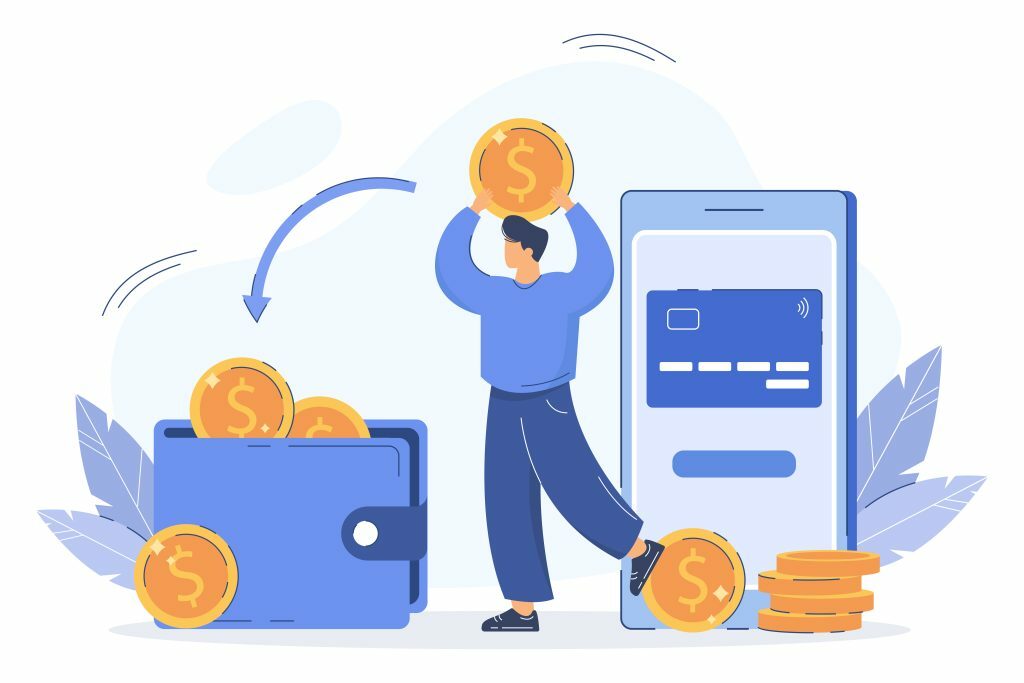
You’ll be relieved to learn that web design is one of the highest-paying professions in the freelance markets if you’re unsure about starting a freelance career in this field.
In fact, some independent web designers earn more than $5000 creating simple WordPress websites. If they can do it, you can too.
Having said that, I should also point out that the freelance market for web design is very crowded. Today, anyone who has even a basic understanding of HTML and CSS refers to themselves as a web designer.
Therefore, you should concentrate on finding a micro-niche in the market. Similar to specializing in designing products or landing pages for businesses.
Your chances of success will increase if you can identify such a lucrative niche.
Step 1: There Are No Shortcuts To Successful Freelancing
Accept, first and foremost, that freelancing requires a lot of effort and time before you can start making money.
You will need some time, probably a few months, to fully grasp the ins and outs of freelancing and begin earning money. So get ready, and get into the mindset of a freelancer.
You won’t succeed if your only motivation for becoming a freelancer is to make quick cash.
To become a freelancer and make it through the arduous process, you must have patience and be passionate about what you do.
Step 2: Web Developer or Web Designer?
People confuse these two terms all the time.
Web Designer – The person who’s responsible for the front-end side or the look and design of a website or web application. A web designer arranges all the elements of the website in the right order, codes the style sheets, and creates the front-end side of the website.
Web Developer – The person who does the heavy lifting of building the back-end side of a website, such as developing the algorithms for website functions like checkout systems and user interactions.
Web design is a creative medium in itself. You can’t just look at other websites and design new ones that look like them.
According to research conducted by FastPrint, 72% of respondents believe that most websites look the same. You need to learn user experience design and have a creative mindset to become a successful web designer.
Becoming a web developer is the complete opposite. You need an analytical mindset to create accurate algorithms and the ability to build systems according to user workflows.
Be clear about which path you want to take.
Step 3: Assume You Know Nothing
You probably feel pretty confident about your coding skills after visiting all those “learn to code” websites and taking lots of HTML/CSS courses.
But how much do you know about User Experience Design (UXD) and web usability?
Anyone could easily become a coder, thanks to all the great free online resources available today. But that doesn’t necessarily make them qualified for freelancing.
Website design requires a lot of creativity and knowledge of how the web works, unlike web development.
Two of the skills you need to master to become a professional web designer are user experience design and web usability. These two skills will allow you to design more engaging websites. They will also help you understand the psychology behind web design.
For example, have you ever wondered why all websites have their main menu at the top? Why do most landing pages have their call to action (CTA) in the top half of the page?
The answer to this is simple: That’s all part of UXD.
Step 4: Learn more about domains, web hosting, and servers

When you take on a project to design a website for a business, most of your clients will expect you to buy a domain, and hosting plan, and complete the setup of their website.
It’s up to you to provide a complete service to your clients. When looking for a hosting platform, the smart move is to find a provider that offers both domain registration and hosting.
You can also learn how to buy and configure a domain name at a separate domain registrar. How to maintain web hosting and work with FTP clients. Learn how to manage and maintain servers.
Step 5: Learn Graphic Design
Include graphics and illustrations, such as logos and animated characters. It’s a must for websites today. Clients are going to ask you to take care of these as well.
To design them, you can team up with another freelancer.
But if you learn how to do these things yourself, you’ll make more money. Find a Photoshop tutorial and learn how to design logos. Learn how to design icons and take a basic UX design course. In the long run, you will be well rewarded.
Step 6: Build up your portfolio
When a client comes to you for website design, one of the first things they’ll ask you to do is show them some examples of your previous work.
Here is where you show off your killer designs. If you don’t have anything to show your customers, get to work and design some great websites. If you have to, do some free work.
Design a great theme and post it online for free. Or contact companies and offer to do a free website design for them.
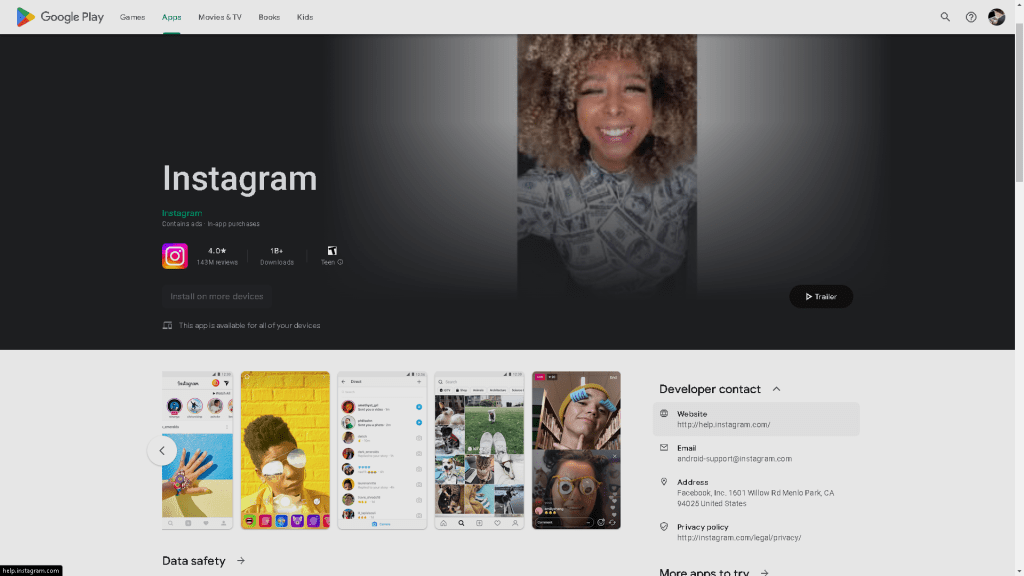
Here’s what I did:
- I searched for game and app developers who didn’t have a website on Google Play and the Steam Store.
- I sent them an email explaining why they needed a website. I offered to do it for free.
- A few companies responded and I built their awesome websites.
After that, you can show off your work on a website of your own, or you can use a site like Behance.
Step 7: How To Price Your Services
Different web design projects are going to require different amounts of work and different amounts of time. So it can be a little difficult to figure out the perfect price for your web design projects.
But here’s what you can do if you want to get a basic idea of the right price.
- Go online and find the email or phone number of your competing web design company.
- Pick up your phone and give them a call or e-mail.
- Pretend to be a customer and ask for a quote on the design of your fake website.
Large web design agencies have teams of designers working for them. That is why they charge so much to get a project done. You can take advantage of this because you’re working alone.
Try to get a reasonable price for your project. Neither expensive nor cheap. A price that makes clients say YES, but not suspicious.
Step 8: Best freelance sites to find work
If you can, avoid online freelance platforms. These sites are too competitive, and getting clients is difficult.
If you have no choice, choose a less competitive freelance site to offer your services. Two of the best sites for web designers and developers are PeoplePerHour and Toptal.
Step 9: Take Your Business Offline
You’ll have better luck finding customers if you go local.
Did you know? Over 58% of small businesses still don’t have a website.
In fact, it works better to go door to door and cold call than it does to find work online. I got many clients this way.
This is what I’ve done:
- First, I walked the streets. I wrote down the names and contact information of small businesses and shops that didn’t have websites.
- To make sure they didn’t have a website, I went home and looked them up online.
- Then I wrote a small document explaining all the benefits of having a website.
- I printed the document and mailed (snail-mailed) it to those stores’ addresses.
- I waited a week for them to respond and then called them, referencing my letter and asking if they’d like to meet to learn more.
- 2 out of 5 times. That’s how well it worked.
Step 10: The Next Level
Once you get going, you’ll start getting referrals and new projects.
To help people recognize you and the quality of your work, it’s time to promote yourself as a brand.
Consider expanding your freelance business if you’re getting more clients than you can handle. Hire some interns. It will make your work easier.
It’s going to take a while for you to go through all of these 10 steps, but you’ll get there if you’re consistent enough.
Also, keep in mind that web design is a huge industry that’s constantly evolving. So, subscribe to all the web design blogs you can. Keep learning new things.
Beat Your Competition By Signing Up With New Freelancing Sites
Freelancing is a competitive business. Some find it hard to believe that working from home on a computer takes so

Beat Your Competition By Signing Up With New Freelancing Sites
Freelancing is a competitive business. Some find it hard to believe that working from home on a computer takes so much effort, but only freelancers know the real struggle behind the screens.
Millions of freelancers in various fields compete for work through sites like Freelancer.com and UpWork. The competition is fierce, and offering lower prices than the others is no longer an option to win clients. So you need to be on the lookout for new opportunities.
When Envato Studio announced the launch of the new content writing category on the platform in early March 2015, I was excited to participate and offer my services. I was one of the first freelancers to join this new category, offering my services from day one of the launch. Jobs started pouring in from day one and it’s still one of my main sources of income today.
Thanks to the very low competition, I was able to jump to the top of the category on Envato Studio in just a few days and was even featured as a recommended service in the Content Writing category.
So always be on the lookout for new freelance sites to join and offer your services. Be the first to join brand-new sites and get a leg up on your competition. Here are a few new and growing sites that can help you get started. Envato Studio was my breakthrough, yours could be on this list.
Truelancer

Truelancer is one of the brand new freelance sites that’s on the verge of becoming the next big platform for outsourcing work. Truelancer gives you the opportunity to both sell your services as gigs, like on Fiverr, and apply for projects posted by clients.
You can join the site for free and start offering your services. Truelancer charges a 10% service fee, which can be reduced to 3% if you’re willing to subscribe to a paid membership plan. Your payment can be made via PayPal, Payoneer or bank transfer.
Many freelancers are still unaware of this new platform. This is your chance to shine on the web and start your freelance career.
Toptal
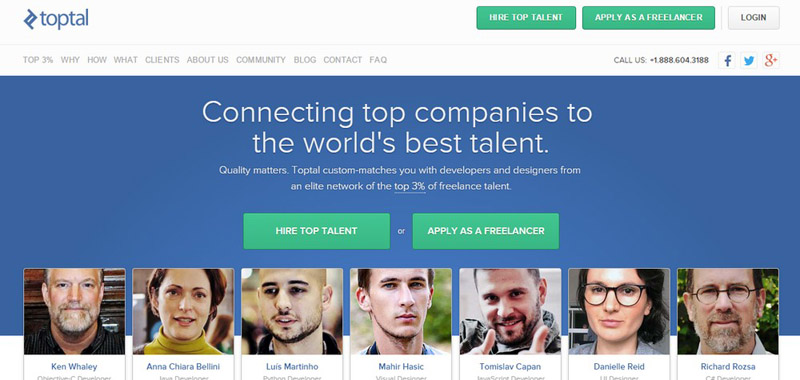
Toptal is not really a new freelance site. It’s been around for about five years. But the site is quite restrictive when it comes to accepting new freelancers. Similar to Envato Studio, Toptal only accepts experienced freelancers with a solid background. According to the site’s description, Toptal has developed a rigorous screening process to identify the best and only accepts the top 3% of freelance talent.
If you’re able to get your account approved by Toptal, you’re guaranteed to land some quality, high-paying work from reputable companies around the world, such as Airbnb, Zendesk, and Artsy. If you’re a freelance designer or developer, Toptal is the ideal place to grow.
Demand Media
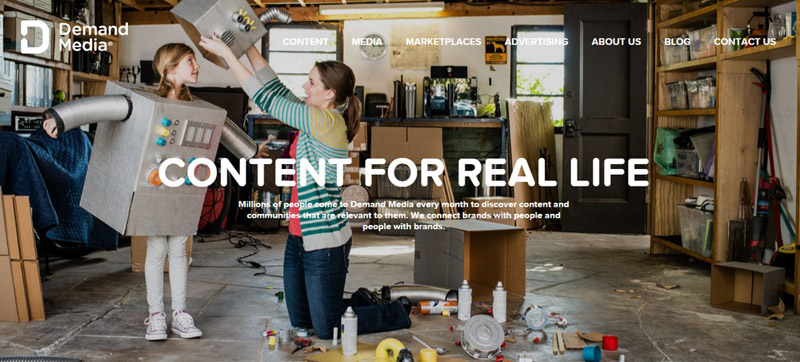
Demand Media is a network that creates content for popular brands like USA Today, Radioshack and more. The site has an exclusive platform called StudioD for creative freelancers to join and complete projects offered by their clients.
The great thing about this site is that you don’t have to go out and find clients on your own. The site already has a portfolio of brands working with you, and Demand Media will bring clients to you whenever they need your expertise.
Writing, video editing, photography, design are some of the categories you can work with on this site. However, you will need an established background in the freelance world to be accepted into this new network.
College Recruiter
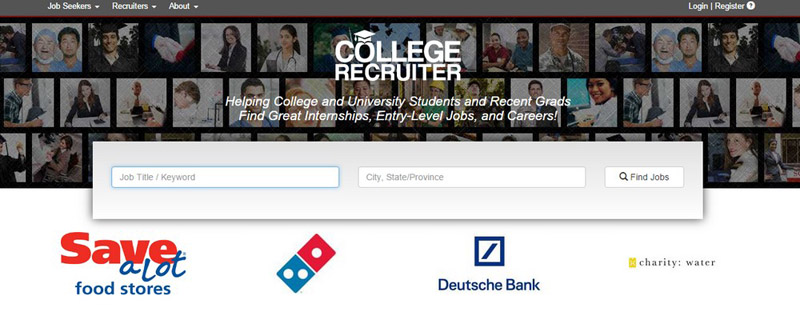
According to one survey, “nearly nine out of 10 college graduates with a first or second class degree see freelancing as a lucrative career choice”. College Recruiter is a freelance site exclusively for college students and recent graduates, especially in the US, to help them get started quickly in their freelance career without having to deal with a lot of competition.
Starting with a niche and exclusive site like College Recruiter will give you a head start on your freelance career. It even allows you to participate in internships and apply for entry-level jobs offered by colleges, universities, and top employers.
Freelancing is now considered as serious a profession as any in the world. It’s not only a great way to earn more for your skills and get recognition, but it also gives you the proper value for your experience while giving you the financial freedom and independence to work for yourself at your own pace.
Don’t take my word for it, if someone makes you doubt the future of freelancing or starting a freelance career, just show them the results of these studies and surveys.
“The median income for all respondents is $10,001–$20,000. A little over 19 percent of respondents made more than $50,000 last year, including about five percent who earned six figures,”
Study by Contently. “Over 34% of U.S. Workers are Freelancing,” – UpWork “The 53 million Americans who are freelancing already contribute more than $700 billion to our national economy and help U.S. businesses compete and find the skills that they need,” Fabio Rosati, CEO of Elance-oDesk.
It’s never too late to upgrade your career path.
Begin Guest Blogging Before You Begin Your Freelancing Career
Before I began accepting online freelance writing work, I spent about a year working on my own blog, scaz.to, creating
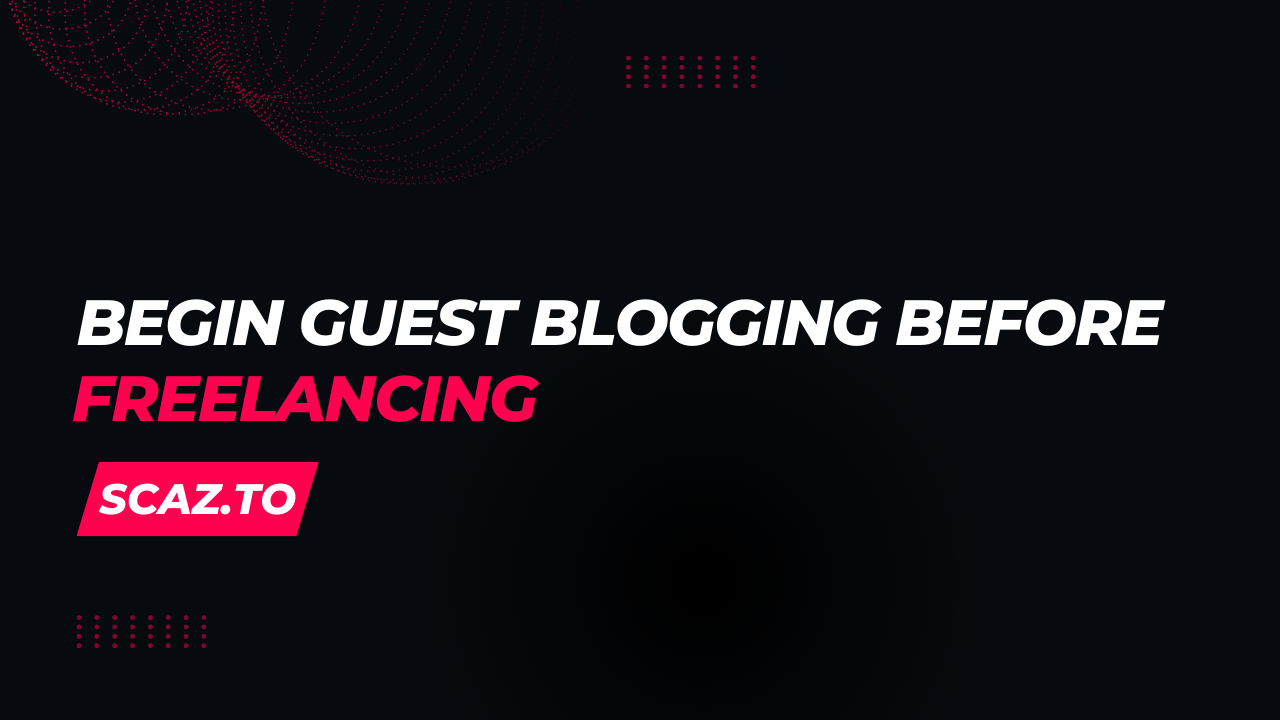
Begin Guest Blogging Before You Begin Your Freelancing Career
Before I began accepting online freelance writing work, I spent about a year working on my own blog, scaz.to, creating regular content on SEO, social media, and everything else related to making money online. By the time I signed up for a freelancing site, I was a seasoned writer with a wealth of experience and knowledge of everything going on the internet.
This fantastic qualification assisted me in landing almost every job (3 out of 4) that I pitched on Elance. Some contractors even contacted me directly via email to hire me. Simply mentioning my background and website on the profile was enough to get me invited to a slew of interviews every week.
Establishing your background and reputation is, without a doubt, one of the most important aspects of beginning a successful freelancing career. Of course, you could have figured it out on your own.
My website and the experience I gained working on blogs and articles undoubtedly aided me in obtaining a large number of clients. You can also use the same technique to attract more clients. The best part is that you don’t have to spend years developing your own blog to show your clients because there are already a plethora of well-established websites that allow you to publish your articles for free.
What Is Guest Blogging?
Guest blogging is simply a way to gain free publicity and recognition for your work. You write an article for a website, and in exchange, they will publish it for free with an author byline that includes links to your website and social media pages. Here’s how the process works:
- You contact a reputable blog, such as Mashable or Entrepreneur.com, that accepts guest posts.
- Pitch your idea for a fantastic blog post for them to publish on their site.
- Once you’ve received their approval, send your article with an author byline that describes what you do and links to your social media profiles.
The Quick Sprout blog has a comprehensive guide to guest blogging. It will help you understand what you can accomplish by writing for other blogs, how to write a guest post, and pitching to a website.
Many bloggers use guest blogging to increase traffic to their websites and build backlinks to boost their search engine rankings. However, freelancers can use guest blogging to boost their reputation and gain more clients by showcasing their skills.
How it Helps to Build Your Reputation
In exchange for sharing your expertise on these websites, you will not only receive a flood of traffic to your social media pages or personal website, but you will also be able to improve your online reputation. So the next time a client asks to see your previous work, simply send them a link to your Mashable article, which will blow their mind.
Most freelancers who pitch for jobs on sites like Upwork and Freelancer.com lack relevant experience or evidence of their work. This, of course, leads to decreased confidence and lower pricing rates.
If you can take the time to publish at least three or four guest articles on reputable websites, you will have a huge advantage over the rest of the cheap freelancers who are just waiting for clients to fall out of the sky.
Remember to include an eye-catching bio that describes your skills, profession, and where people can hire you. If you have a personal website, include a link to it. Some websites include a photo of the contributor with their publication, so send them a great photo to go with your article as well.
Even millionaire entrepreneurs like Richard Branson, Mark Cuban, Bill Gates, and Neil Patel, believe it or not, frequently publish guest posts on popular websites to gain more exposure for their businesses and products. So why not use the same strategy to double your earnings?
According to research, writing on a regular basis can improve your creativity, ability to think, and personality. As a freelance writer, I can personally attest to this because I still enjoy working as a writer.
How to Get Approved by A Great Website
It will be difficult to get approved by these popular websites because they receive these requests on a daily basis. The key is to keep your pitch brief and to pitch a unique article idea that they won’t be able to resist.
More importantly, don’t send emails to these sites like a machine. Make it personal. If possible, find the name of the person in charge and address them by their first name. Every week, I receive over a dozen guest blogging requests for my freshinfos.com website, and I ignore the majority of them because some emails sound too robotic. As if they’d sent the same email to 100 different websites. Don’t make the same error.
Here are a few excellent websites that welcome guest posts.
- Mashable
- Entrepreneur.com
- Inc.com
- Huffington Post
- Read Write Web
- Copy Blogger
- Social Media Examiner
- Web Design Ledger
- Shout Me Loud
- Write to Done
Do you require more sites to publish guest posts? Here’s a list of over 300 websites where you can guest post all year. This list includes sites from a variety of categories, allowing you to select one that is more relevant to your line of work.
As you might expect, the editors at these sites are among the busiest people on the internet. Every day, they receive hundreds of emails, the majority of which they ignore in order to save time. So, to get their attention, create a great title and a pitch for your suggestion.
Be bold and courageous, write your name in digital ink on the World Wide Web, and wait for the clients to start pouring in. Don’t stop at one article; keep publishing more and more content to increase traffic and your reputation.
5 Powerful Psychological Tricks for Getting More Freelance Clients
This may seem like an odd request, but I’d like you to imagine a Lucky Dwarf. Any of those Lucky
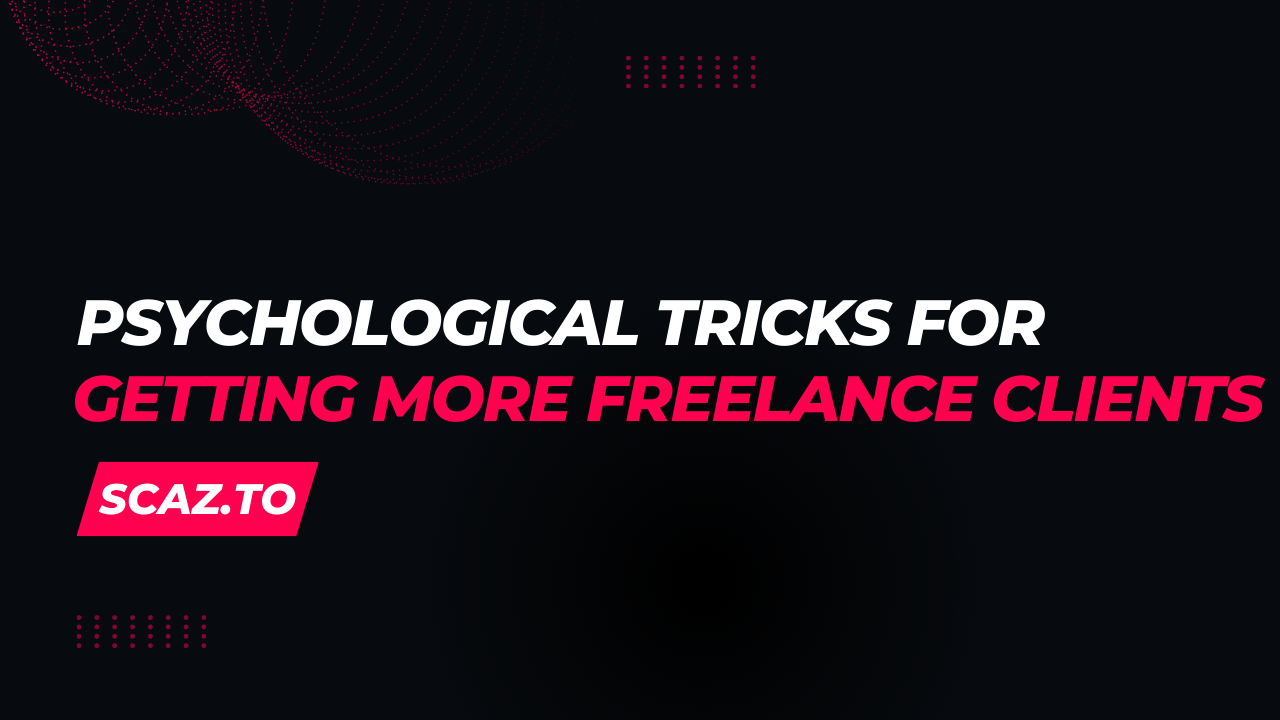
5 Powerful Psychological Tricks for Getting More Freelance Clients
This may seem like an odd request, but I’d like you to imagine a Lucky Dwarf. Any of those Lucky Dwarfs you’ve seen or met before. Got it? Good.
Now, quickly come up with a number between one and ten.
Let me guess: were you thinking of the number seven?
Don’t worry, I don’t have telepathic powers to read your thoughts. I was simply employing a psychological technique known as priming to trick your subconscious mind into thinking of the number seven by using two simple words “Lucky Dwarf,” both of which are commonly associated with the number seven (eg: lucky number 7, Snow White and the Seven Dwarfs). I learned this trick from Nick Kolenda’s book, Methods of Persuasion.
Did you know that 90% of your decisions, actions, emotions and behavior are initiated by your subconscious mind?
That book piqued my interest in psychology and the workings of our subconscious mind. As a result, I read a number of books on the subject, including Influence Science and Practice, Brain Rules, The Social Animal, and many others.
I’ll let you in on a little secret: I’m now using some of the tricks I learned to increase my chances of landing big clients, and it’s working great.
Do you want to know how? Then continue reading.
How to Influence Your Clients
Why do you think I use the color yellow for the theme of this website and my social media branding?
Did I just pick the color I liked best at random? Nope.
I chose this color because, according to color psychology, yellow has a strong effect on instilling feelings of confidence and optimism.
I wanted my visitors to feel optimistic about their freelancing careers and confident enough to take on the challenge of working from home.

I used some of these techniques when creating my profile on freelance sites.
“Blue is the most popular color among both men (57%) and women (35%), though men prefer it more. Men dislike brown the most while women dislike orange the most.”
If you plan to offer your services through a GIG site, such as Fiverr, Zeerk, or Envato Studio, you can use the same color psychology effects to establish trust and influence in your clients, causing them to choose you over other freelancers.
Another effective psychological technique is to explain what you can do for your clients.
“I will design a brand logo for your company,” for example. It’s something hard-coded into the Fiverr platform. Each Fiverr gig begins with “I will” and ends with “for $5.”
Most clients search websites like Fiverr without knowing exactly what they want, so explaining it to them in your service helps them narrow their search. This is why Fiverr has become so popular among small businesses.
Make Your Prices More Attractive
Imagine you’re in store for a textbook. A 160-page book costs $5, a 200-page book costs $7, and a 250-page book costs $10. Which book would you choose to buy?
Because people tend to compare before making decisions, you are more likely to choose the 200-page book. In this case, the $7 option appeared to be a steal in comparison to the others.
I’m not suggesting that you lower your rates. Absolutely not. If you price your services lower, this will have a negative impact, and clients will believe you are a swindler.
However, you can use pricing psychology to outperform your competitors and stand out from the crowd of freelancers. For example, if someone offers to design a logo for $5, you could offer to design a logo + free revision for $5. It’s the same price as before, but with more value.
Persuade Clients To Give You The Job
The statements below are from two different freelancers. Which one would you hire if you had to hire one of them?
“I’ve designed over 30 websites for major brands and run my own web design agency, but I only have one year of experience,” says Freelancer #1.
I only have one year of experience, but I’ve designed over 30 websites for major brands and run my own web design agency,” says Freelancer #2.
Both of these statements contain the same words but are arranged differently. However, Freelancer #2’s statement sounds more confident and trustworthy because it does not end on a negative note.
Remember to avoid the common error of explaining your skills first and your weaknesses later. The order of your words in your pitch can make a significant difference.
In your pitch, use strong words that elicit positive emotions, such as success, free, unique, instantly, and effective.
Just be wary of overselling yourself. Clients are constantly bombarded with pitches from freelancers pleading for approval. Playing hard to get is sometimes the best way to get a client’s attention.
Because, even as adults, we still yearn for something we can’t have.
Show Off Authority
Have you ever wondered why popular business websites display a list of site logos on their homepage featuring blogs they’ve been mentioned in or awards they’ve won?
It has something to do with displaying authority. You are more likely to trust a company that has been mentioned in the Wall Street Journal than a competitor with no mentions.
The same rule holds true in the world of freelancing. A client is more likely to hire a freelancer with 100 positive feedback reviews than one with only five.
So, regardless of which freelance platform you select, do everything you can to establish your authority on the platform. Request reviews from your clients, show screenshots of large websites you’ve designed and include links and names of blogs you’ve written.
Exude Confidence
“I think I can do this job. If you can give me the job chance I will try to do my best .”
What are your thoughts on that statement? Do you believe that guy is confident in his abilities and skills? Would you commission him to create a high-profile brand logo?
No client wants to waste their time and money on someone who “thinks” he can do the job or wants to “try.” Building trust requires confidence.
Having a strong personality with a little ego will assist any freelancer in capturing the attention of their clients and increasing their chances of getting approved each time they send a pitch.
Keep in mind that while these psychological tricks may help you land more clients, they will not last long if you lack the necessary skills to complete the job. So, before you start freelancing, you should work on improving your character and expertise.
“Our subconscious mind, which is largely formed before the age of six, controls our thoughts, and you cannot change the subconscious mind simply by thinking about it.” That is why most people will not benefit from the power of positive thinking. The subconscious mind is analogous to a tape player. It will not change until you change the tape.” – Developmental biologist Bruce Lipton
How to Outperform Veteran Freelancers and Land New Clients
Are you fed up with expert freelancers stealing all of the good jobs on freelance platforms? How come they get
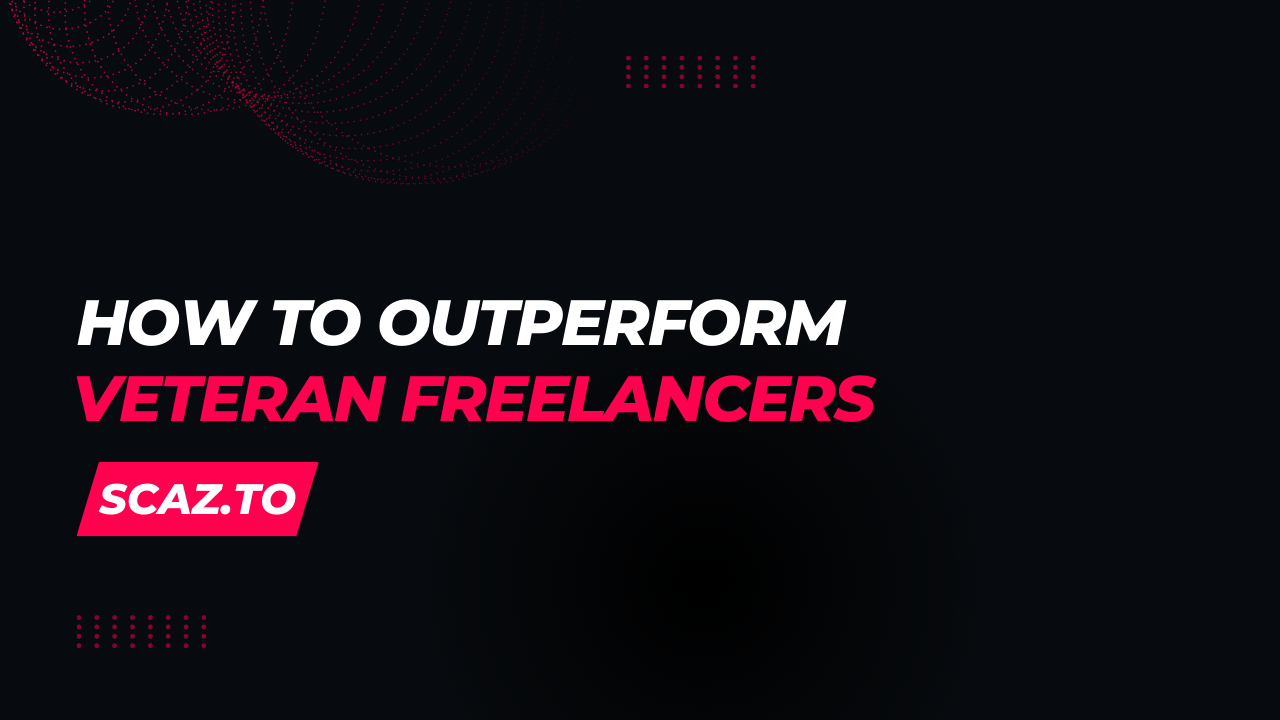
How to Outperform Veteran Freelancers and Land New Clients
Are you fed up with expert freelancers stealing all of the good jobs on freelance platforms? How come they get so many new clients while you have such a low success rate?
It’s time to take action and finally beat those 5-Star rated freelancers.
It may seem ironic coming from another expert freelancer, but I completely understand what you’re going through.
The competition for freelancers is fierce. I had a difficult time landing jobs in the first two years of my freelancing career because most clients prefer veteran freelancers with a lot of experience and a lot of 5-star ratings on their profiles.
It’s the same whether you’re on Elance, UpWork, Freelancer, or Fiverr.
It took me a while to figure out how to work around this system and learn how to get freelance clients. And I’m going to share it with you today.
Here are seven steps for stealing clients from veteran freelancers and increasing your success rate on freelance sites.
Step 1: Establish a Badass Reputation
No other freelancer stood a chance against my killer pitch because my reputation set me apart.
Get an article published in Forbes if you’re a freelance writer. Create a website for a well-known company if you are a web designer. Graphic designer? Assist a fellow photographer in editing his work.
If necessary, do some free work. Just make sure you have something solid to show off your skills to your clients.
Step 2: Pick Your Clients Carefully
“How can I compete for clients when Indian freelancers offer their services at rock-bottom prices?”
A common misconception among new freelancers is that they cannot compete with low-cost freelancers simply because their rates are low.
If a client wants to get their work done for a low cost, they will look for a low-cost freelancer. Forget about those customers. It’s better if you don’t work for them.
However, if a client wants high-quality results, the price is irrelevant.
I, too, am from a developing country. And, yes, the US dollar is more valuable in this country. Nonetheless, my rates are the same as those of a freelancer in the United States. Why? Because I understand the worth of my skills and knowledge.
So, set a reasonable price for your services and select clients who will appreciate your skills.
For example, you can look for the client’s budget limit to see how much they are willing to spend on a project, or you can look at their hiring history to see how much money they’ve spent on hiring freelancers in the past to get a sense of whether the client is cheap or not.
Step 3: Improve Your Communication Skills
“Focus on making me comfortable with your communication skills. I’ll pay 20x to work with a functional human.”
Ben Vaello, a regular client on UpWork, provided that brilliant piece of advice in response to a Quora question.
Your communication skills are more important than anything else. Don’t annoy your freelance clients by using overly complicated words and technical explanations.
Instead, exude confidence. Write your client pitch and emails as if you were speaking to another person. Be pleasant. Use simple language. Also, keep it brief.
Step 4: Create a Portfolio to Display Your Work
When pitching to a client, copy-pasting links and attaching large files to show examples of your work can be exhausting and frustrating for both you and your client.
Wouldn’t it be simpler for you to simply share a single link to a website where all of your work is neatly displayed for all to see?
There are numerous ways to accomplish this. You can, for example, create a simple WordPress website to display links and images from all of your previous work. You could also use an online service to create a portfolio.
Step 5: Continue to Improve and Learn New Skills
Learning something new will not only help you learn new skills and earn more money, but it will also give you the confidence to discuss various topics with your clients and demonstrate your knowledge and expertise.
Make your customers think to themselves, “Wow, this guy sure knows what he’s talking about.”
Step 6: Offer A Solution Rather Than Advice
Each client posts a job on a freelance site in the hopes of finding a solution to a problem. They end up on sites like UpWork for a reason: to find someone good to get their work done right, whether it’s for creating an eBook, developing an app, or writing articles for their blog.
Take a few minutes before writing your pitch to carefully read their project description and do some research on Google to figure out the best way to approach this type of job. Then you can craft a one-of-a-kind pitch describing your perspective on their project.
Consider the following scenario: a client has posted a project to redesign their website. If you’re a web designer, you can go to their website and spend some time looking for flaws and errors. Then you can write a pitch explaining how you intend to correct those errors.
This is an excellent way to demonstrate your enthusiasm and love for what you do.
Step #7: If You Can’t Beat Them, Join Them
Expert freelancers are not all jerks.
Believe it or not, there are good freelancers out there willing to mentor new freelancers.
Send them a message or follow them on Twitter. Inquire about how they land big clients or if they can throw you an extra job they have. You’ll be surprised at how nice some freelancers are.
Most of the time, I’m too busy to take on new projects, so I decline them. However, if I know of someone who is qualified for the position, I will gladly refer my clients to them. I’m sure I’m not the only freelancer who feels this way.
Before Quitting Your Day Job To Start Freelancing, Ask Yourself These 12 Questions
For freelancers, the last few years have been incredibly lucrative. These days, some freelancers are earning so much money that
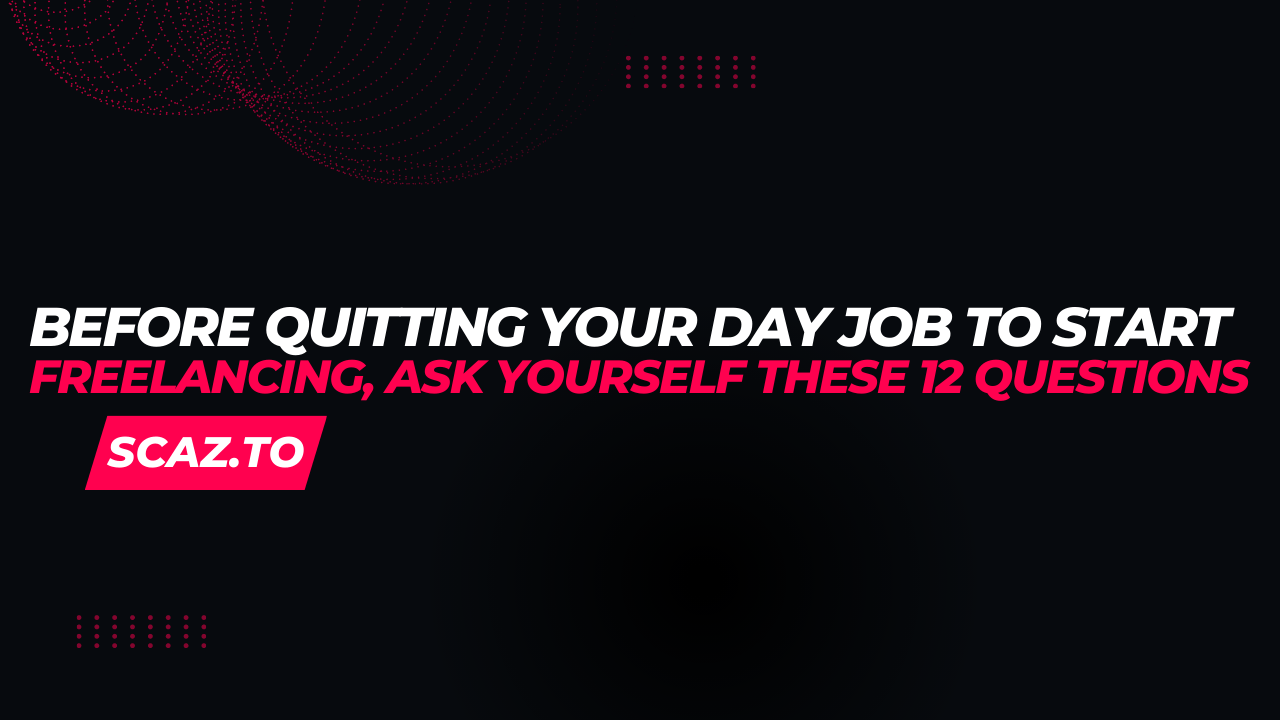
Before Quitting Your Day Job To Start Freelancing, Ask Yourself These 12 Questions
For freelancers, the last few years have been incredibly lucrative. These days, some freelancers are earning so much money that my $5,000 monthly income seems meager in comparison.
It makes sense that these tales would inspire everyone to abruptly quit their day jobs and pursue a freelance career. Buy what they all forget is to realize how much of a risk they take when they try to start a freelance career without a proper plan.
So, before you decide to leave your job and work as a freelancer full-time, stop and think about these questions to make sure you’re prepared for the long and difficult journey ahead.
1. First, is freelancing the best career path for me?
Do you adore receiving a consistent paycheck each month? Do you aspire to work fewer hours at the office? And do you enjoy spending time with your coworkers at the water cooler or going out for drinks every Friday?
Then freelancing may not be your best option for a career.
Yes, independent contractors do have more freedom to select only the jobs with which they feel most at ease and do work that they genuinely enjoy. To make ends meet, however, you must put in more hours of work.
Giving up certain luxuries, such as going out with friends or taking the weekends off, is another requirement of freelancing.
To put it simply, freelancing is the best career for introverts (like me).
To succeed as a freelancer, you must be prepared to change some aspects of your life.
2. Are You Prepared To Leave Your Comfort Zone?
Running your own business is similar to becoming a freelancer. You will be responsible for finding work, overseeing projects, and communicating with clients on your own.
Due to the different time zones of your online clients, you will also need to work odd hours. Additionally, in order to be paid, you must submit your work on time.
Are you willing to accept all of that responsibility? Are you prepared to go above and beyond to succeed as a freelancer?
3. Can I safely leave my day job?
A steady income is not a perk of freelancing. You’ll never know how much money you’ll make the following month, and you’ll frequently run into trouble finding clients.
Take a moment to consider the risks you are taking by leaving your day job and the people you are endangering as a result of your choice.
For instance, if you have kids and are a family man, you might want to consider them. Will working as a freelancer enable you to support your family?
This does not obligate you to continue doing a menial job. Just think of a better strategy. Before leaving your day job, try to accumulate some money and make sure you have a few clients to work with.
4. Can I Afford To Work From Home?
You only need the bare minimum to start working from home, including a fast computer, a fast internet connection, and a quiet workspace at home.
You must also consider your financial situation.
In your first few months as a freelancer, don’t anticipate making any money. Finding long-term clients will take some time because you still have a lot of figuring out to do.
Do you have enough money set aside to cover your expenses during that time?
5. Do I Have A Marketable Skill?
Freelancing requires a valid skill to convert your experience into money, just like applying for a regular job does.
Even a simple freelance data entry job requires proficiency with a specific piece of software. And if you lack a marketable skill to advertise your freelance services, your business will fail quickly.
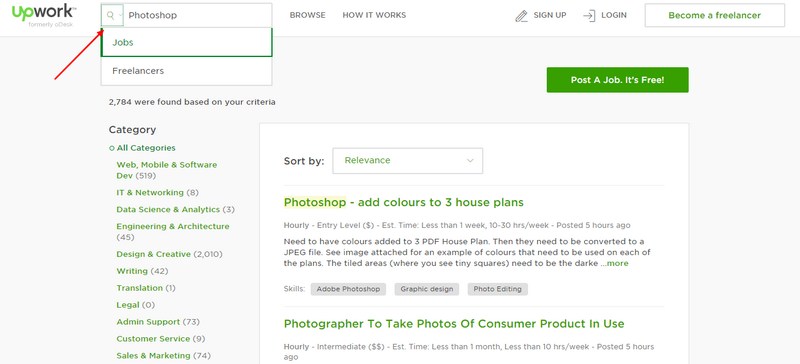
For instance, you can visit the UpWork website and perform a Jobs keyword search with a keyword associated with your skill to see how many jobs are offered in that category.
6. Is My Experience Enough?
If you’ve worked at your day job for several years and managed to collect a lot of experience in your field, it will help you greatly to stand out as an expert when it comes to marketing your skills and freelancing services.
If not, finding customers will be difficult.
Freelancing does not offer internship opportunities. If you lack experience, take the time to acquire it while also mastering the skills you already possess.
7. Will I Be Able To Earn Enough As A Freelancer?
If you put in enough effort, you can increase your freelance income by two or three times that of your day job. To be safe, however, find out how much actual freelancers with your skills make by doing some research.

You can find information from other freelancers on what kind of money they’re making by visiting Quora and searching for terms like “how much do freelance designers make.”
Grab a calculator and create a budget to determine how much money you’ll need for Netflix, groceries, and other expenses. Are those expenses covered by your anticipated freelance income?
8. How Will I Find Clients?
Choose whether you’ll work locally or online.
Even after leaving their job, some freelancers prefer to continue working under freelance contracts for their employers. Obviously, it depends on the manner in which you part ways with your boss.
However, the majority of freelancers find it simpler to look for work on platforms like UpWork and Freelancer. Naturally, it’s easier said than done.
Millions of freelancers from around the world offer their services on these platforms for low rates. You shouldn’t scale back your knowledge and offerings to match their level.
Determine your strategy for marketing your services. Are you going to find local clients, use online platforms, or be more independent by using tools like Twitter, Reddit, and LinkedIn to find clients?
9. Do I Know How To Handle Clients?
Even some of the so-called expert freelancers lack the ability to interact with clients effectively.
Gaining clients, comprehending their needs, producing high-quality work, and developing lasting relationships all depend on effective communication. You will struggle to find work online if you lack this one skill.
Learn how to craft compelling emails and project pitches for freelance websites. More importantly, make sure you cultivate the mindset required to maintain composure when confronted with client criticism and under pressure.
10. Should I bill by the project or the hour?
Another challenge that most beginning freelancers encounter early in their careers is figuring out how to charge for your services. Depending on your abilities and the level of experience you provide through your service, make a decision.
For instance, just because some independent programmers earn $1,000 per hour doesn’t mean you should do the same. It depends on how well you can complete a project and how quickly you can.
Personally, I like to bill per project. It allows me the flexibility to complete tasks without feeling pressured to finish them quickly. Additionally, it is more lucrative that way.
11. How Well Do I Multitask?
The one thing that most people advise you to avoid if you want to succeed is multitasking. But not when you freelance.
You’ll be handling numerous clients and projects simultaneously as a freelancer. You will be in charge of handling the business’ finances, creating invoices, and securing more work. Along with everything else you already have to do at home, that is.
Multitaskers, it should go without saying, have a better chance of earning more money as freelancers.
12. Do I Have a Backup Plan?
What if I don’t succeed as a freelancer? Can I return to my regular job?
Just stop there! Never even consider creating a backup plan.
Going all-in and giving it your all when freelancing is the best strategy. As a result, you’ll exert more effort because it’s your only option to accomplish your objectives.
Do not even consider beginning this career with an exit plan.
Like Thomas Edison, you will experience failure, difficulty, and loss, but you will also eventually achieve success. Just keep going forward until then.
Affiliate Marketing Full Beginners Guide
Affiliate marketing is a great way to monetize your web traffic and earn extra income. It’s a versatile revenue stream
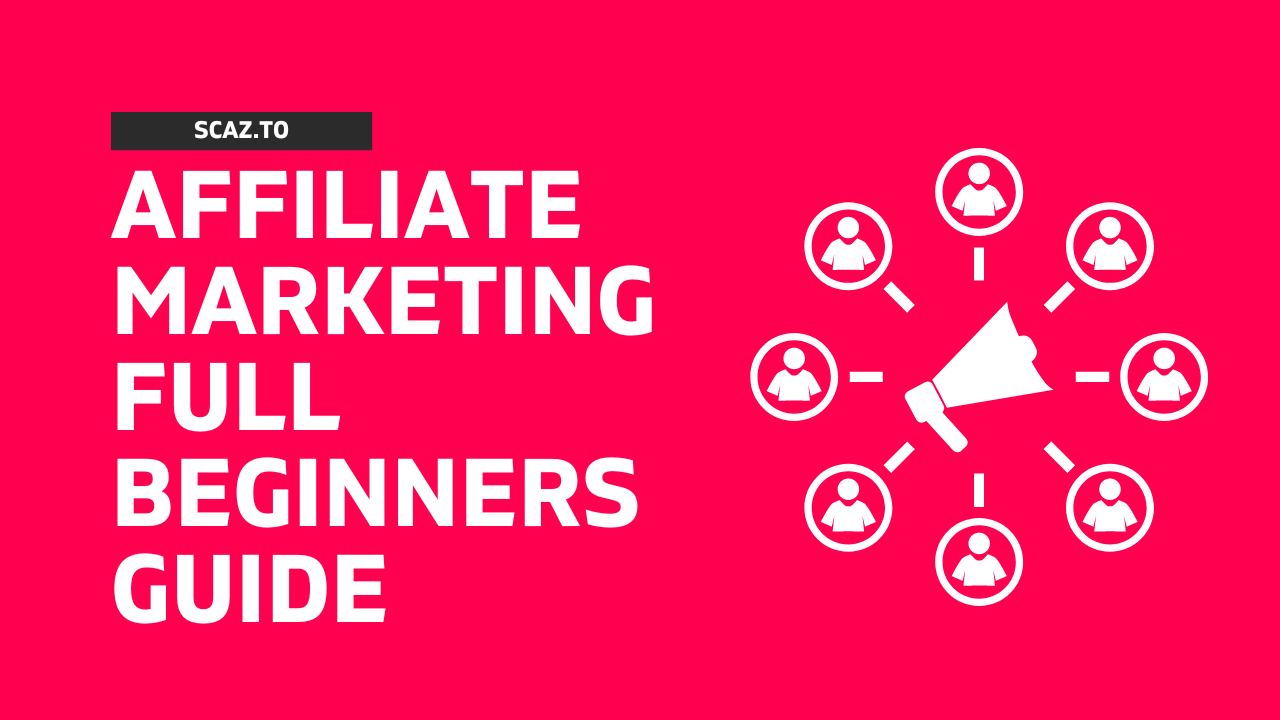
Affiliate Marketing Full Beginners Guide
Affiliate marketing is a great way to monetize your web traffic and earn extra income. It’s a versatile revenue stream that you can use no matter what your industry or niche is. In this comprehensive guide to affiliate marketing, we’ll show you exactly how to get started with affiliate marketing, grow your affiliate marketing business, and give you some tips to take your affiliate marketing business to the next level.
You’ve probably heard people promote affiliate marketing by saying something like “make money while you sleep”. While this is certainly possible, we wouldn’t be doing our job if we let you believe that affiliate marketing takes no work. Affiliate marketing is absolutely one of the best ways to generate passive (or nearly passive) income online, but it’s not going to happen if you don’t go about it the right way. Fortunately, this affiliate marketing guide contains everything you need to use affiliate marketing so you can wake up to a bigger bank account every morning.

What Is Affiliate Marketing?
Affiliate marketing is the process of promoting and selling another company’s products or services in exchange for a commission. It’s a simple enough concept, but the process itself can involve a lot of moving parts. At its core, though, affiliate marketing simply means that you sell someone else’s stuff and make money doing it.
How Does Affiliate Marketing Work?
We mentioned earlier that affiliate marketing is a simple concept, but there are a few moving parts to understand. With affiliate marketing, there’s a seller who creates an affiliate program and provides affiliate marketers with a unique link that the affiliates then use to promote the seller’s products. The links are unique to each affiliate marketer, so it’s easy to track who made the sale.
When someone clicks on the affiliate’s link, a cookie is placed on their browser. The cookie lets the seller know who sold the product and lets the affiliate earn a commission even if the person clicking the link decides not to buy right away. Cookies have an expiration date, so in order to get credit for a sale, the consumer must make a purchase before the cookie expires.
For example, let’s say you clicked on an affiliate link that has a 30-day cookie, but decided not to buy the product. A few days later, you go back and end up making a purchase. The affiliate gets credit for your purchase because it happened within the 30-day cookie window.
Who are the Parties in Affiliate Marketing?
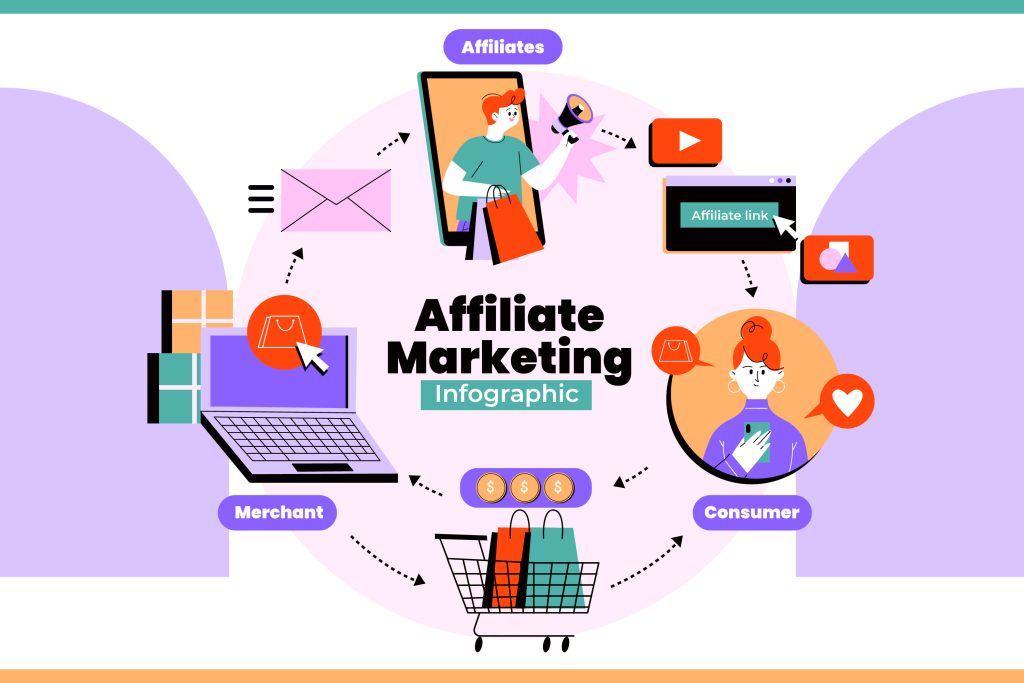
Affiliate marketing involves either three or four parties, depending on the situation. The consumer pays the money. Each of the other parties takes a cut of that money. The relevant groups in these transactions are
The Product Creator (or Merchant) – these are the companies that provide products for sale. This party has several names: creators, merchants, sellers, brands, retailers, or vendors. In short, they have products they want to sell.
The affiliate network – this is the optional party on this list. Although some product creators interact directly with affiliates, many others use an intermediary instead. In fact, in some cases, such as Amazon, affiliate networks also act as retailers. Affiliate networks work with product creators to create a catalog of products that they make available for affiliates to sell.
The affiliate marketer – these people choose one or more products and encourage their online readers, viewers, or contacts to buy them. Affiliates can promote and create sales links on their websites (or even create dedicated sites to review the products) or social channels.
The consumer – ultimately, someone has to buy the products. The consumer notices the affiliate marketer’s recommendations, follows their customized links, and purchases the products.
How Do Affiliate Marketers Get Paid?
This is one of the most common questions we get about affiliate marketing. In general, affiliates are paid when a consumer completes an action, such as a form submission, click, or sale.
Per Sale
Pay per sale is the most popular affiliate marketing model. In this payment model, affiliates are paid for each sale they generate.
Per Click
In the pay-per-click affiliate marketing payment model, affiliates are paid for clicks generated, regardless of whether or not a sale was completed. This model is quite rare.
Per Lead
In the pay-per-lead model, affiliates are paid for the leads they generate.
Common Types of Channels Used in Affiliate Marketing
Affiliate marketers can drive traffic and sales in a variety of ways. Of course, some affiliate marketing channels are more popular than others. Here are some of our favorite marketing channels for affiliate marketing success.
Blogging
Blogging helps affiliates rank in search engine results and can drive traffic to affiliate offers organically (aka “for free”). Typically, bloggers use reviews, tutorials, how-tos, and other educational content to promote the affiliate’s product. They then link to the seller’s site using their unique affiliate link to get credit for the sale.
Influencer Marketing
Influencers are people who have a lot of influence over the people in their sphere of influence, typically on social media platforms like Instagram, YouTube, and Facebook. People follow influencers because they’re interested in what the influencer has to say, and they’re already primed to be open to trying whatever the influencer might be promoting.
Influencer marketing for affiliate sales can take many different forms, including live videos, product reviews, account takeovers, and more.
Paid Search Microsites
Microsites are branded pages (or a single page) that are separate from your main website. These sites are another way for you to provide detailed information and a sales pitch for affiliate products. Because they’re separate from your main website, you can offer a more targeted, relevant message that’s free from the distractions that typically come with a traditional website.
Email Marketing
Email marketing has been around for a long time, and for good reason. Email marketing ROI is high. Like, really high. Depending on which study you read, the numbers range from 3500% to 4000% return. That means you have the potential to make $35-$44 in revenue for every $1 you invest in email marketing.
For affiliate marketers, your email list can be a great source of potential affiliate sales. While you don’t want to sell, sell, sell with every single email you send, there’s nothing wrong with sending one promotional email for every three value emails you send. You can add your affiliate links to your email newsletters and watch the affiliate sales roll in.
Coupon Sites
Coupon sites have become increasingly popular in affiliate marketing since the rise of e-commerce and online shopping. Posting your affiliate links on coupon sites can bring in a lot of sales from the savvy shoppers out there.
Mass Media Sites
Mass media sites, or large media sites, are built to bring in tons of traffic. On these sites you’ll find reviews and comparisons of different products, many of which are affiliate products. These sites act as a repository of social proof for the products and services on them. They tend to promote products through banners and contextual affiliate links.
Benefits of Affiliate Marketing

(Almost) Passive Income
Outside of content creation and promotion, affiliate marketing can make you money at any time of the day or night, making it a nearly passive income option. And you don’t have to be actively involved in the transaction to make it happen. If you have a system in place to keep things running, you have the potential for a great return with very little ongoing effort.
Flexibility
Affiliate marketing gives you incredible flexibility to do what you want and still generate revenue for your business. You don’t have to create, manufacture, store, ship, or support the product – you just sell it. That means you don’t have to spend hours creating or promoting products. You simply choose products that you like and that you think your audience will like, create the content to promote those products, and then do the actual promoting.
Cost-effective
If you’ve ever wanted to start your own business, especially one that sells physical products, you know it costs money to get started. Sometimes a lot of money. With affiliate marketing, you have an inexpensive way to start your own business. As an affiliate marketer, all you have to think about is the time you’ll invest in creating content and promoting it.
Low risk
Following on from the previous benefit of affiliate marketing, affiliate marketing is also low risk. As an affiliate, you don’t have to invest any money to create, manufacture or store products. Your only job is to market and promote the products to your followers and paid traffic (if you choose to go that route). Even if you decide to promote affiliate products via blogging, you won’t be dropping a ton of money on something that you’ll be out if it doesn’t work out. There are tons of affiliate products and services to promote. If one is a dud, just move on to the next one.
No Customer Support
As an affiliate marketer, you don’t have to worry about customer support for the products and services you sell. This is a great relief for many affiliate marketers who want the freedom to start their own business without having to think about how to deal with actual customers. The only thing we’d like to stress here is that the products you promote to your followers should be quality products or services that you would actually use. If you push bad products on your audience just to make a quick buck, they’ll stop trusting you. So be selective about the affiliate products and services you promote.
How to Get Started With Affiliate Marketing
A quick Google search of “affiliate marketing” returns about 678 million results. Even if you narrow that down to “how to get started with affiliate marketing,” you’ll still find 88.5 million results. That’s a lot of content to wade through, especially since most of it is outdated, and a lot of what’s not outdated starts in the middle of the process. We’re going to start this affiliate marketing how-to from the beginning, so you can get started even if you don’t know what a “cookie lifetime” is or why it’s important (don’t worry, we’ll tell you). Let’s get started!
Step 1. Find a niche
The very first step in getting started with affiliate marketing is to choose a niche (or “vertical” if you want to sound super knowledgeable). This niche is what you’re going to “stock” your store with. And we’re not talking about a general store here. As an affiliate marketer, you want to be known for something.
This doesn’t mean that you promote just one product or service, like golf balls. Instead, it means that you could become an affiliate for the broader golf niche. Within this niche you could promote
- Golf equipment such as bags, clubs and apparel
- Online lessons and books
- Golf courses themselves, promoting memberships and day passes
- Professional golf stuff like tournaments, golf history, memorabilia
You get the idea, right? Here are some of the verticals you might want to explore:
- Hobbies such as photography, travel, sports betting
- Financial products such as debt management, investing, credit cards
- Wellness topics such as yoga, nutrition, organic products
- Lifestyle products such as fashion, luxury items, online dating
- Home and family topics like home security, baby products, gardening
- Tech stuff like SaaS, web hosting, VPN
- Alternative products like CBD, essential oils, personal development
What are you passionate about? What do you buy yourself? It’s a great place to start!
Step 2. Choose a Channel
After you’ve chosen your niche, you’ll want to choose at least one platform or channel to use for affiliate marketing. As we have already mentioned, blogging is probably the easiest and cheapest way to get started with affiliate marketing and can work for affiliates who want to write product reviews and comparisons to promote their chosen affiliate products.
YouTube is another great affiliate marketing platform. Plus, it’s free to start a YouTube channel and upload videos. The downside is that there are tons of other videos and creators on YouTube, so it can be hard to get your products noticed. Also, it’s likely to take a lot more time to create and upload a great video than it would to write a blog post. YouTube is definitely something to consider if you want to be on camera talking to people. And if you already have a following on YouTube, by all means use it for successful affiliate marketing.
Instagram is another place where you’ll find a lot of affiliate marketing action. It’s a very active platform and, like YouTube, it’s an absolutely brilliant option if you already have a following on the platform. You can create visually appealing images and videos to promote your affiliate products and, like other platforms, you can even pay for ads if you wish.
No matter which platform you choose, you’ll want to make it clear when you’re sharing an ad. We recommend including affiliate link disclaimers with all of your links. So on your blog, you’d link to your affiliate product and then add “affiliate link” in parentheses. On YouTube, include your affiliate disclaimer in your video description. For Instagram, using #ad or #sponsored is a great option.
Step 3. Choose the Products You Want to Promote
Now that you’ve chosen a niche and know where you want to promote your affiliate products, it’s time to choose the affiliate products you want to promote. Choose products with your target audience in mind and make sure you’re offering quality products that they will actually benefit from using. To make sure you’re on the right track, ask yourself if the products you’re considering will improve the lives of the people you’re promoting them to. Is it something you’d buy or something you’d tell your grandmother to buy? If the product or service passes these two tests, you’ll want to make sure you have a real chance to make money promoting it. What are the conversions and payouts for the product?
If nothing comes to mind, or you just want to see what’s out there, you can go to your favorite search engine and search for “your niche affiliate” and go from there. Or…
Step 4. Join an Affiliate Network or Affiliate Program
If you have a website and you’re already creating content, you’re ahead of the game. You can use your website’s analytics to find out who your audience is, then find products that will appeal to them and give you the payout you want. Joining an affiliate network or program gives you access to brands looking for affiliates, as well as tools to help you find the right opportunities. Some of the top affiliate networks include:
- ShareASale
- Awin
- Amazon Associates
- CJ Affiliate
- Rakuten Marketing
Affiliate networks give you access to hundreds, if not thousands, of affiliate programs to join.
How to Choose the Best Affiliate Programs?
There’s a lot that goes into choosing the best affiliate program for you. Here are some of the most important factors to consider when choosing the best affiliate programs for you and your audience.
Commission Type & Amount
If you want to make money from affiliate marketing, and we bet you do, the type and amount of commission you can earn is probably the most important factor for you. There are generally two types of commission structures: flat and recurring. The flat model is more common for physical products and involves a single, one-time flat payment per sale. With the recurring model, which is more popular for subscription products, you receive commissions each time the customer renews.
It’s also important to find out about the brand’s refund policy. Refunds are an inevitable part of shopping. But what happens if someone buys through your affiliate link and then asks for a refund? It’s important to know if you’ll be charged for the refund.
Cookie Lifetime
And here we are, back to the cookie lifetime we mentioned earlier. When we talk about cookies on the Internet, we’re talking about text files that contain small bits of data. These cookies are used to identify your computer when you use a network. If you’re considering affiliate marketing programs, you’ll want to know how long the cookie will stay on the shopper’s device. This is important because longer cookie life means you have a larger window of opportunity for a shopper to come back and make a purchase that will be attributed to you (so you get the commission).
So if someone uses your affiliate link and the cookie lasts one day, the shopper would have to complete a purchase within 24 hours of accessing your affiliate link. If the cookie lasts 30 days, the shopper could make a purchase two weeks after first accessing your affiliate link and the purchase would still be credited to you. The longer the cookie, the better for you.
Relevancy
Your audience is critical to your success in most things. And that’s definitely the case with affiliate marketing. Pick products that are relevant to your audience. Finding products that are relevant to your audience and have high payouts is even better. But don’t choose a product that’s not right for your audience just because it has a high payout. Not only will you damage your audience’s trust in you, but you probably won’t make any sales.
Payment Logistics
How will you get paid? Make sure you understand how often the affiliate program will pay you, where you’ll receive the money, and what currency they’ll pay you in. If you’re selling products with a recurring commission model, when will those payments be made? Is there a certain threshold you have to meet to get paid (e.g., payouts only happen when there’s at least $50 in commissions)?
Creative/advertising assets and conversion rates
Many times brands will offer creative assets like banners, graphics, and coupons that you can use to promote their products. These can be incredibly helpful assets to use. Other brands may just give you a text link. Check out the resources the brand provides. While just getting a link to promote might not be a deal-breaker, having to create these resources from scratch needs to be factored into your costs.
It’s also important to check out what’s on the other end of the affiliate link. Is it a boring landing page full of grammatical errors? A brilliantly designed video sales page? A landing page that looks like a box exploded with “SALE!” stickers all over it? The design of the page at the other end of the affiliate link can make a huge difference in your commissions. If the page isn’t built for conversions, it’s unlikely to get many.
The Competition
Another important thing to consider when choosing an affiliate program is the competition. How many people are selling the product? If the market seems overly saturated and the brand doesn’t seem big enough to support the drive for so many sales, you’re probably better off choosing another option.
Step 5. Create High-Quality Content
Okay. You’ve chosen a vertical and a platform, identified products to promote, and even joined an affiliate network. You’re ready to go! But now what? It’s time to create content.
The delivery of the content you create will vary depending on the platform(s) you’ve chosen to promote your affiliate products, but there are a few types of content you can count on:
- Product reviews: These are a staple of affiliate marketing and one of the easiest ways to get started. You can write your review as an article or a video, depending on the affiliate marketing channel you’re using. In your product review, share what you love and what you don’t love about the product (honesty is key to gaining your audience’s trust).
- Case studies: These take product reviews one step further. Case studies allow you to share a success story behind the product you’re promoting. It’s basically a “show” instead of a “tell” type of promotion.
- Tutorials: How-to articles and videos are great for showing your audience how to use an affiliate product or how you did something cool with it. Tutorials are actionable content and set your audience up for success.
- Product Comparisons: In a product comparison, you’d compare your affiliate product to another product that does the same thing and then give your honest opinion. It’s quite possible that the affiliate product may not be the best in some use cases, even if it’s the best product overall. Being honest just lets your audience know they can trust you.
- A resource page: These aren’t usually big drivers of sales, but they can be a way to get some extra income from affiliate marketing. Plus, it’s super easy to create a page with all the products you recommend and affiliate links for those products, so why not just do it?
Step 6. Generate Traffic and Build an Audience
Once you’ve created some content, you’re ready to start generating traffic and building an audience that will click on your affiliate links. There are three specific strategies that we recommend:
Build an email list
We’ve already told you about the ROI of email marketing, so it should come as no surprise that we recommend building an email list. Unlike your social media follower list, you own your email marketing list. So if your social network decides to stop letting people use it for promotions, you’ll still have access to your email list and can use it whenever you want.
The fastest way to grow your email list is to offer a lead magnet (something people get in exchange for giving you their email address). This can be a checklist, a free course, or any number of things that your audience will find useful and valuable. Once you have their information, you can send them valuable content along with promotional emails.
Search Engine Optimization
Search engine optimization (SEO) is important for driving organic traffic to your website. The idea is pretty simple: you target specific keywords that your target audience is interested in, create content on those topics, and make sure your site is indexed by Google, Bing, and whatever other search engines you want.
Paid traffic
Once you start making money, you can reinvest some of it in paid traffic. You simply create an ad (on a search engine or social media platform) and it draws people to your site. While it’s not a guarantee that you’ll get affiliate sales, it’s still a great way to build traffic and potentially get your site ranked higher so it’s found more often by the people who are interested in what you have to offer.
Tips to Improve Your Affiliate Marketing
Now you know all the basics (and some not-so-basics) of getting started with affiliate marketing. What’s next? You get started, of course! Here are some tips to help you get started and quickly ramp up your affiliate marketing efforts.
Start with product reviews
Start by reviewing products and services within your vertical. This will build trust with your audience and establish you as an expert in your niche. Be sure to let your audience know why they would benefit from the products you’re reviewing (or why they should stay away from them). Once you have a few product reviews under your belt, add product comparisons to the mix.
Stay up to date
There’s a lot of competition online and in affiliate marketing. To be the best, you need to stay on top of trends, not only in your vertical, but in marketing in general. If you’re a master of social media, you don’t want to be left behind when the next TikTok comes along.
Build trust with your audience
We’ve said it many times in this article: trust with your audience is paramount. Don’t betray that trust by pushing products they don’t want or need. Instead, focus on products that you truly believe will benefit your audience. And never tell them directly to buy – you are recommending products based on your expert opinion. Be helpful and recommend quality to keep your audience coming back for more.
Diversify your affiliate products
You don’t have to limit yourself to the affiliate products you promote. While you may have a particular seller that you love, it’s okay to work with other sellers and promote other products as well. This also protects you as an affiliate, since you won’t be left high and dry if the seller you love decides to cut commissions, limit the ways you can reach your audience about products, or eliminate their affiliate program altogether.
Test and Optimize
Test and tweak everything. All the time. Get to know your analytics and use them to inform your marketing and advertising. In marketing, you never really know for sure how something is going to work until you do it. So let things run for a while to gather data and then start tweaking. Pay attention to what works better and do more of it.
Get Started With Affiliate Marketing!
You now have everything you need to get started with affiliate marketing. You could even get started today, right now, if you wanted to! With the education, tips, and step-by-step process we’ve outlined here, we have no doubt that you’ll be able to launch your affiliate marketing career in no time.
10 Best Skills To Learn Online For Freelancers
There has never been a better time than now to learn something new. The freelance economy is thriving. Remote work
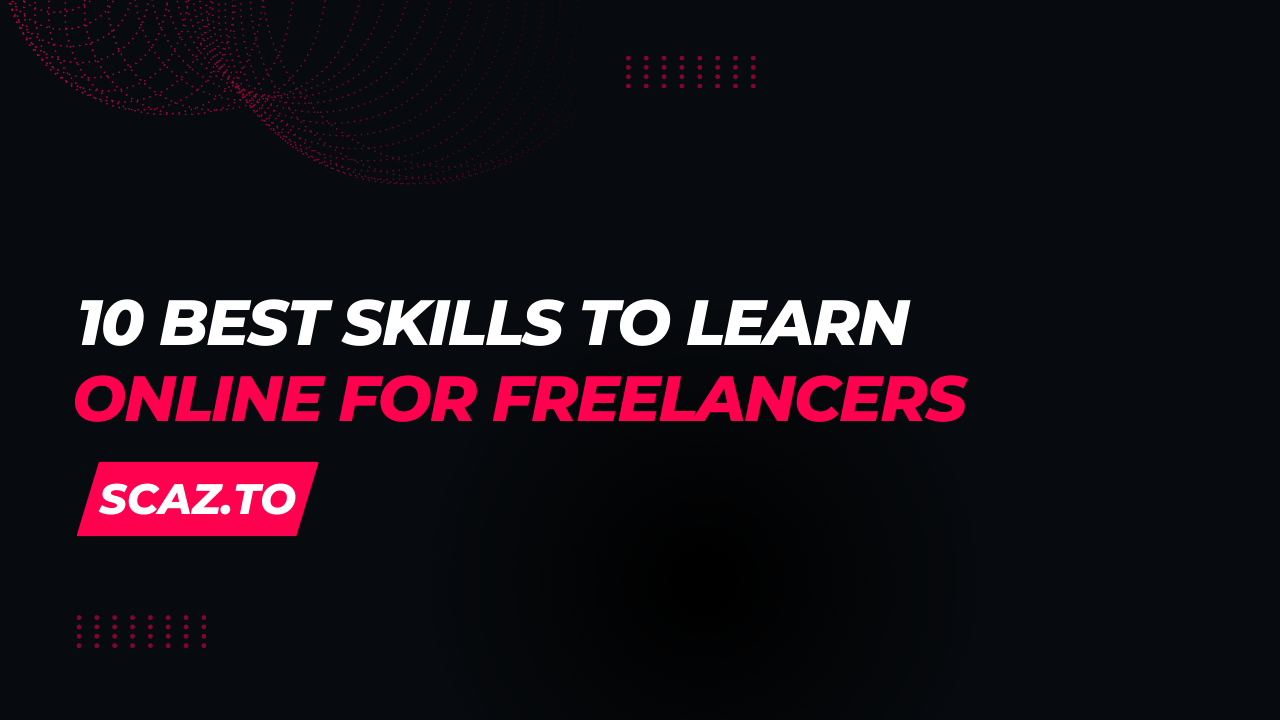
10 Best Skills To Learn Online For Freelancers
There has never been a better time than now to learn something new.
The freelance economy is thriving. Remote work is becoming more popular. And it is becoming easier to find jobs online.
If you’re wondering what the best skills to learn today are, I have a few ideas for you.
In this guide, I will look at some of the best skills to learn that are in high demand.
Someone recently contacted me for job-search advice. She worked as a web developer for a tech company for 5 years. However, she was having difficulty finding work online.
Her issue was that most online jobs required more than one skill. And she was only skilled in one area. Working online is actually quite common.
Because you are working alone, you must have a basic understanding of other relevant skills to your industry in order to deliver high-quality projects.
For example, if you’re a web designer, understanding UX design will help you create better websites. If you’re a blogger, having knowledge of SEO will help you land jobs. If you work as a social media manager, you should be familiar with graphic design in order to create content for social networks.
Developing and learning multiple skills related to your industry is never a waste of time. It may even help you land more high-paying jobs.
To assist you in your search for practical skills to learn, I’ve compiled a list of skills that are in high demand in freelancing markets. As I previously stated, you can combine them to learn multiple skills and increase your chances of landing a job.
App Development (Programming)
Coding, also known as programming, is still one of the highest-paying skills in the freelancing market. A skilled developer can earn up to and even beyond $1,000 per hour.
However, there is a reason for its popularity. Mostly because it is not a skill that can be learned overnight, or even in a few months. To become an experienced developer, hundreds of hours of practice and learning are required.
If you’re up for it, programming is a skill you can learn to help you build a profitable career and a better future. App development is currently in high demand. You can also learn everything there is to know about app development by taking online courses and programs.
However, don’t expect to be able to code after just a few online courses. It will take far more than that.
Copywriting
Copywriting is unquestionably one of the most important skills for nearly all types of professionals.
Whether you’re a digital marketer, a social media manager, or a graphic designer, knowing how to properly handle words will make your job much easier.
You could also make a living as a copywriter. As a copywriter, you can work in a variety of fields, including website copywriting, blogging, eBook writing, product copywriting, and more.
UX and UI Design
User Experience Design (UXD) and User Interface Design (UID) are two valuable skills in high demand in today’s markets.
A UX designer’s primary responsibility is to assist designers in creating user-friendly products. This is true for a wide range of products and crafts.
Consider the smartphone you’re holding in your hand. A UX designer must have made the decision to use a square-shaped design for smartphones at some point. So that it can be held in one hand. Can you imagine how difficult it would be to hold a phone with a round design?
As a result, UX design is essential in every design, from website designs to posters, flyers, and even toilet paper.
UI designers are in charge of creating user interfaces for apps and websites. It is also their responsibility to create user interfaces that are easier to use and more effective.
On freelance marketplaces, both of these skills are in high demand. Furthermore, it provides excellent career opportunities.
Video Game Development
Learning to make your own video game could become a soft skill for any profession in the near future. That is how large the video game industry has grown. In fact, it is larger than Hollywood.
Professionals in the gaming industry appear to have a bright future. You could also start your path to a lucrative career in games by learning how to create them.
There are numerous job postings on freelance marketplaces for video game development. There is a path for you if you want to be a freelance game developer.
However, concentrate on establishing a career path. Making video games Alternatively, you could join the team of a well-known game development company. Everything could start with a simple online course.
Digital Marketing & SEO
Many different social networking sites gain popularity from time to time. Businesses will always find a way to promote their brands and products on these sites, regardless of the type of content they promote.
In these ever-changing times, one thing is certain: there will always be a demand for digital marketing. A digital marketing team is always on the front lines, especially when it comes to promoting eCommerce websites and brands online.
One of the many aspects of digital marketing is search engine optimization (SEO). It’s also a necessary skill for all types of marketers, including bloggers and writers. Learning how to optimize a script, blog post, or website copy for higher Google rankings is a skill that many jobs require.
Data Science
A friend of mine recently pointed out the importance of data science as a skill. It’s one of those skills that will only become more in demand in the coming years.
Every company, brand, or startup collects various types of data. Customer information, sales statistics, competitor assessments, target audience reports, customer engagement data, and so on. Data scientists take all of this information and help businesses understand what it means. And contribute to the development of future projections and assessments for the company.
Data science is far more complicated than that. However, it is a skill that will help you build a long-term career. This skill, like learning to code, is extremely difficult to learn. You must also be proficient in mathematics.
Social Media Marketing & Management
Influencer marketing is one of today’s most effective forms of marketing. Why? Because social media influencers have such a strong influence over their followers, when they recommend a product, their followers are more likely to purchase it.
Because of this new trend in digital marketing, social media marketing has become yet another useful skill to learn. Learning how to market products and promote brands on social networking sites is a skill that can be learned quickly through online courses.
You can also learn how to manage social media. In which you assist businesses and brands in better managing their accounts and recommending strategies to grow their social channels.
Product Design
Product design is another multifaceted field. However, product packaging design is a skill that is in high demand on online freelance marketplaces.
As you are aware, the packaging of a product is what entices people to purchase it. The job of a product packaging designer is to assist businesses in creating appealing packaging for their products.
This skill requires an understanding of many technical aspects of how packaging works for various types of products. But it’s one worth exploring.
It’s also worth noting that UX design, copywriting, and digital marketing all play significant roles in product design.
Video Editing
With the rise of video-based social networks such as TikTok and Instagram, there is a growing demand for video editors.
Professional editors are frequently sought after by businesses and creators to create more engaging videos for their channels. This is your moment to shine.
Video editing is not a difficult skill to learn, but being a good editor does. If you have a computer capable of handling video editing workloads, you can learn this skill in a matter of weeks.
Business Analytics
Analytics is critical to the growth of any business.
Analytics can be used to identify opportunities for business growth as well as product flaws.
For example, when a company conducts a survey, it can use analytics to determine and analyze all of the data gathered from the survey.
This is where Excel experts can come in handy. Excel analytics is also in high demand.
Microsoft Excel is a fantastic skill that you can learn quickly. And it will open up a plethora of opportunities for you in the freelance market.
Conclusion
When it comes to applying for jobs online, patience is required. Don’t be in a hurry to apply for jobs. Instead, invest time in developing a skill set that complements one another. It will assist you in producing better results. And eventually, you’ll be able to land high-paying jobs with happy clients who will give you long-term contracts.
Continue to learn and improve your skills.
15+ Lesser-Known Freelancing Sites with Low Competition
Most experienced freelancers will probably tell you not to rely on freelance marketplaces to find work. It’s good advice because

15+ Lesser-Known Freelancing Sites with Low Competition
Most experienced freelancers will probably tell you not to rely on freelance marketplaces to find work.
It’s good advice because these sites, like UpWork, force you to compete with other freelancers and lower your chances of landing high-paying jobs.
But in reality, we all have to start somewhere, and odds are that even the most experienced freelance professionals have used a freelance site at some point in their careers to land the odd project.
The first freelance site I used was Elance (now UpWork). I didn’t get a lot of work on this platform, but I did use it to connect with clients and build long-term partnerships. At the time, there wasn’t much competition on Elance, so it was easier to get work than it is today.
If you’re new to freelancing, sites like UpWork, PeoplePerHour, Fiverr, or Freelancer.com won’t help you. It’s best to find a site with less competition to increase your chances of making money early in your career.
I’ve handpicked some of the best new freelance sites to help you get started. These recently launched sites are low-competitive and will allow you to start building your reputation without having to compete to get paid.
Periodix
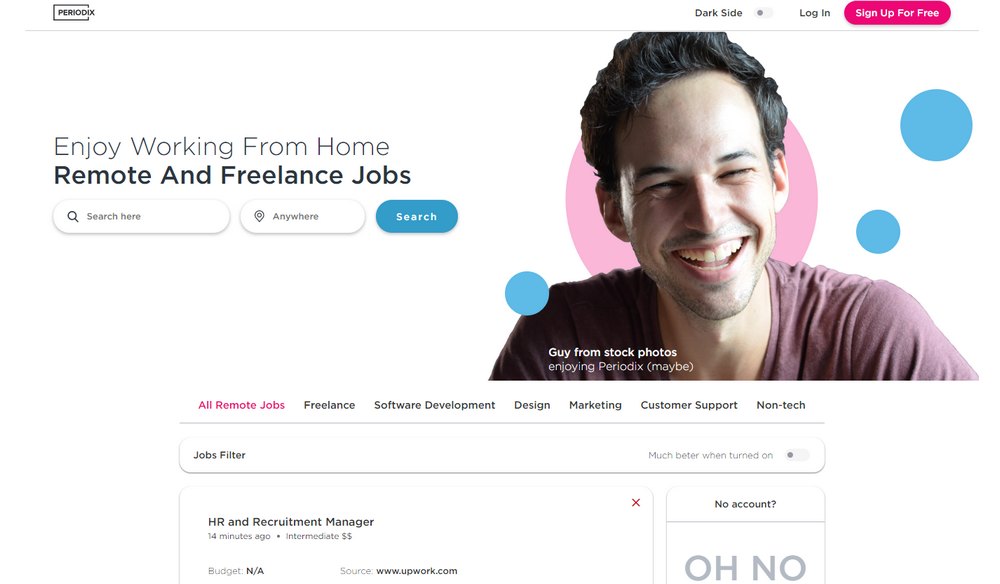
Periodix is a new freelance job board that curates jobs from several other marketplaces. It features remote job listings from many different fields. These include graphic design, marketing, coding, and even customer support. This site is updated daily with new jobs, and it’s worth bookmarking if you want to keep track of the latest jobs in your niche in one place.
1840 & Company
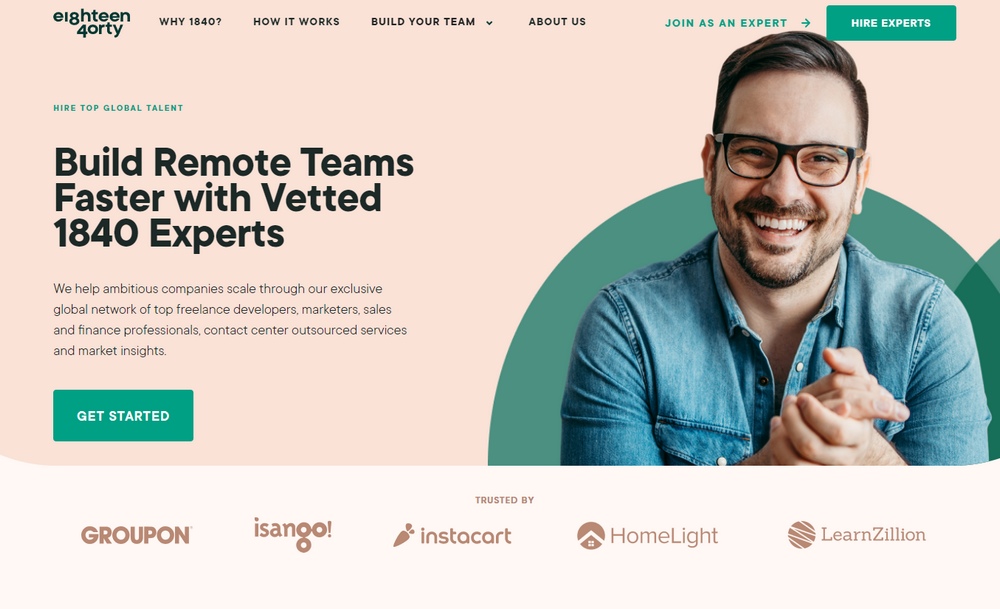
1840 & Company is a freelance agency that helps clients build world-class remote teams with its hand-selected and vetted freelance professionals. They are always looking for new talent to join their team. You can apply as a freelance expert on their website. Joining a freelance agency is a great way to get a steady stream of work and a reliable paycheck if you have experience and skills.
99DollarSocial
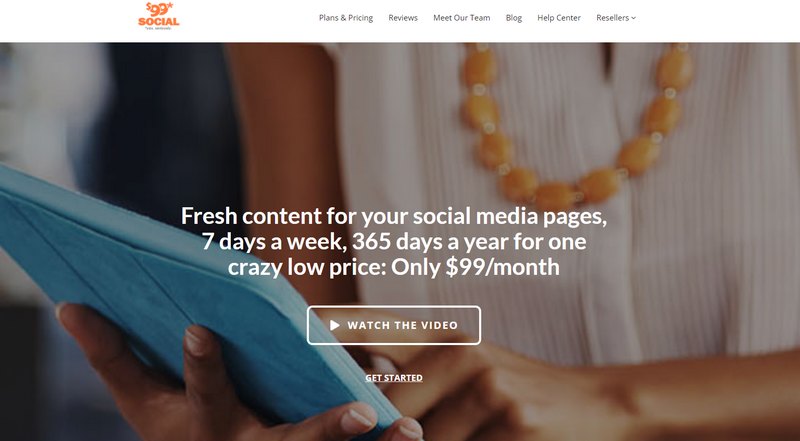
99DollarSocial is a unique website designed to help businesses manage their social media. The platform keeps business social channels up to date with high-quality social media posts and management. To provide content for these business social pages, you can join the site as a creator. It’s easy work. See the link for details.
SproutGigs
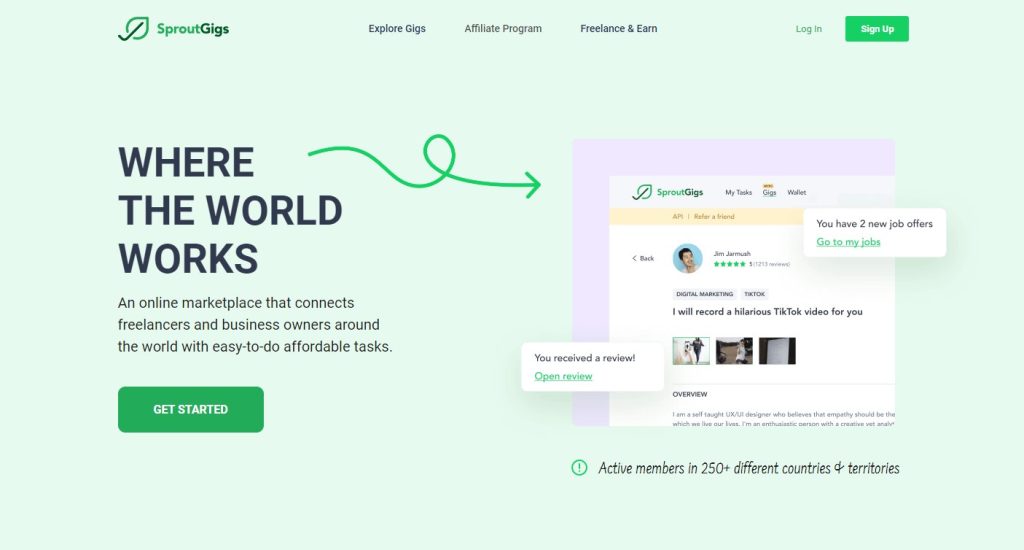
SproutGigs is a new site for freelancers that allows you to both take on projects that are posted by clients and at the same time offer your services as a gig. It’s like a Fiverr alternative with a friendlier approach to freelancers. Compared to other marketplaces, this site charges a $0.65 job approval fee and a 7% of completion fee for your jobs.
Worksome
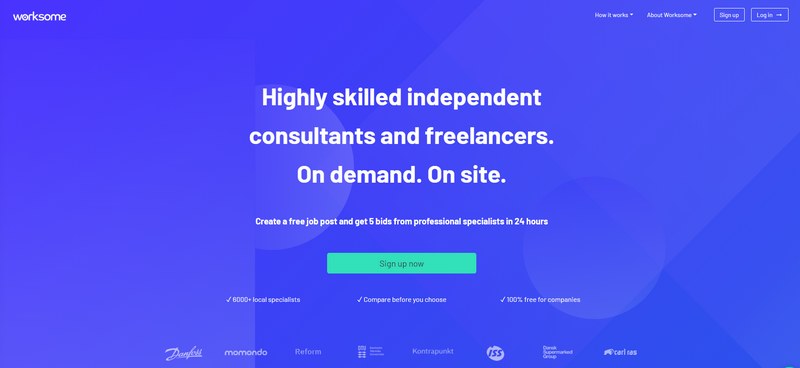
Worksome accepts only a select number of qualified freelancers and is a new and reputable freelance marketplace. It also has a strong focus on local freelancers in the UK.
SkipTheDrive
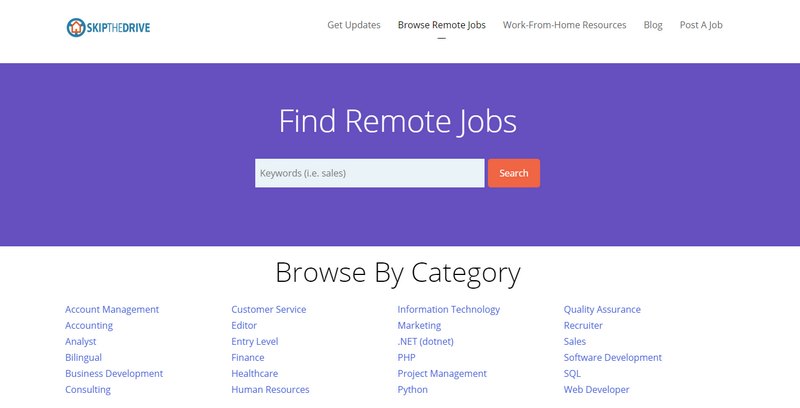
SkipTheDrive is another lesser-known freelance site. It acts as a job board for various industries. There are plenty of jobs to choose from on this freelance marketplace, whether you’re a freelancer in finance, project management, or programming.
VirtualVocations
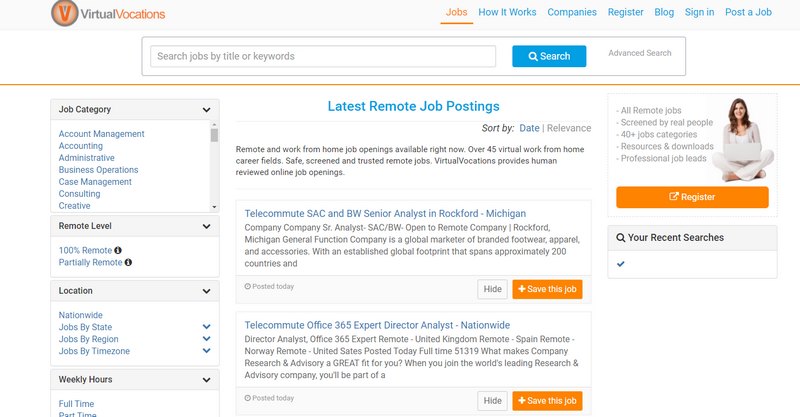
VirtualVocations is a freelance job board with regularly updated listings of freelance and remote jobs from reputable companies. This site includes many different categories to help you find the ideal job that matches your skills.
Rev
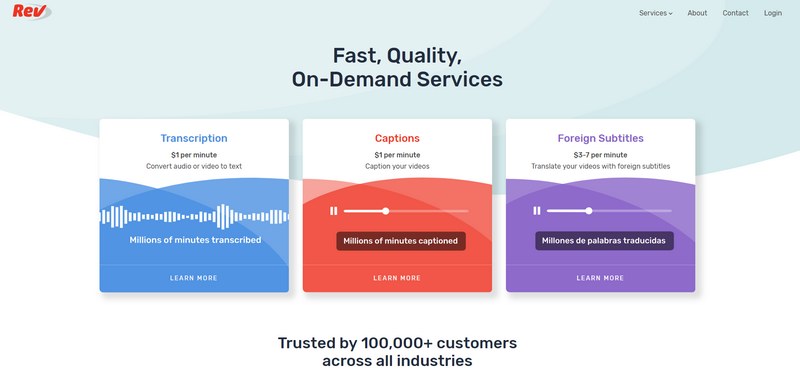
Rev is a platform that provides transcription and captioning services to podcasters and YouTubers. The platform accepts transcribers on the platform. If you’re good at listening to audio and converting it to text, this platform is a great place to start getting into transcription services.
Microlancer
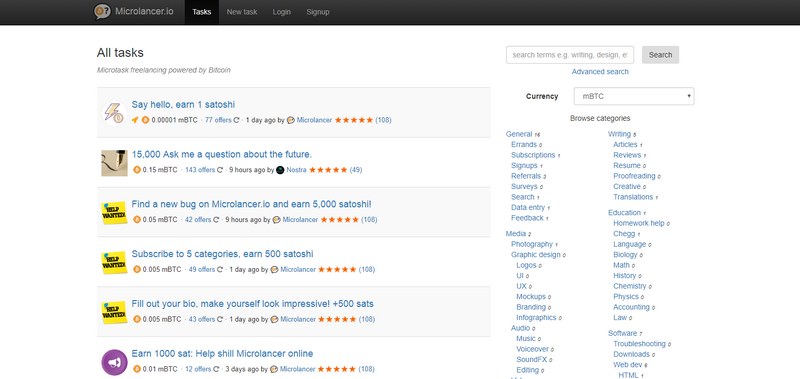
Microlancer is a unique freelance platform that rewards freelancers with bitcoin instead of money. The platform is constantly updated with new tasks and jobs that are paid in Bitcoins upon completion. This may not be the right platform for all freelancers. If you’re interested in investing in bitcoin, this may be an easier way to earn bitcoin.
Zeerk
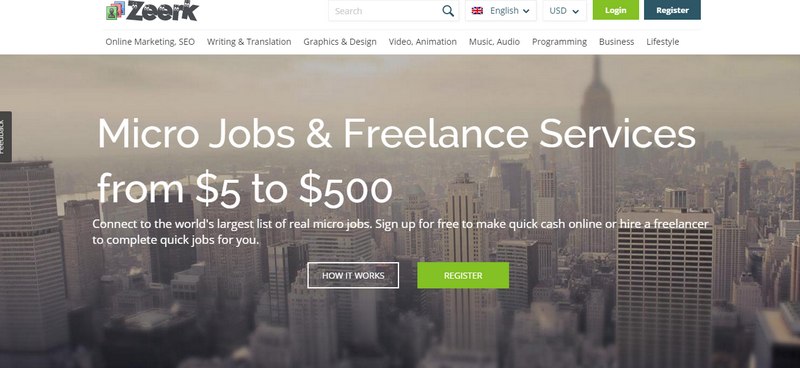
Zeerk is a 5-year-old freelance site that is slowly growing with new freelancers every day. The site has a scheme where you can price your services from $5 to $500. You can register and start selling for free, but Zeerk will take a commission of 8% to 20% from each of your sales.
Twine
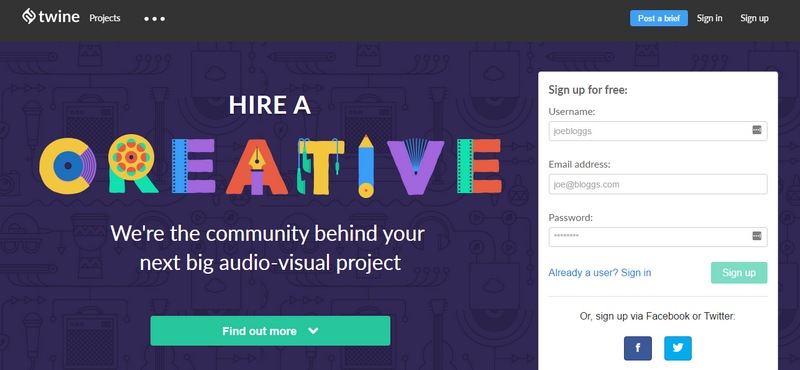
With over 175,000 freelancers working in the design, music, and film industries, Twine is a fresh and emerging freelance platform. The platform is best for creative professionals offering services like graphic design, illustration, music, movie, game design, and more. Twine is completely free to use and doesn’t charge freelancers any fees.
GlassDoor
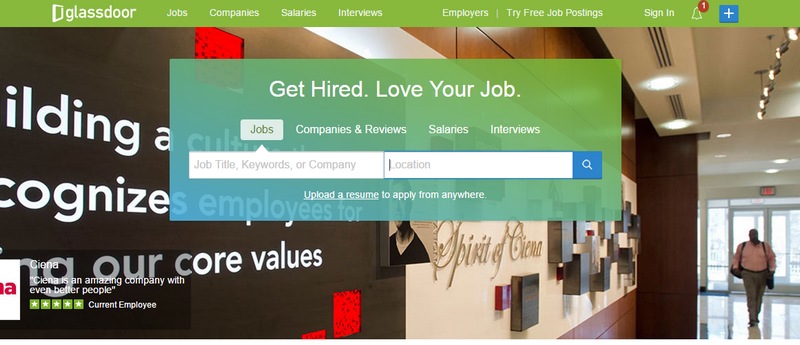
GlassDoor is not a freelance platform, it’s a job board that connects employers with freelancers. The site allows you to find and apply for jobs in your industry in your area. GlassDoor has a huge directory that will guarantee you a freelance gig.
The Freelancer Club
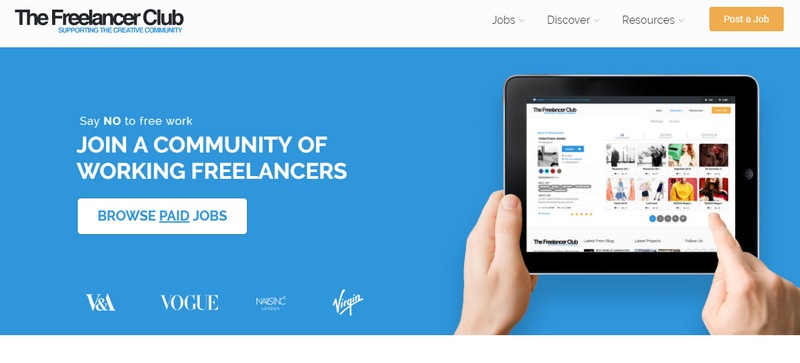
This UK-based site offers two options for freelancers: A free account with limited features or an £11.99 per month premium plan with unlimited project bidding, higher rankings, access to business directories, and more.
Throttl
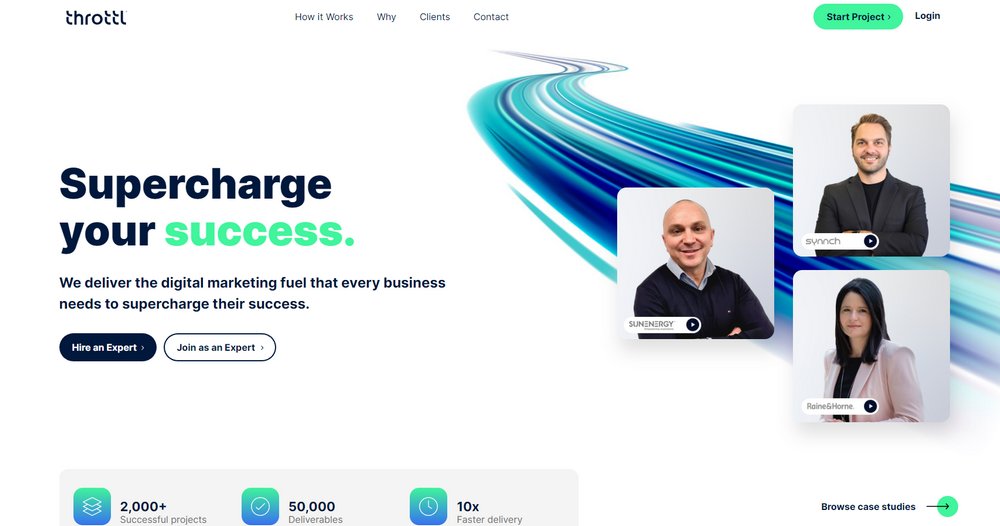
Throttl is a platform that has a curated selection of freelancers. It won’t be easy to get on this platform and you will have to prove your skills, but it will be worth it. Throttl is a fairly new platform and offers jobs that are in the digital marketing industry. Throttl’s platform fees are not listed on their website (or I could not find them). Contact them via email for more information.
Robert Half Talent Solutions
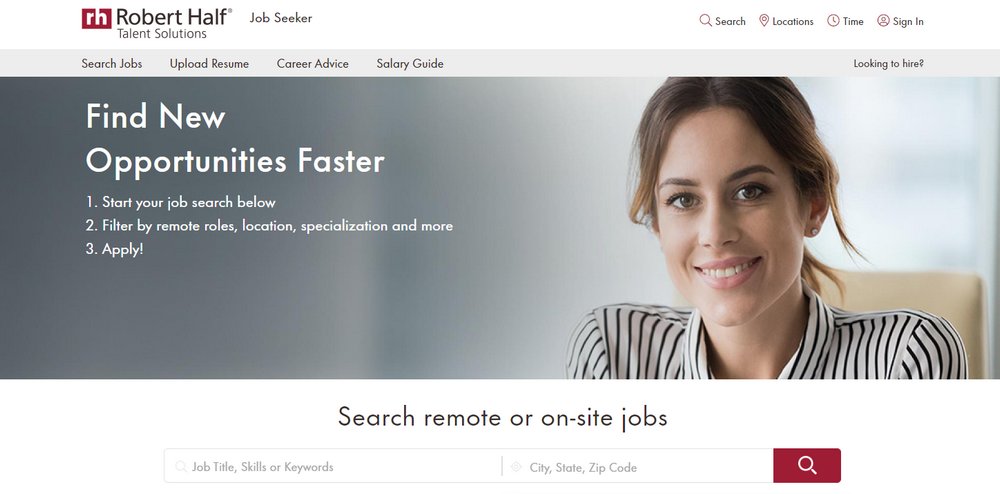
Robert Half Talent Solutions (formerly Creative Group) is a creative staffing agency that connects freelancers with marketing, advertising, and public relations agencies. If you’re a U.S.-based freelancer, you can submit your resume through the site and get access to their opportunities. You can also search for jobs using their remote job search tool.
Work N Hire
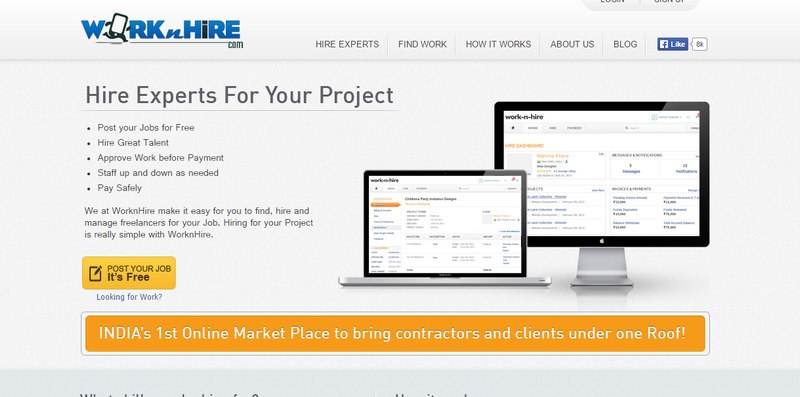
Work N Hire is another freelance site from India that uses a credit system to apply for jobs. You get 20 free suggestions every month. Adding 5 more credits will cost you 50 INR.
Disclaimer: I am not affiliated with any of these freelance sites and have not tested their services. So, proceed with caution. Some of these sites are brand new and can disappear at any time without warning. Read each site’s terms and conditions and privacy policy. Choose wisely.
How to Quit Your Job and Start Freelancing in 6 Easy Steps
Do you despise Mondays? Do you despise having to report to your boss every day? Then you’re probably already fantasizing
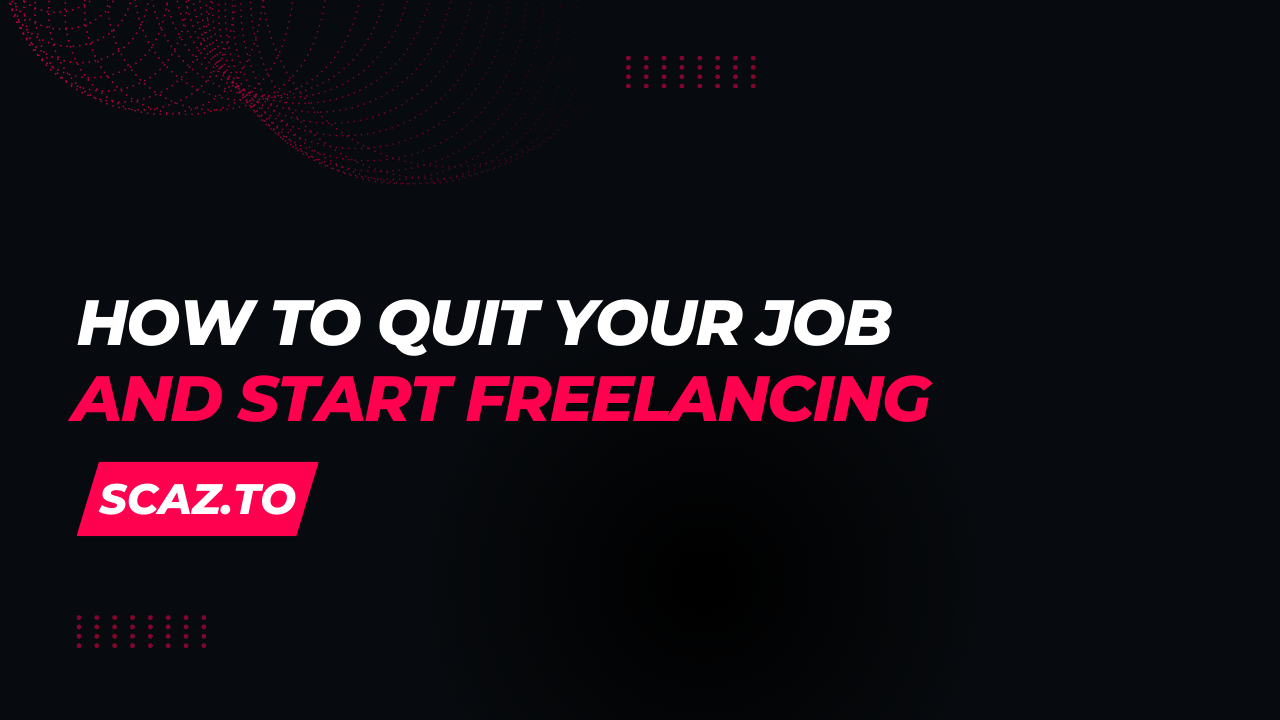
How to Quit Your Job and Start Freelancing in 6 Easy Steps
Do you despise Mondays?
Do you despise having to report to your boss every day?
Then you’re probably already fantasizing about quitting your job, right?
You’ve come to the right place if you’re looking for the best way to safely quit your job without taking any risks.
In this article, I will walk you through a simple 6-step process for quitting your job while also developing a proper strategy to cover your expenses and pay your bills so you can start freelancing.
You Don’t Have To Quit
Whether you’re working for a corporate company that you despise, are stuck in a dead-end job, or are simply looking for a way to make more money, you shouldn’t quit on the spur of the moment without a plan.
In fact, you should not give up. Not yet!
Many successful freelancers and entrepreneurs have built successful careers and businesses while working full-time.
Craig Newmark was once a regular guy like you. He had a great job at IBM, then moved on to work at Charles Schwab Corporation, and then to another company called Continuity Solutions. He was never completely satisfied with these jobs.
He started a small email list while working at this day job to help him find local events and meet new people. He referred to it as “Craig’s list.” This email list quickly became more than just a personal list for events. So he created a website to assist more people in finding events, apartments, and other services.
Craig decided to leave his job in 1999 after the website began to grow and turn it into a business. Craigslist is now the name of this website, and Craig has a net worth of $1.31 billion.
The moral of the story is that you never know how successful your side project will be. So there’s no harm in giving it a shot.
There’s no reason to jeopardize your financial stability or endanger your family. Begin your side hustle while still working your day job. Slowly build it up to a stable income, and then you can safely quit your job you despise and do work you truly enjoy and are good at.
Here’s how to get started with that procedure.
Step 1: Pick A Goal That Scares You
I always wanted to be an author since I was a kid. To be well-known for writing great novels.
But being an author was never a viable way to make a living. At least not in my country. So, after dropping out of high school, I needed to find a “real job.”
I worked several day jobs before realizing that my true passion is writing. I took a chance and quit my job to pursue my dream of becoming a writer, and it eventually paid off.
Working at my day job always made me feel depressed. Even so, quitting the job felt like a big risk. However, my desire to become a writer gave me the confidence to take that risk. And I worked tirelessly to achieve that goal, no matter what.
To succeed in your career, you must find a similar goal that scares you the most. It will assist you in breaking free from your comfort zone and discovering your true potential.
Whether you want to earn more money to buy a house, pay for your child’s college fund, or save for a trip around the world, set a big and specific goal to keep you motivated to work hard.
Because freelancing entails a substantial amount of work. You’ll need that motivation to get you through the difficult times.
Step 2: Create A Budget And Start Saving
It’s always a good idea to have a safety net in place in case something goes wrong.
Begin saving money for at least three months’ worth of expenses and bills before quitting your job.
That way, even if you can’t find a new client or one of your clients cancels in the middle of a contract, you’ll be able to keep working as a freelancer without having to resort to desperate measures.
Make a budget to plan how you’ll spend your money once you start freelancing full-time. Determine how much you’ll need to earn each month to cover your expenses, and plan how you’ll spend and reinvest your money.
Step 3: Take Time To Improve Your Skills
As a freelancer, you will provide services based on your expertise.
It’s also critical that you’re exceptional at what you do in order to compete with more experienced freelancers.
Don’t start looking for work just yet. Instead, begin honing your skills in order to meet the demands.
For example, if you enjoy writing and want to make money as a writer, you can enroll in online courses to learn how to write for online audiences, how to format articles, and how to optimize content for search engines.
Today, you can learn almost any skill and become a professional by taking an online course.
However, taking online courses and reading books is insufficient. You should also practice your skills.
I used to be a bad writer. Then I started a blog and continued to write every day. I wrote over 6500 blog posts. This assisted me in honing my writing skills and obtaining better clients willing to pay higher rates for my skills.
I’m still not a very good writer. My skills could be better. That’s why I spend my extra money on new online courses and books every month.
Allow yourself plenty of time. Learn new skills and practice until you are proficient. Then, create a portfolio of your work.
Get a couple of your articles published on popular blogs if you’re a writer. Try contributing to a website design or releasing a free website template if you’re a web designer.
Find a way to establish a name for yourself. So that when clients inquire about your work, you can proudly send them links to your portfolio.
Step 4: Start Freelancing On The Side
You can begin pitching to clients once you are confident in your skill set and have a portfolio.
To begin, you can sign up for a freelancing marketplace or use a job board to find gigs. Simply avoid popular platforms like UpWork, Freelancer, and Fiverr.
Set aside 2-3 hours each day for your side hustle to work on your freelancing gigs when you get home from work.
You’ll have to make some sacrifices to make more time. However, if you truly want to succeed as a freelancer and earn more money, giving up a couple of hours of sleep or canceling your Netflix subscription won’t be too difficult.
Step 5: Find Long-Term Clients
It took me a long time to realize that having one long-term client is far superior to having five small clients.
This is essential for establishing financial security as a freelancer.
I used to have to find new clients to work with every month. Needless to say, this was a difficult process, especially dealing with rejection.
After I teamed up with a couple of clients on long-term projects, I was able to relax and focus on delivering great work.
I no longer had to look for clients or worry about paying the bills for the next month. Every month, these clients gave me work.
Before you quit your job, try to find a couple of clients who will give you long-term contracts.
I understand that this is easier said than done, particularly for freelancers in fields like web design and coding. But if you’re inventive enough, you’ll figure it out.
Perhaps you’ll come across a web design firm that will invite you to work part-time for them or a company that will hire you to develop their blog as a contributor. You can find companies hiring remote workers using platforms like AngelList.
Step 6: Go All-In
If you want to win big in poker, you must take a risk and bet all of your money on the hand you have. So, just like in poker, if you want to make more money freelancing, you must have full confidence in your skillset and work more hours to earn more money.
Fortunately, you’ll already have a couple of long-term contracts from clients at this point. As a result, you can easily quit your day job without taking a significant risk.
Freelancing is still fraught with danger. There will be times when you are unable to find clients or are awaiting payment after completing a job.
As a result, you will be tempted not to quit your day job. However, it is up to you to decide whether it is a risk worth taking or whether you should continue working at the job you despise for the rest of your life.
Remember that every successful person you can think of today, from Bill Gates to Steve Jobs, took a risk to do something they truly loved and believed in at some point in their lives. That is what set them apart from the competition.
How to Make It Work After You Have Quit
Making it work after you quit your job is the most difficult part.
Working from home is a challenge in and of itself. Avoiding distractions and concentrating on work while also managing day-to-day tasks at home is a difficult task, especially if you are married or have children.
Make sure you have the right tools to make your life easier, and try out productivity hacks like the 52/17 Rule to find ways to focus and finish your work on time.
What is Affiliate Marketing?
For many, the holy grail of online marketing is earning a substantial passive income. Once you have done the groundwork,

What is Affiliate Marketing?
For many, the holy grail of online marketing is earning a substantial passive income. Once you have done the groundwork, you can sit back and wait for the money to roll in. Of course, for most people it’s not that easy, and like King Arthur’s knights, many people never find their nirvana.
But some people do manage to make a decent amount of passive income. The most common way to do this is through affiliate marketing. You promote other people’s products, make sales, and get to keep a portion of the profits. Other people make the products; you promote them and receive a commission for your efforts.
Of course, there are some pitfalls. It is hard to sell on the Internet if no one knows you exist. But if you already have a sizable online following – perhaps you already qualify as an influencer, for example – you have the potential to earn that lucrative and coveted passive income.
What is Affiliate Marketing?

In many ways, affiliate marketing is a modern version of traditional commission selling. Brands (affiliate merchants) pay a percentage for each sale generated by an influencer (affiliate marketer).
Affiliate marketers promote products using a unique link to the brand’s website. When shoppers purchase the product through their link, the affiliate is rewarded with a commission. Websites use cookies to keep track of shoppers’ visits, so even if they decide to purchase at a later time, the sale is still credited to the affiliate.
Affiliate marketing is a form of revenue sharing. People who have products but no captive audience can expand their market by partnering with people who have an audience but no product.
Influencers make good affiliate marketers because they come with a ready-made online audience.
Who are the Parties in Affiliate Marketing?

Affiliate marketing involves either three or four parties, depending on the situation. The consumer pays the money. Each of the other parties takes a cut of that money. The relevant groups in these transactions are
The Product Creator (or Merchant) – these are the companies that provide products for sale. This party has several names: creators, merchants, sellers, brands, retailers, or vendors. In short, they have products they want to sell.
The affiliate network – this is the optional party on this list. Although some product creators interact directly with affiliates, many others use an intermediary instead. In fact, in some cases, such as Amazon, affiliate networks also act as retailers. Affiliate networks work with product creators to create a catalog of products that they make available for affiliates to sell.
The affiliate marketer – these people choose one or more products and encourage their online readers, viewers, or contacts to buy them. Affiliates can promote and create sales links on their websites (or even create dedicated sites to review the products) or social channels.
The consumer – ultimately, someone has to buy the products. The consumer notices the affiliate marketer’s recommendations, follows their customized links, and purchases the products.
How Does Affiliate Marketing Work?
Product creators make, import, or purchase products to sell. They decide to share a portion of the sales revenue with the people who sell their products.
Depending on the size of each Creator, they choose to work either directly with Affiliate Marketers or through an Affiliate Network.
The affiliate networks act as an intermediary between the creators and the affiliate marketers.
When someone decides to become an affiliate marketer, they usually sign up with one or more creators or affiliate networks. At this point, affiliate marketers often decide what products they want to sell.
The publisher or affiliate network will give each affiliate marketer a unique code. This means that the affiliate marketer can insert their code in the URL when linking to the products they want to promote, and the publisher/affiliate network will know who sent each customer who makes a purchase.
How Do You Become an Affiliate Marketer?
If you decide to become an affiliate marketer, you need to follow a series of steps.
- Decide what niche you want to specialize in. If you are already an influencer, this should be easy – you would be selling products of interest to your existing followers in your niche.
- Review affiliate products in your niche. Now that you know the types of products you want to sell, you need to decide on the exact products you want. Again, many influencers and top bloggers limit themselves to products they use themselves. Others don’t necessarily do this, but they do make sure that the products are of acceptable quality and won’t damage their reputation by being associated with them.
- Apply to become an Affiliate for the product you want to promote. You will either apply to the appropriate affiliate network or directly to the affiliate merchant, depending on how they set things up.
- Collect emails and build your audience. The exact methods you use to do this will vary from affiliate to affiliate. The goal is to build as many leads as possible. Some people create a new website for each affiliate product where they write reviews and relevant blog posts. Others use their existing websites and social pages to promote the products to their current followers. This is where influencers have an advantage over others.
- Consider scaling your affiliate marketing with pay-per-click (PPC) online advertising on Google and Facebook (or other social networks, depending on your audience).
- To gain access to a broader audience, some affiliate marketers outsource some of their marketing to other influencers, hoping that the additional reach of the influencers will generate enough sales to more than pay for the cost of the influencer.
Benefits of Becoming an Affiliate Marketer
Affiliate marketing is a lucrative business that can generate huge passive income if done correctly. The promise of this “earning while you sleep” is what attracts many people to try their hand at affiliate marketing.
Here are some of the other reasons why affiliate marketing is such a profitable business venture.
- Affiliate marketing is low risk. You only spend time and resources marketing the product. You don’t have to develop the product, manage inventory, or deal with customer service.
- Commissions are generous. Most affiliate programs offer huge commission rates for as many purchases as your affiliate link can produce. They don’t put a cap on how much you can earn, and some even reward consistent high performance.
- You don’t need an upfront investment. Joining an affiliate marketing program is usually free. While you should personally use a product, it’s not required.
- The business is scalable without the need for additional staff. You can always introduce new products to your followers and increase your affiliate revenue without hiring extra help.
- You can make money simply by promoting the products you already use and love. Most of the products you use already have an affiliate program you can join.
Tips to Begin with Affiliate Marketing

Here are more tips to help you become a successful affiliate marketer:
- Create an affiliate marketing strategy to promote your offer. Before you can earn passively from affiliate marketing, you need to invest time and energy in building your business. Set goals and metrics so you’ll know if your strategy is working or if you need to tweak it.
- Use the product and write good reviews based on your personal experience. People like authenticity and trust. They want to know they can trust your opinion, and giving honest reviews is one way to do that.
- Promote affiliates you’d use and limit the number of affiliates you promote. Just because a brand has an affiliate program doesn’t mean you have to join it. By promoting a limited number of brands, you show your audience that you only endorse the products you believe in.
- Talk to product experts. In addition to your personal opinions, the views and opinions of product experts add depth to your recommendations.
- Share product tutorials. By showing your audience how to use the products you recommend, they’re more likely to see how they can benefit from them. “How-to searches are also a popular way to drive more people to your site or content.
- Add bonuses for people who use your affiliate link. It’s a common practice to add personal bonuses, such as one-on-one coaching sessions or access to a private group, as bonuses for people who sign up through your link. This gives them an extra incentive to choose you over other influencers who are also promoting the same product.
- Always tell your followers when you’re using affiliate links. Not only is it required by law, but it also builds trust between you and your audience.
How to Grow Your Instagram Account Followers
In this guide, we will show you how to grow your Instagram account, how to get your first followers and
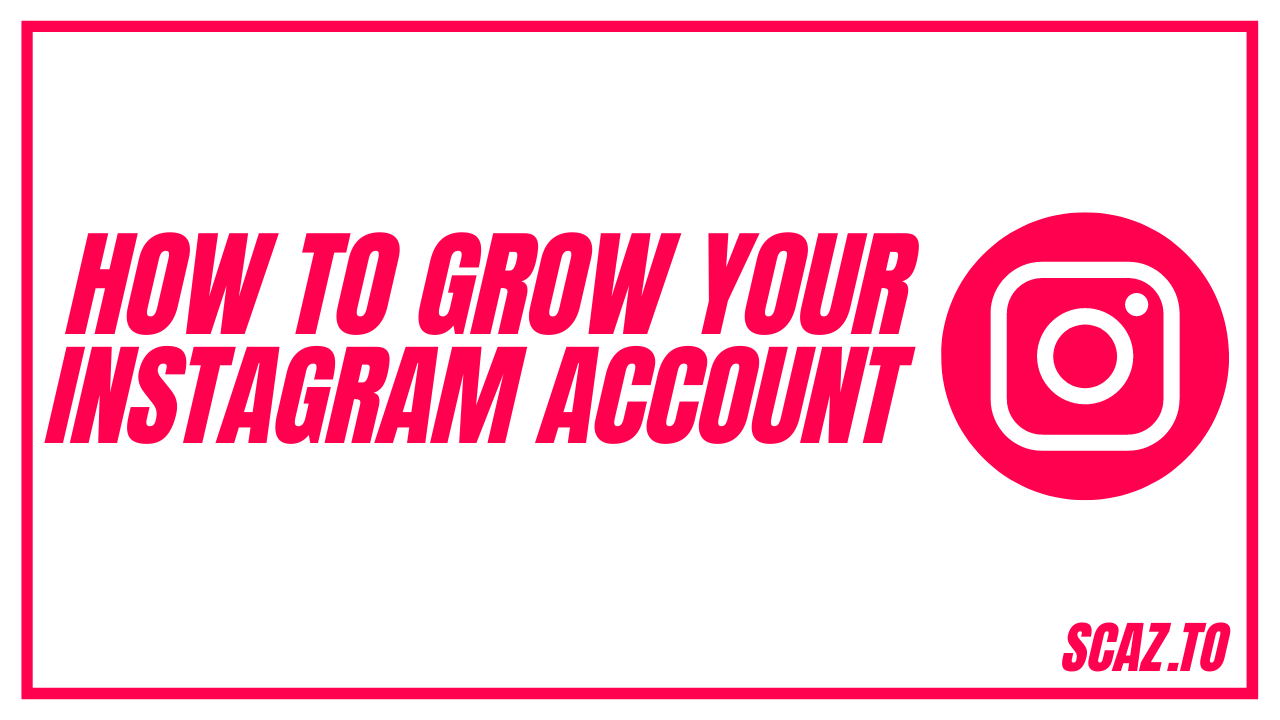
How to Grow Your Instagram Account Followers
In this guide, we will show you how to grow your Instagram account, how to get your first followers and everything you need to know to further progress on Instagram.
This guide is not for those with an attention span of less than 10 seconds, as we have not included many pictures in this guide (if any).
Following
Following people in your niche is the best way to get started. If you post useful content and follow people who might be interested in your content, you have a great chance of earning a follow back. When following people, you need to accept the fact early on that you will be following complete strangers; however, there are right ways to follow people and wrong ways to follow people. My following techniques are one of the reasons I believe I have become so successful.
Step 1: The first thing you need to do before you start following is to identify ‘targets’. You will essentially be following the accounts that interact with these targets.
Find people who aren’t superstars, but still have a good following. For example, if you are into makeup and fashion, Kylie Jenner would not be a good option. Even though she’s the face of that niche on Instagram, her followers don’t necessarily want to see your stuff because they might be interested in her for a variety of reasons. Bots also target these big accounts. One company found that 53% of Justin Bieber’s Twitter followers were fake; and trust me, those kinds of numbers exist on Instagram.
Ideally, you want to look for people who have about 100,000 to 400,000 followers, and the number of likes per post they get should be at least 10% of their follower count. So if someone has 100,000 followers, their photos should get at least 10,000 likes. If this number is below 10%, do not use that account as a “target. When you follow people, you don’t just want to get followers in return – you want to get likes, comments, and customers. The best way to gain this type of audience is to follow the likers, commenters, and customers of target accounts.
Another thing to consider is the ratios from the perspective of the accounts you follow. When people talk about ratios on Instagram, they’re usually talking about the number of followers a person has compared to the number of people they follow. When you’re following people, it’s best to look for people who have close to an equal number of followers and followings – or a 1-to-1 ratio. For example, if you see someone who has 500 followers and follows 500 people, that person is much more likely to follow you back than someone who follows 100 people and has 2,000 followers.
You will have better luck following public accounts than private accounts. With public accounts, you will be able to follow with step 2. Following private accounts also affects the number of accounts you can follow. Instagram allows you to follow up to 7500 accounts, but if you are waiting for approval on 500 private accounts, then Instagram won’t allow you to follow more than 7,000.
Do not follow if the person has no posts. These people may follow back, but they are not good customers.
When I’m growing my accounts, I find myself following more than 200 people a day. This can be tedious and time consuming. But it is worth it. Following 200 people will usually result in a gain of 50 to 75 followers if you are providing good content. Once accounts get bigger, I can follow less and focus more on my content. This will be discussed later.
Step 2: Following with a 1-2 punch
Following with a 1-2 punch is the little-known method that has helped me gain millions of followers. Once you follow a user you identified in Step 1, the ideal way to get them to follow back is to like the most recent post they made and then like an older post from about 2-3 weeks ago. If they don’t post consistently, liking one of their first photos is also a great way to get them to follow back.
This looks great because when the user sees this notification, it looks like you’ve scrolled through their account and found content you like. They’ll appreciate it, and they’ll be more likely to follow you back and like some of your photos – increasing your engagement rate.
Often, when people are followed by strangers, they have a hard time following back because they assume it’s one of two things:
- A. Following to get a follow back (and then unfollowing).
- B. A bot following (and then un-following).
But if you follow with the 1-2 punch, most people will believe you are genuinely interested in their content. This gives you a much higher percentage of getting a follow back.
Important Warning
The 1-2 punch is the best way to grow on Instagram using the follow/unfollow method.
- Find target sources in your niche that have a lot of people commenting and liking their posts. If you have a comedy account, a great example would be @kalesalad. They have 300,000 followers and they have, on average, about 45,000 people who like their content and receive 500-2,500 comments per post.
- Search through the comments and likes for people who have a public profile. If they have less than 5,000 followers, they are more likely to follow back. Like their most recent photo and a photo from a few weeks ago, then follow them. Repeat this over again for the best results.
Commenting
Commenting is incredibly important for increasing your overall presence on Instagram. In a way, it’s more important than following because you can attract more people than just a single user.
Commenting is best used when the target has similar statistics to you. Find people in your niche who would be really interested in your account. Don’t waste your time commenting on superstar accounts.
I advise against spamming of any kind. There is no need to write comments like “Follow my account!” or “Nice post!” on every single post you come across. Get personal with the person. Ask questions. Be specific so it looks like you’re not just another bot.
Liking
Your goal when liking photos is to like over 400 per day. That may seem like a lot, but if you follow 200, then technically you can just use a 1-2 punch and like two photos when you follow someone and you should be fine. Liking is just not very effective if you don’t already follow the person… unless you like people in your own feed.
I ran a test once where I liked 1,000 random photos based on hashtags popular in my niche, and I only got two followers. I ran a similar test where I did a 1-2 Punch on the 500 people I followed and received 400 followers. So, liking people’s photos when you follow them is extremely important, and it’s less effective when it’s people you don’t follow.
Un-following
Unfortunately, at some point you will have to unfollow the people you once followed (even if they followed you back). Instagram has a maximum of 7,500 followers. Unfollowing depends a lot on what your ratio cycles are. This is described below. If you’re just interested in unfollowing people who don’t follow you back, there are plenty of apps that can help you identify who those people are. Just search the Google Play or Apple Store and you’ll find one! Of course, unfollowing people you follow will result in some loss of followers, but this will be offset by the number of people you will gain organically. Also, people will have a hard time unfollowing your account if your content is what made them follow you in the first place. In other words, if you provide good content, people won’t unfollow you because they’re genuinely interested in your posts.
Ratio Cycles
To optimize your follow-back percentages, it’s a great idea to follow a ratio cycle. A ratio cycle is what your account’s following-to-follower ratio should look like at any given point in time as you grow your account. Please refer to the chart below to see how you could gain 5,000 followers in a month (easily scalable to 15,000 or even 20,000, depending on how aggressive you are and how good your content is). By sticking to a strict ratio cycle, you will optimize the performance of your account. Note that these types of results will only occur if you have entertaining content, are in a fast-growing niche, and use the 1-2 punch following method.
Nobody likes following hundreds of people a day – but that’s the unsexy truth about gaining followers when you first start on Instagram. Don’t believe in these “secret tools” or “unique methods” that promise you thousands of free followers – they’re all scams. You need to attract real people to your account to get real results – and the only way to do that is to find them yourself.
Eventually, you won’t need to follow people to get followers; unfortunately, that’s not the case at first. Once you have your first 15,000 followers, you can spend more time creating viral content and interacting within engagement groups.
Generic Ratio Cycle – Gain 1,500 Followers in a Month
| Day | Following | Followers | Likes Per Day | Following Per Day | Un-follows Per Day | Followers Gained |
|---|---|---|---|---|---|---|
| Day 1 | 200 | 50 | 400 | 200 | 0 | 50 |
| Day 2 | 400 | 100 | 400 | 200 | 0 | 50 |
| Day 3 | 600 | 150 | 400 | 200 | 0 | 50 |
| Day 4 | 800 | 200 | 400 | 200 | 0 | 50 |
| Day 5 | 1000 | 250 | 400 | 200 | 0 | 50 |
| Day 6 | 1200 | 300 | 400 | 200 | 0 | 50 |
| Day 7 | 1400 | 350 | 400 | 200 | 0 | 50 |
| Day 8 | 1600 | 400 | 400 | 200 | 200 | 50 |
| Day 9 | 1600 | 450 | 400 | 200 | 200 | 50 |
| Day 10 | 1600 | 500 | 400 | 200 | 200 | 50 |
| Day 11 | 1600 | 550 | 400 | 200 | 200 | 50 |
| Day 12 | 1600 | 600 | 400 | 200 | 200 | 50 |
| Day 13 | 1600 | 650 | 400 | 200 | 200 | 50 |
| Day 14 | 1600 | 700 | 400 | 200 | 200 | 50 |
| Day 15 | 1600 | 750 | 400 | 200 | 200 | 50 |
You will notice that I do not unfollow people for a few days. This is because I like to give people time to follow me back. There are automated programs that can unfollow people after they haven’t followed you for X number of days; however, without programs like this, it’s hard to know if they’ve had enough time to follow you. I recommend that you do your daily unfollows before you do your daily followings, so that you give everyone at least one day to follow you back.
You also need to be aware of Instagram delays. Instagram delays have changed over time. Instagram delays are the amount of time it takes to process each action an account takes. For example, you can’t follow 60 accounts in 60 seconds – Instagram will limit your actions if they think you’re spamming. It’s best to spread out your Instagram actions throughout the day to avoid Instagram’s limitations and delays. These delays and restrictions vary from account to account, so be careful.
Now, of course, this ratio cycle is incredibly idealistic and hypothetical. Most people won’t follow it exactly, and you probably won’t get this high of a follow-back ratio every day (especially considering recent Instagram action blocks), but this should give you a good idea of how to move forward.
Phases of Growth & Engagement Groups
Your First 15,000 Followers
Your account growth is measured by the number of followers you have. At some point in the life of your account, you will find that it takes less effort to grow. Let me walk you through the steps so you know what to do when you reach each stage.
Your first 15,000 followers will test your patience like a roommate who doesn’t clean up after himself. Your first 15,000 followers will be the longest and hardest to get. Simply because not many people want to follow accounts that don’t have many followers. Often, accounts with low follower counts are seen as low quality accounts. This makes it incredibly difficult to gain traction on Instagram.
So ultimately, you want to be incredibly aggressive with your interactions during this phase. You want to be very personable with other accounts. It’s a good idea to leave a lot of comments on other accounts, follow 200 accounts a day, and like close to 400 photos a day (preferably using the 1-2 punch method mentioned above). Gaining your first 15,000 followers can be accomplished within a few months, but you will need to spend at least 3-4 hours per day on manual interaction tasks. Refer to the ratio cycle above to get a good idea of what your numbers should be.
Now, does this mean you should spend 3-4 hours a day on your content? Not necessarily, but you still want to make sure your content is of high quality. It would be a good idea to have at least 20-30 high quality posts during this follower phase. The more posts the better. It will be difficult to gain followers if you only have a few posts.
Remember that your content should follow the 10% engagement rule up to this point. If you have 10,000 followers, you should be getting about 1,000 likes per photo. If you are getting less than 10% of your likes, you need to consider a few things:
- Is your content good enough to get 10% of your audience’s attention? Does your content need to be of higher quality? Is your content original?
- Do you need to change your target account? Sometimes popular accounts can be deceptive and have fake likes/followers. Make sure you follow good accounts and like their material.
The number of comments you receive depends entirely on your niche and each specific post. For example, if you have a comedy/meme account, it is likely that your followers will tag their friends in the comments section – resulting in more comments than the typical niche. If you have a fitness account, you will typically receive more question-type comments. Know what type of comments to expect in your niche.
Depending on the niche, monetizing too early may turn off your customers; and in most cases, monetizing is not recommended if you have less than 15,000 followers. Effectively monetizing to your followers requires authority and trust, and it’s hard to get that with less than 15,000 followers.
During this stage, your follower-to-follower ratio will be the most out of whack. At some point, you will be following more people than people are following you. Don’t worry about it now; it will look better as you gain more followers.
Your First 50,000 Followers
Once you exceed 15,000 followers, your interaction still needs to be vigorous, but at this stage, your content will determine how quickly you reach 50,000 followers.
I typically spend about 2 hours a day doing the 1-2 punch and about 2 hours a day preparing the best content I can. This seems like a lot of work, but when you think about it, it’s an investment that can pay off big time.
Sometimes it can take a month to get to 50,000 followers, and sometimes it can take 3-4 months, depending on your niche and the content you provide, but one thing is for sure – your growth rate will accelerate once you get past 15,000 followers.
Monetizing at this point is still not ideal, but when you feel like you’ve become an authority in your niche, you can start monetizing your followers; however, being too aggressive at this stage will kill a lot of momentum. People are still looking at your account and deciding whether or not to follow you – if it looks like you’re just selling things to your followers, people won’t follow you, and getting to 50,000 will be incredibly difficult.
Now is a good time to start creating content that people want to share, and get your content ranked in certain hashtags. If you can get over 1,500 likes per post, it should be fairly easy to become a featured post within a particular hashtag. Many of your followers at this stage will come from the Explore tab and the hashtag.
You can also start thinking about engagement groups at this stage. Oh, what are engagement groups?
Engagement groups are one of the best ways to accelerate your growth if you use them correctly. The problem is: Most people don’t use them right.
Now, I can’t go into the specifics of any particular engagement group (they all vary), but the concept is pretty simple. You are in a group with other people based on the size (or niche) of your Instagram account(s). These groups are usually in an Instagram DM chat. Sometimes larger groups use a Telegram chat room. I believe some groups use Skype.
For example: If you are in a 50k engagement group, you are in a group with other people who have at least 50,000 followers.
Example: If you are in a nature engagement group, you will be in a group with other people who have nature accounts.
How Engagement Groups Work
During “rounds,” you comment/post your Instagram content so that it can be liked/commented on by other people in the group. The influence of the other people who like/comment on your content increases the likelihood that your content will appear in more Explore feeds.
What exactly happens in an engagement group (how many rounds per day, posting requirements, account requirements) varies from group to group, but the goal is to like (and/or comment on) each other’s Instagram posts in the group. The main theory is based on this: If you have ten other accounts in the group that like your post, each with over 100k followers, you could potentially show up in over 1 million Explore feeds across all of those accounts’ followers. This could lead to huge exposure!
I really appreciate engagement groups; and when done right, they can be an incredibly powerful tool for rapid growth. However, most accounts in engagement groups are doing it wrong. Here’s why:
Many of the engagement groups have specific posting rules that can damage content.
Never feel pressured to post bad content just because a round is in progress. This kind of pressure forces a lot of users to post really bad content just to get all that extra exposure. I’m not kidding.
Now, my views on how often you should post have changed a bit. I think if you can post 3-6 quality posts a day, then you should do it (depending on your niche). The problem is that most people can’t even post two quality posts a day. So they end up getting thrown into engagement groups, and they want to get as much exposure as possible, so they post sub-par content to maximize their potential benefits. I firmly believe that rushing content just to get into an engagement group is detrimental. Sure, you might get more exposure, but rushed, sloppy content will hinder your ability to sell to your followers, and your current followers may not appreciate the sloppy content – which could lead them to unfollow you.
Engagement groups are pretty much useless unless you are all in the same niche (unless your content has mass appeal).
This should be a very simple concept. If you’re a 100k nature account and you’re liked by a 100k fitness account, you’re not going to get nearly as many benefits as if you were liked by another 100k nature account. The people who follow fitness accounts probably won’t be interested in your nature account (unless you have mass appeal). Very specific niche accounts will still struggle in general, non-specific engagement groups.
Engagement groups are of little use if the accounts that like you have less than 10,000 followers.
You are more likely to end up in the Explore feed of the followers of the accounts that like your content. You see, it doesn’t do you much good to be liked by accounts that barely have any followers (especially if everyone in the group is from a variety of different niches). Simply put, using a follow/unfollow method will most likely give you much better growth than praying to land in the Explore feed somewhere. Instead, try the 1-2 punch method.
You can benefit greatly from being liked by large follower accounts, but small follower accounts won’t do you much good. If you are a small follower account (and you have your checkbook open), you can message larger accounts (within your niche) to see if they would be willing to interact with you. Most accounts will do this if you offer them cash, and it can accelerate your growth if done correctly.
Engagement groups really don’t work well for huge accounts.
Large, established accounts seem to have a hard time benefiting from engagement groups – which is interesting. This could be for a number of reasons, but I know a lot of people who seem to opt out of engagement groups when they hit 1 million followers. Some reasons include: not trying to grow aggressively, focusing more on monetization, lack of growth numbers, the niche is at capacity, etc.
Engagement Group Verdict
If you have at least 10,000-500,000 followers, I would recommend finding a niche-specific engagement group that includes a lot of the big players in your niche. Otherwise, go out and DM/message similar accounts in your niche and ask them if they’d be interested in doing some sort of engagement group. Don’t be tempted to create weak content just to get more exposure. The best way to find engagement groups is to simply message people within your niche on Instagram.
But remember this: Content is key. You don’t need engagement groups to go viral. At the end of the day, if you’re still posting weak content (engagement groups or not), you’re going to struggle to find success on Instagram.
50,000+ Followers
Once you hit 50,000 followers, Instagram switches from “working on an assembly line” to “playing a game of chess. Interaction, while still important, can be dialed down. Most of your followers at this stage, and beyond, will come from your content. It’s up to you to create the most exciting, shareable content you can. You don’t necessarily need to follow people anymore, but liking and commenting on your timeline can increase your likes (keep these engagements within your niche). While it’s no longer the biggest benefit, it’s common for people with over 50,000 followers to keep their following under 2,500.
Remember, your engagement rate should still be above 10%. A common practice to keep people engaged with your content is to write captions such as “Tag someone who…” or “Like this post if you…”. Let your imagination do the rest. At this point, monetization needs to come to the forefront. This is the point where you have enough authority to sell things to your followers without turning them off – if you do it right.
As your account progresses, continuing to do niche-specific engagement groups is a great idea. The bigger your account gets, the bigger the accounts you should be engaging with. If you have 100,000 followers, avoid interacting with an account with 1,000 followers – Instagram doesn’t like to see such drastic differences.
Growing with Shout-Outs
Why Shout-Outs?
Now it’s time to talk about another growth hack: Shout-outs. As the name implies, a shout-out is when an account tags or calls out your account in their posts.
Shout-outs are often controversial, as some people claim they work, while others claim they don’t. However, when done correctly, shout-outs are a powerful growth tactic because it leverages the growth of two accounts as opposed to one. When it comes to Instagram growth, there is strength in numbers.
Finding people who will shout you out
There are three different ways you can approach shoutouts:
- Use your own network (your accounts do shout-outs to each other)
- Buying shout-outs from other people
- Exchange Shout-outs with someone else (S4S)
The first option is probably the cheapest because you can use your own network. This can be accounts that you own, or by asking friends and acquaintances to give you shout-outs (hopefully for free). On a practical level, this will be the most feasible way to use this strategy over a long period of time.
If you are a woman and have a fitness-related account, you can start building other niche fitness accounts (fitness workout videos, fitness nutrition, etc.) in your spare time. You can use your main fitness account to “shout out” the smaller accounts, and as the smaller accounts grow, you can shout out your main account.
The second option is to buy shout-outs from other accounts outside your network. If you have a fitness account with 10,000 followers, buying a shout-out from a fitness account with 100,000 followers could lead to some nice growth.
However, this could be an absolute nightmare. It’s not free, and the end result may not be anything like what you expected. If you are considering buying shout-outs, be sure to do a quality check on the account first. Watch out for:
● The use of engagement groups or any form of ‘artificial’ engagement
● The overall engagement rate of the account
● The growth of their follower base
These are all important things to consider, as they will greatly affect the price and impact of the shout-out. I list engagement groups as a form of “artificial” engagement because, while engagement groups are generally a good thing, the number of people commenting on their post may not match what you’d expect from a shout-out.
For example, if your account consistently has 20 commenters (15 of them in an engagement group), you probably shouldn’t expect a shout-out to bring you 10 new commenters. Additionally, you’ll want to buy shout-outs on accounts that have a high “organic” engagement rate. Due to Instagram’s recent API updates, it can be difficult to track an account’s growth. The higher the organic growth and engagement, the better.
Every time you advertise, you are likely to lose followers. People don’t like to see advertisements. The more you can “hide” the shout-out, the fewer followers you’ll lose; however, it’s also possible that if you “hide” a shout-out, it won’t be very effective anyway.
Shout-Out Frequency
In my experience, it is best to do this every 2-4 days. Keep in mind that posting shout-outs frequently will hurt the engagement of the poster. As I just mentioned, shout-outs are essentially ads, and no one engages with ads. The account should expect losses in both likes and comments, and perhaps even a period of slower follower growth, but a regular posting schedule can bring those levels back to normal.
Stories for Additional Exposure
You can also get creative with Story shout-outs. A “healthy” Story shout-out isn’t nearly as damaging as a regular feed shout-out, but it can also be much less effective. Have the person shouting you out prepare 3-4 regular Stories, and then add your shout-out at the end.
Captions
Captions can make or break your shout-out. You want to find that healthy balance between “Go follow @thisaccount” and a typical post you’d expect on the account.A typical post probably won’t urge anybody to go do anything, and advertisements can be harmful to growth and engagement.
Saying something as dry as “follow my friend @photographer for some cool photos” probably won’t do much, but it’s better than nothing. Shout-outs should be treated as introductions to accounts – not advertisements. They simply help people discover what a great account it is by instilling a sense of FOMO (fear of missing out). Make them want to follow the account.
A good example of a fitness account shouting out to another fitness account:
“Hey guys! If you like my fitness videos, you should check out @fitnesschick! She posts some awesome fitness videos that I’m sure you’ll really enjoy! (insert emoji here)”
This caption accomplishes:
1.) Doesn’t look like a paid ad
2.) It looks like you are just helping your followers and this random Instagrammer
3.) You’re not pressuring your followers to follow, but there’s a fear of missing out if they don’t
The caption above is way better than:
“Follow @fitnesschick for the best daily workout videos!”
Additional Tricks
Ideally, the account doing the shout-outs (whether it is your account or someone else’s) should archive old shout-out posts. This will ensure that there is only 1 post in their feed that is a shout-out. The advantage of archiving is that all the metrics (likes, comments, views) are saved. This can be an important resource later, and it’s important for the algorithm.
Private Shout-Outs can be Extremely Effective
It’s no secret that shout-outs can be either a hit or a miss – especially for smaller Instagram entrepreneurs who just want to get their name out there. If you’re an Instagram newbie, chances are you’ve paid for some unsuccessful shout-outs. Wondering what you’re doing wrong? There could be numerous issues with your shout-out, but the best way to get more followers is to go private right before the shout-out.
If doing engagement groups isn’t the best way to grow, then going private is. This is probably the most commonly used growth tactic right now. There are two ways to do this.
1.) You pay for a shout-out from another account. You go private before you get shouted out.
2.) You swap shout-outs with another account. You both go private before the shout-out, and you post at the same time. Typically, every time you post a shout-out you’ll lose followers, but when you are also receiving a shout-out, you end up gaining a TON.
It’s such a simple idea, yet no one does it. This works better than public profiles because it creates a sense of intrigue. More people are likely to scroll through a page and not follow it if it’s a public profile. If it’s private, a lot more people are likely to follow it.
Try this the next time you get a shout-out. It also helps if the person giving you a shout-out creates a call to action that recognizes that your account is private. A common call-to-action caption I see is something like this:
“Check them out! They’re accepting the next 500 people that follow!”
Many accounts do promotions by simply “giving credit” to the picture they are shouting-out.
Use Caption Pods for Insane Growth
This is also self-explanatory. The idea here is to share captions with other users to get more followers together. You simply tell your followers to follow other accounts (that also have your name in their caption).
Sure, you’ll lose some followers by doing this. But statistics show that you’ll grow more together than if you tried to do it yourself.
Use Stories & Instagram Live When You Post to Get Additional Traction
Getting as many people as possible to like and comment on your post immediately after you upload it will drastically improve your chances of landing in Explore. You’ll often see people taking advantage of Instagram Live by encouraging their followers to like and comment on their latest post. Both niche and personal accounts use this tactic to their advantage. Even though it doesn’t look great (it looks pretty spammy), people continue to do it because of the results it gets.
Chapter Overview & Key Points
- Interacting with others is essential for growth when your account is relatively small.
- Identify a target account in your niche. Find a popular account that has a strong following, a high engagement rate, and followers who would be interested in your content.
- Follow with a 1-2 punch. Follow the likers and commenters of the target account, and like a recent photo of theirs and a more dated photo of theirs. This is your best chance of getting quality followers.
- Just liking random photos within your niche is not very effective. Stick to the 1-2 punch and quality comments.
- Find a ratio cycle and stick to it.
- Find people within your niche who are willing to trade shout-outs with you. When creating shout-outs, try to make them seem natural.
- Understand that there are several different stages of growth when it comes to Instagram.
- Making your account private right before you receive a shout-out can greatly increase the number of follows you receive.
- Using caption pods with other growing Instagram accounts can help you share the wealth.
- Using Stories and Instagram live to your advantage can quickly drive users to your posts – the more users who initially engage with your posts, the greater your reach!
Should You Do Part Time Or Full Time Freelancing? Here’s How To Figure Out
Looking to make some extra cash? Who is going to say no to that, right? Freelancing is actually one of
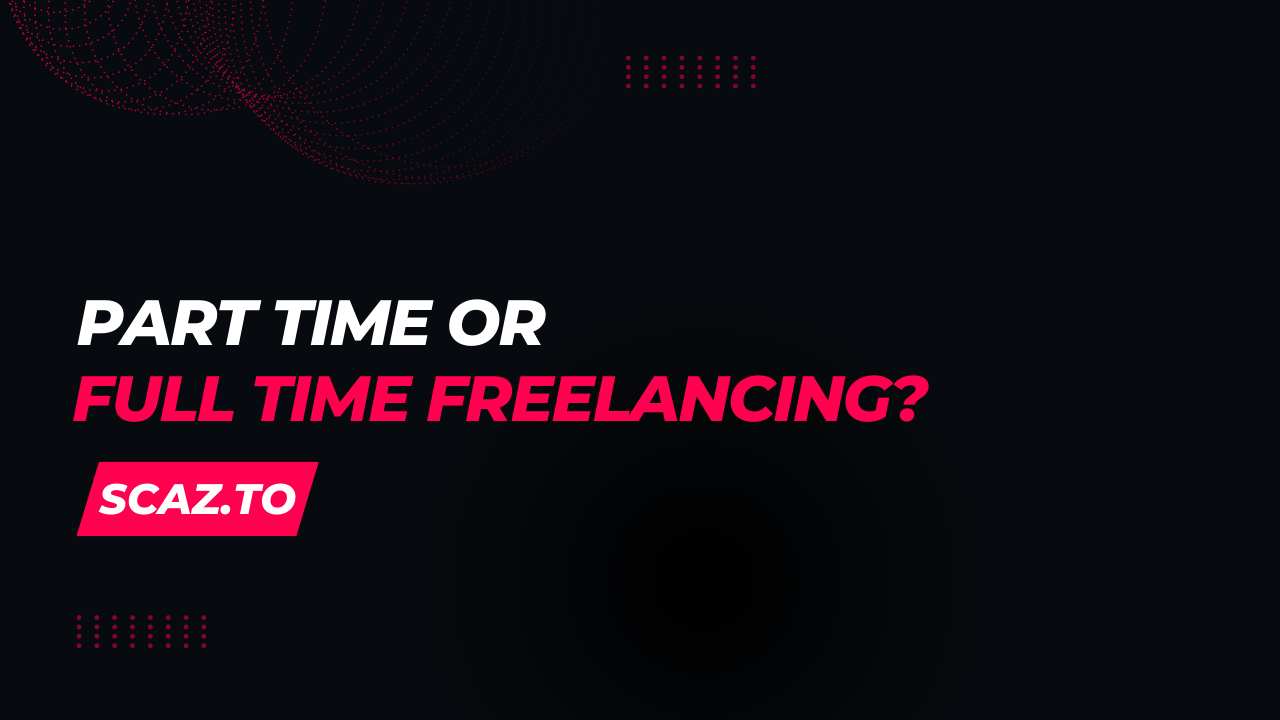
Should You Do Part Time Or Full Time Freelancing? Here’s How To Figure Out
Looking to make some extra cash?
Who is going to say no to that, right?
Freelancing is actually one of the fastest-growing industries worldwide. Just take a look at all the new freelance sites popping up all over the place.
People are quitting their day jobs to work from home and triple the amount of money they make each month.
It’s also turning out to be a great part-time job. College students are doing it to pay their tuition. Stay-at-home moms are doing it to make ends meet, and 9-5 office workers are doing it too.
40% of America’s workforce will be freelancers by 2020 – Quartz
However, not all freelancers are successful.
There are three main reasons why most new freelancers fail:
- The assumption is that they can make money sitting in front of a computer.
- Not being able to find clients.
- Failing to take it seriously enough.
Let’s talk about some of the things you can expect as a freelancer before we get into the part-time vs. full-time freelancing battle or how to start freelancing.
The Difference Between Part-time Work and Full-time Work
The main difference between working part-time and working full-time is the amount of work you accept.
Part-time freelancers can accept smaller jobs with flexible deadlines. You’ll be able to work on them during your spare time, while studying, or even while working.
As a full-time freelancer, you’ll spend your entire working day freelancing. You will be able to take on more jobs and bigger projects and get them done on time.
If you are a complete beginner, it’s best to try freelancing on a part-time basis before going all in.
If you’re not sure if freelancing is for you, try it part-time. Don’t quit your day job. That way, you won’t be taking any unnecessary risks.
Of course, there are also people who freelance part-time for long periods of time.
Freelancers Work More Than Most Regular Employees
Forget about becoming a freelancer if you think freelancing is all about sitting in front of a computer and transferring money to your PayPal account.
In fact, freelancers do more work than most people who have a day job.
When you work for someone, you’re told what to do. He or she leaves all the work at your desk to be done and hands you a paycheck at the end of each month.
Freelancers, on the other hand, find work themselves. They surf the web every day, they promote themselves on social media, and they take on big projects all on their own.
To make matters worse, we also have to chase clients to get paid. And that happens a lot more often than you might think.
The only benefit we get from all this effort is this: We make more money.
Once you accept this reality and are willing to do the extra work, you’re ready to start freelancing.
Get Your Feet Wet First
In short, part-time freelancing is for newbies.
It’s for people who want to make a little bit of extra money while still getting their paycheck from their day job. It is for people who prefer to have some financial security.
Whenever someone asks me about freelancing, my advice is always to do it part-time first. Just to get their feet wet. To see if it’s something they really want to do.
And if you want to earn more money, but you’re not ready to risk your job and your financial security. Then I’m going to give you the same advice. Do a little part-time freelancing. See how it goes.
Of course, most part-time freelancers end up going full-time in the end. And why is that? Because it’s way more fun.
Time To Get More Serious
Full-time freelancing is for the risk-takers.
If you’re unemployed and having a hard time getting hired. If you are sick of listening to your boss. You spend your day hating yourself for having to work at a bad corporate job. Or feel like you’re underpaid for your talents.

Then quit what you’re doing and start freelancing.
Freelancing works best when you put everything you’ve got into it, just like starting any business. That’s because when you have everything to lose, it motivates you. It helps you work harder to reach your financial goals, find new clients, and make more money.
“I’d rather control my own destiny and take on the risk and forgo the benefits of nap pods and food,” says James Knight, a coder who quit Google to become a full-time freelancer. Currently makes $1,000 an hour, according to Bloomberg.
Before You Start Freelancing
If you decide to try part-time freelance work –
Don’t make the mistake of trying to do it as a hobby. And don’t work on your own time. Be more serious about your freelance work. Your clients will be depending on you to get the work done in a timely manner. Don’t expect them to let you off the hook if you miss a deadline just because you’re struggling to balance work and life.
Plan ahead. Figure out how many hours of your time you can put into your part-time job. Do market research to be sure that your skills are marketable and that there is sufficient demand. And find the best places to work part-time that fit your skills as well.
If you decide to go full-time freelance –
Don’t quit your job immediately. Save a little extra money first. The first few months of freelancing will be tough. So make sure you have enough to get you started, just in case.
Go online and find out how much your skills are needed. See if it’s enough to pay your bills.
Before you quit your job, contact a few clients and try to get a project or two to work on. This is so that you can be sure that you will have an income at the end of the month.
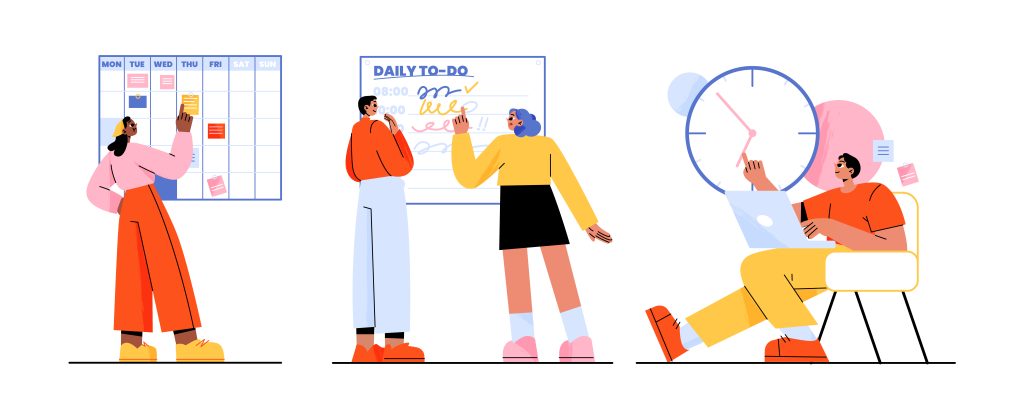
If you can, talk to your boss and offer to freelance for the same company. You only do the work you like, you can work from home, and you can work with more clients outside the office. They only pay you for the amount of work you do.
It’s a win-win situation. You won’t be able to resist this offer.
The Best Path To Take
You don’t have to quit your day job to start freelancing. If your day job is paying enough to cover your expenses, consider freelancing part-time to make a little extra money without risking your finances.
Go full-time when you feel confident and there’s enough demand for what you have to offer. Or just dive in and give it your best shot if you’re unemployed.
In Conclusion
At first, it may seem too difficult to build your reputation, find clients, and meet deadlines. Working through that is challenging.
Once you’re on the other side, you’ll experience the full freedom and all the good things that freelance work brings to your life.
How To Create The Perfect Freelancer Profile On UpWork
It’s been a few weeks or even months since you signed up as a freelancer on UpWork, but you still
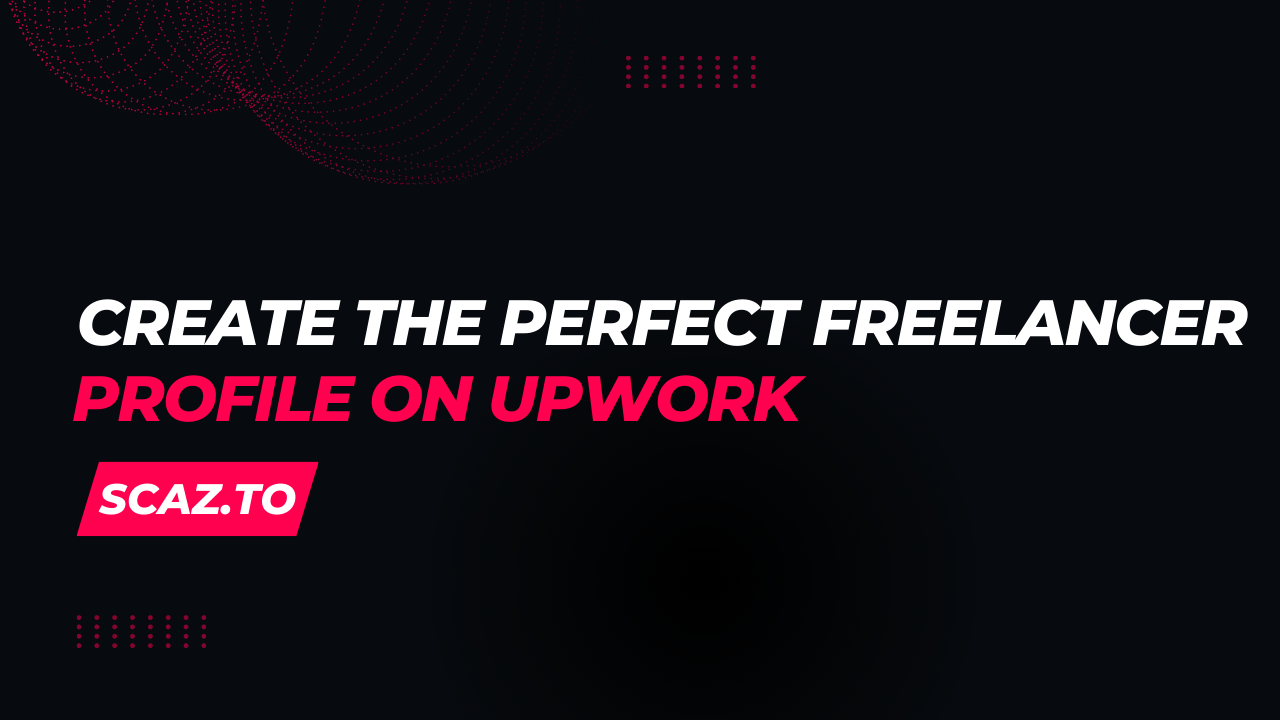
How To Create The Perfect Freelancer Profile On UpWork
It’s been a few weeks or even months since you signed up as a freelancer on UpWork, but you still haven’t had any luck finding work.
Does this sound familiar?
One of the main reasons why most freelancers struggle to get work on platforms like UpWork is because they have incomplete or poorly written freelancer profiles.
That’s because when you apply for a job on UpWork, the first thing your client does is check out your profile to learn more about you. And an incomplete or poorly written profile can give your clients the wrong impression of you.
UpWork, Freelancer.com, People Per Hour, and Guru.com are all great places to start freelancing. However, just signing up for an account and filling it with some random text is not going to work for you.
If you’re serious about a freelance career, the first thing you need to do is create a complete and attractive freelancer profile.
Here are some of the things to look for in an UpWork profile.
Note: UpWork is currently the most popular freelance platform on the web. So, I used the platform as an example to show you how to create a great freelancer profile. But, you can use these tips to create a solid profile on any other platform.
1. Use Your Real Name
Even though it’s common sense to use a real name when conducting business, many freelancers still use fake names on their freelancer profiles.
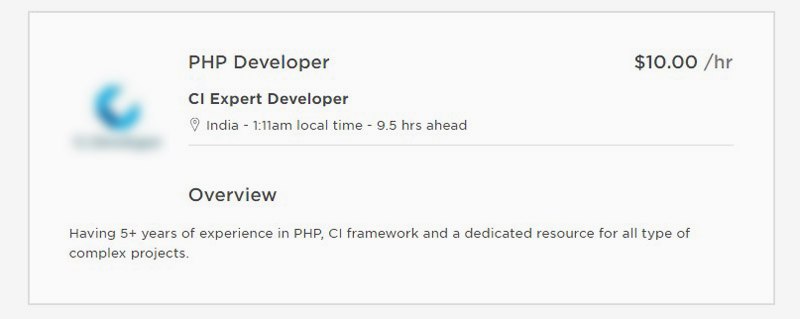
Don’t be ashamed of your real identity. Don’t be afraid to use your real name on your freelancer profile. It will help you stand out. Your name doesn’t have to sound cool or ordinary. There are too many Johns and Janes out there. We don’t need any more!
Also, avoid abbreviations of your name (for example, John S. or Amy C.). Use your first and last name!
If you’re afraid of revealing your identity, get out! You don’t belong in the freelance industry.
2. Upload A Professional Photo
Don’t even think about using selfies or really weird webcam photos as your profile photo. It’s a mistake most amateur freelancers make.
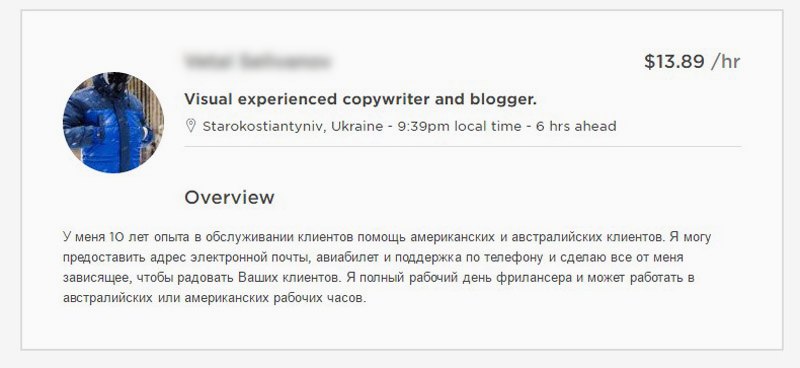
Get cleaned up. Dress well. And get someone else to take your picture. Make sure not to pay too much attention to the background. Most importantly, SMILE!
Did you know that not only does a smile make you look more attractive and confident, but studies have shown that it also increases your chances of getting a promotion in your job?
If you can, go to a studio and have your picture taken by a professional. It’ll be worth it.
3. Craft A Specific Headline
Your headline should be a description of your job title. So try to be as specific as you can to make it easier for your client to understand what it is you do for them.
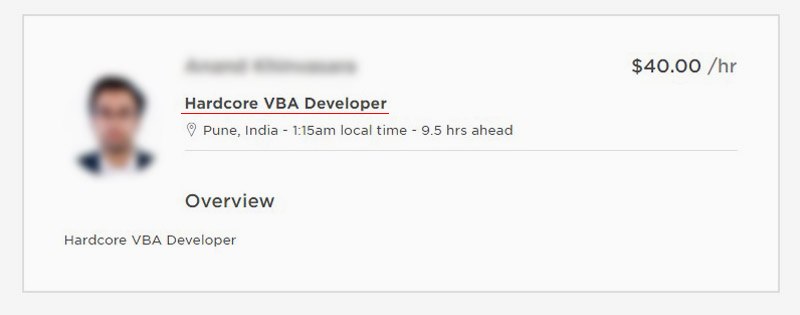
No, not like that.
This is not Twitter. Use a more professional headline.
For example, if you’re skilled at writing eBooks, you might describe yourself as an “eBook Writer” instead of just a “Writer”. Or “WordPress plugin developer” instead of “web developer”.
You’ll have a better chance of getting discovered on a large platform like UpWork if you narrow it down to a niche.
4. Write Your Bio In First-Person
Don’t describe yourself in the third person like you’re narrating a movie, and avoid writing your freelancer profile like it’s a corporate website.
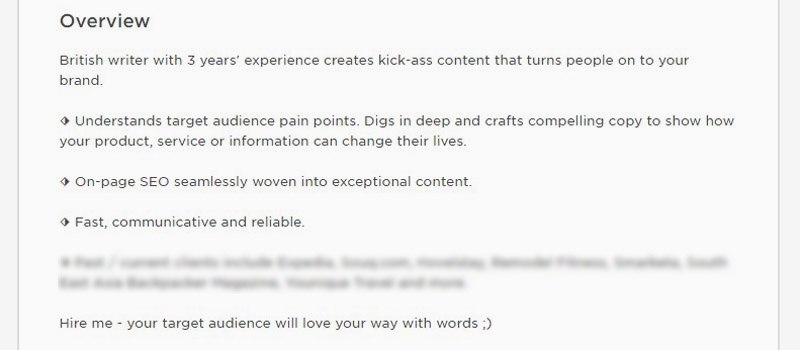
See what I mean? Did you enjoy reading that description?
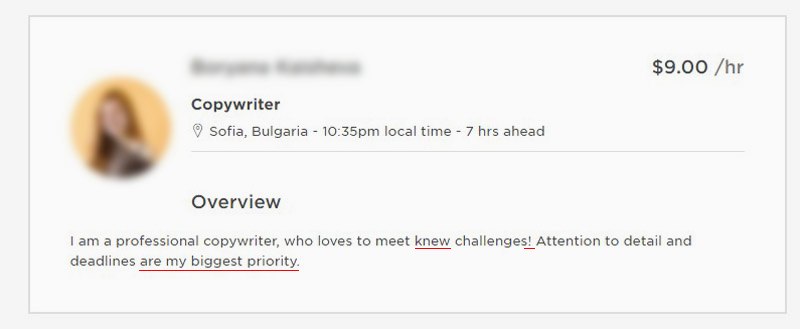
And take a look at this. See what’s wrong here? Does this person sound like a professional copywriter?
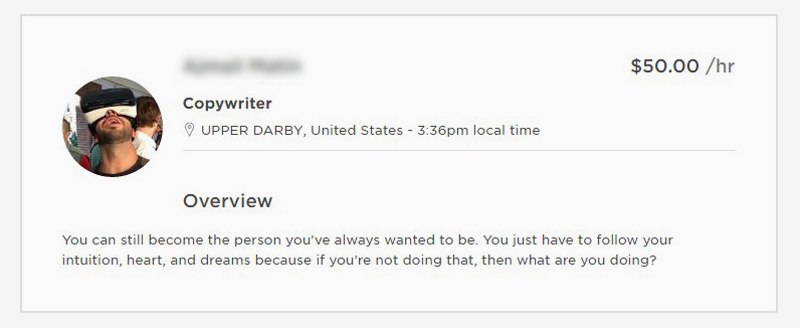
Yes, this is also a real profile.
Instead, I want you to get personal. Imagine you’re writing this bio to send to a friend. Not a close friend or a recruiter, but someone who doesn’t know you very well.
Something like that.
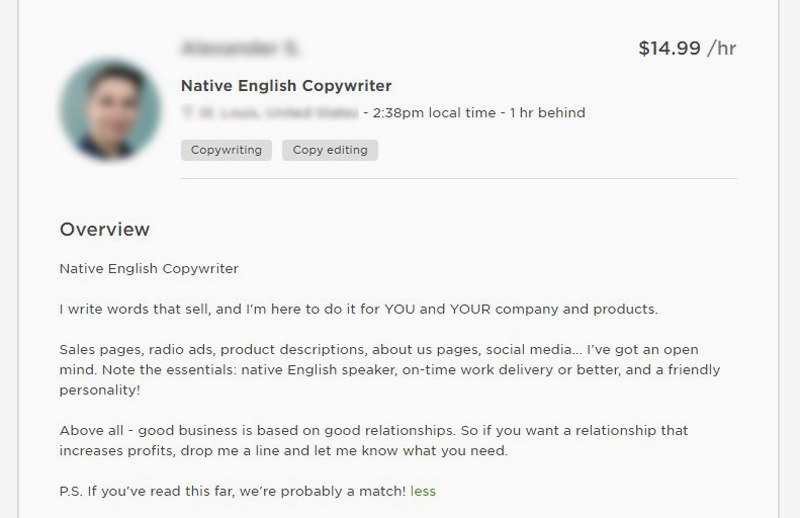
I wouldn’t call it the perfect bio, but it’s efficient. And I have to admit that the last postscript made me laugh.
Your clients aren’t interested in your hobbies or life goals. So keep those personal details to a minimum. You’re creating a freelance profile, not an online dating profile. And try to keep the description under 200 words.
5. Describe Your Qualifications And Experience
It’s best to include a sentence or two in your bio about your qualifications and experience. Try not to brag too much, though. Don’t be like this guy.
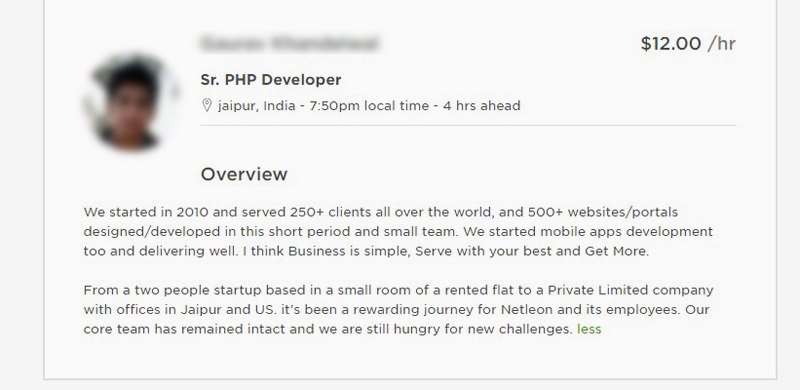
In addition, use your work history, education, and other skills sections to add personality to your profile.
6. Showcase Your Best Work In The Portfolio
UpWork has a dedicated section in your profile to showcase your portfolio. Make good use of it to showcase your best projects.
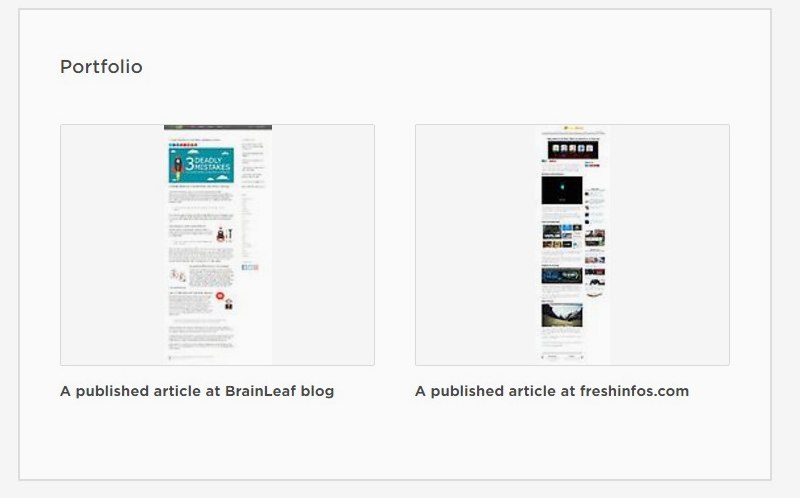
Be sure to upload an attractive image, write a detailed description of the project, and include a link to the source of the work.
If you’re trying to set up your profile on another platform without portfolio capabilities, use sites such as Behance to upload your work.
7. Connect Your Social Networks
With UpWork, you can connect your social networks and portfolios to your profile as a freelancer.
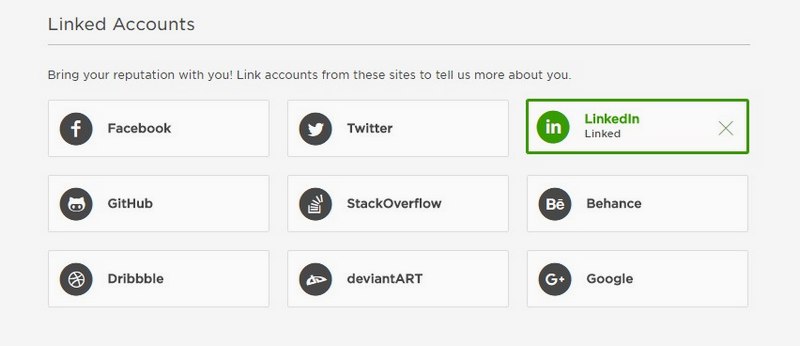
Although links to your social profiles are not shown to your clients, it’s important to connect at least some of your social profiles to the platform to help UpWork better understand you, create a more personalized experience, and display more relevant jobs in the Find Work section.
8. Skill Tests Aren’t Important, But Take Them If You Can
At least that’s what UpWork says on its website. But it doesn’t matter how many tests you pass on UpWork. Clients don’t care about these tests because these tests are no substitute for real hard work.
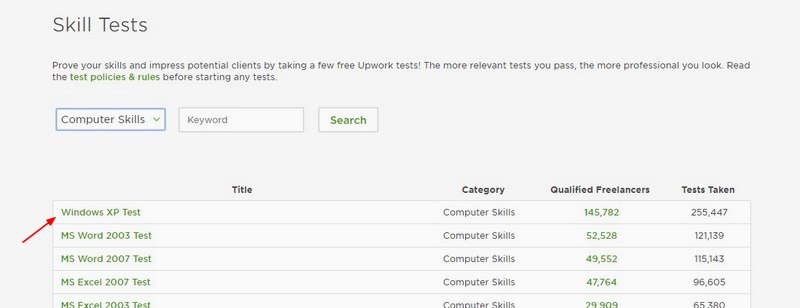
A skills test in Windows XP? Is this 2001?
Don’t worry about taking tests as long as you have a solid portfolio to show off your reputation.
But if you have the time, feel free to take as many as you can.
A Few More Tips For Going Forward
- Perform a spelling and grammar check: Use a tool like Grammarly to check your profile bio for errors before you publish it. It only takes a few seconds and could save you a lot of embarrassment.
- Steal it: If you’re not sure what to write in your bio, or even how to write it, take a look at some successful freelancer profiles to get an idea.
- Ask for reviews: Most clients will leave a review immediately after a job is completed, but don’t be afraid to ask for one if they haven’t.
- Ask for referrals: If your client says you did a great job, ask them to refer other clients to you. There’s no shame in asking for a referral or help.
- Add a video: UpWork now allows you to add a video to your freelancer profile. This is a great way to draw more attention to your profile. However, it is not mandatory.
Keep in mind that your freelancer profile is your online resume. So, don’t make it too personal. Forget selfies and emoticons. Be, or try to be, a professional.
Now go impress your clients with your amazing profile.
110 Easy Freelance Job Ideas For Beginners
Still, trying to determine where to begin your freelance career? Here are over a hundred freelance job suggestions to get
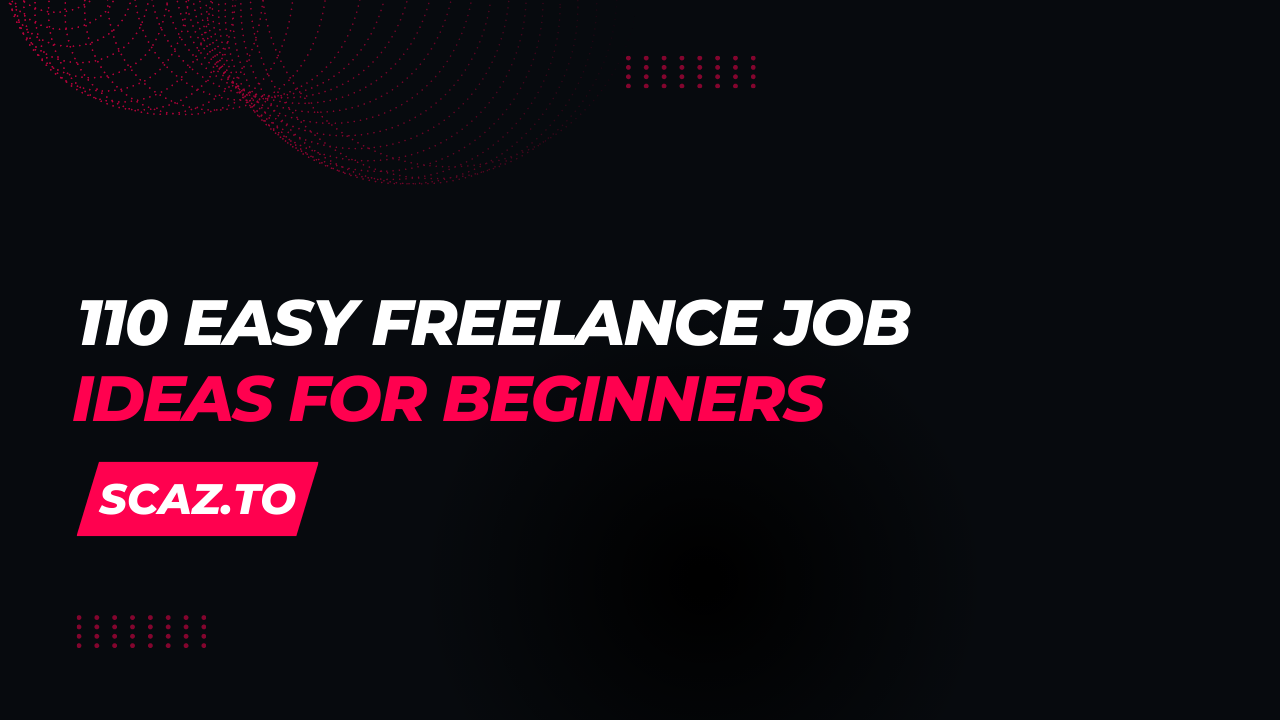
110 Easy Freelance Job Ideas For Beginners
Still, trying to determine where to begin your freelance career? Here are over a hundred freelance job suggestions to get you started.
Using these job ideas, you can earn more than $500 per month with dedication, skill, and effort. These jobs can also be done at home, either full-time or part-time. The decision is yours to make.
After researching popular freelancing marketplaces such as Fiverr, UpWork, Envato Studio, and People Per Hour, I came up with these job ideas. There were plenty of job postings and freelance professionals following these job skills on the marketplaces to guarantee that these job ideas work.
Examine the list and see if you can find a job that better fits your skills.
Writing
1. Article Writer
Write articles for online magazines, news publishers, business journals, etc.
2. Blog Writer
Create content for company blogs or work as a hired blogger. Keep in mind, that writing for blogs requires different skills than writing for magazines and eBooks.
3. eBook Writer
Create how-to articles, strategies, and how-to guides for eBook publication.
4. Fiction Writer
Write novellas, poetry, or short stories for other writers. I regularly perform this and earn between $800 and $2,000 per job (depending on the content and length).
5. Web Content Writer
Write content for websites (eg: about pages, Privacy, terms of service pages, etc).
6. Copywriter
You can write for brands to create engaging content for their online and print promotional campaigns if you are an expert in online marketing.
7. Writing Translator
Text and documents in various languages can be translated.
8. Editor
By pointing out their errors and raising the level of the work overall, you can assist others in creating excellent content.
9. Proofreader
Possess excellent writing and grammar skills? Then use that skill to fix the errors in other people’s work.
10. Press Release Writer
Write professional and straight-to-the-point news articles for media outlets.
11. Ghost Writer
Start writing articles and blogs on behalf of other brands or people.
12. Legal Writer
Write letters and documents to be used by lawyers, judges, and others in law.
13. Resume & Cover Letter Writer
Not everyone is adept at creating an effective resume or cover letter. Assist them in getting jobs.
14. Product Description Writer
Write compelling product and service descriptions, works for both print and online.
15. Transcription Writer
Convert speech to text while listening to audio files. Or, write transcripts to be used on audio recordings, such as jingles and audio commercials.
16. Technical Writer
Write manuals, documentation, and technical guides, among other things.
17. Guest Writer
If you have a blog or have permission to publish on popular blogs, you can take jobs from brands and services to write about their products.
18. Academic Writing
Give struggling students writing assistance for their college essays and academic papers.
Graphic Design
19. Logo Designer
This is a job that can bring in easy money if you have creative skills with Adobe Illustrator or CorelDraw.
20. Photoshop Editor
With Photoshop, you can resize, adjust, convert, and optimize images for other people.
21. Website Mockup Designer
Website mockups are frequently created in Photoshop. If you have the necessary skills, it’s a well-paying job.
22. Photo Editor
Help people enhance their ordinary portraits, change backgrounds, and bring them those photos to a professional level.
23. Photo Retouching
One of the highest-paying gigs on Fiverr is using Photoshop to retouch and add makeup.
24. Graphic/Poster Designer
Create posters in print and digital form, Facebook covers, and other graphics.
25. Icon Design
Create unique icons for brands and companies to use on websites and in print.
26. Book Cover Designer
Design book covers for print and digital books.
27. T-Shirt Designer
Have a knack for creating custom T-shirts? If so, this job is ideal for you.
28. Infographic Designer
A high-demand profession, infographic design pays between $400 and $1,000 per design and occasionally even more.
29. CAD Designer
Draft designs related to architecture and structural engineering fields.
30. Vector Designer
Create content and graphics in a vector format for use in the printing industry.
31. Cartoon Artist
Create cartoons and comics for magazines and brands.
32. Banner/Ad Designer
Create billboards, cutouts, and website banners as well as other print and digital ads.
33. Wedding Album Designer
Another lucrative job with increasing demand.
34. Sketch Artist
Help people turn their ideas into pictures or craft sculptures.
35. Digital Artist
Draw portraits, landscapes, and beautiful artworks using digital software.
36. Vector Illustrator
Create artwork and illustrations for use on websites.
37. Print Designer
Create business cards, leaflets, brochures, etc.
38. Concept Artist
The industries of animation and video games are thriving. Help those developers create fantastic concepts for their creative work by using your skills.
39. Oil Painter
Old-fashioned, but I observed numerous individuals offering oil painting as a service on Reddit and a few other websites.
40. Flyer Designer
Create innovative flyer designs to aid businesses in promoting their products.
41. Brochure Designer
Design brochures for companies and brands.
Web Development
42. Front-End Designer
The look and feel of the website are determined by front-end design.
43. Back-End Developer
The person responsible for creating the algorithms at the heart of a website or web application is known as the back-end developer.
44. UX / UI Designer
Teach front-end developers how to create user-friendly websites and interfaces.
45. Plugin Developer
Create WordPress and website plugins.
46. WordPress Expert
Help people setup their WordPress websites and blogs.
Create customized fonts and icon fonts for use on websites.
48. Bug Fixing
Help users identify the issues with their websites and apps.
49. Server Administrator
Take charge of server-side activities, including setting up appropriate security and configuring apps.
50. Website Builder
Provide businesses with domain name, hosting, and website building services.
App Development
51. App UI Designer
Create user interfaces for mobile apps.
52. App Developer
Create the mobile apps’ backends.
53. Game Developer
Create fantastic Android and iOS games by collaborating with game developers.
Consulting
54. Financial Advisor
Teach and offer guidance to new businesses and startups regarding money management.
55. Legal Consultant
Assisting people and businesses with legal issues and preventing fraud
56. SEO Consultant
Show companies how to make their websites more search engine friendly to increase traffic.
57. Health Advisor
Give people suggestions on how to maintain their health.
58. Parenting Advisor
Being a parent is difficult, especially at this time. Teach those new parents how to raise their children.
59. Fitness Advisor
Assist people in creating diet plans, exercise schedules, and fitness plans.
60. Career Advisor
Assist people in making the best career decisions and achieving success at work. Like what I’m attempting to do here.
Video Production
61. Intro Videos
Make videos to introduce products and businesses.
62. Explainer Videos
Create cool product-explanation videos, similar to the Dropbox video.
63. Video Testimonials
Make videos to share with the world your love for specific products. On YouTube these days, it’s kind of popular.
64. Stop-Motion Videos
Utilize stop-motion to produce fantastic animations.
65. Video Animator
Create animated video segments for YouTubers and businesses.
66. Social Media Video Creator
For the purpose of promoting brands on social media platforms, create promotional videos.
67. YouTube Video Editor
Assist YouTubers in editing and enhancing their videos.
Audio Production
68. Voice-Over Artist
Have a fantastic voice? then begin using it properly.
69. Audio Editor
Help people edit and perfect their podcasts and other audio content.
70. Audio Translator
The number of languages in use worldwide is 6,500. People are constantly looking for someone to assist with the English translation of foreign audio content.
71. Music Composition
Create jingles, sound effects, and background music.
72. Record Podcast Ads
Help online businesses create engaging podcast ads.
Virtual Assistance
73. Virtual Assistant
Manage people’s meetings, schedules, tasks, etc. to assist them in running their businesses.
74. Data Entry
Type data and documents from printed or hard copies into a digital format.
75. Marketing Strategist
Develop strategies for brand marketing online.
76. Social Media Manager
Assist brands in managing their social media channels and keeping their followers entertained.
77. Live Chat Agent
Be a live representative for companies to help them make more sales.
78. Recruiting Agent
Help businesses recruit great employees and freelancers.
79. Customer Support Representative
Support customers solve their problems with products and services.
80. Zendesk Consultant
Show people how to manage customers and support systems more effectively.
81. Project Manager
Manage large projects for businesses.
82. Bookkeeper
Become an accounting clerk to help businesses keep track of their important transactions.
83. Technical Assistant
Assist individuals and businesses in resolving technical issues such as computer problems.
Animation
84. Explainer Video Animation
To use in explainer videos, create characters and animations.
85. 3D Model Designer
Create 3D models for a variety of uses (furniture, vehicles, etc).
Marketing
86. Lead Generator
By using tools like Magento and Zendesk, you can assist businesses in growing their sales and lead generation.
87. Presentation Designer
Create and craft PowerPoint presentation content for a variety of purposes.
88. Online Advertising Expert
Helping businesses run effective ad campaigns (AdWords, Facebook Ads, etc).
89. Social Media Editor
Craft content, graphics, and posts optimized for social networks.
90. Email Designer
Create compelling emails, email templates, and email designs to increase clickthrough rate.
91. Email Outreach
Assist brands in email outreach to other companies, blogs, and publications.
92. Traffic Generation
Show people how to generate traffic for their websites.
93. Write Product Reviews
Be a critique for hire and offer to write product reviews for businesses.
94. Keyword Research
Assist people in researching various online keywords related to their industry.
95. PR Submission
Offer your knowledge of how to reach out to well-known blogs and publications as a service to help promote unique product announcements (eg: latest smartphone releases, app releases, movie releases, etc).
96. Market Research
Assist businesses in conducting market research and analysis to discover more about their targeted audience.
97. Branding Services
For new companies, come up with catchy slogans, taglines, and brand names.
98. Outdoor Advertising
Make contact with businesses and offer to advertise for them on spin boards, billboards, etc.
99. Content Strategist
Plan and develop content strategies to promote brands and businesses.
100. Content Marketer
Market branded content developed by brands and businesses.
Other
101. Freelance Photographer
For local clients, work as a freelance photographer.
102. YouTube Thumbnail Artist
Create custom art for YouTubers to use in their video thumbnails.
103. Website Critique
Offer to list every website flaw along with suggestions for fixing it.
104. Data Analyst
Create dashboards, graphs, and excel sheets using the data you have analyzed.
105. Create Documents
Learn how to use PDF files and how to make fantastic eBooks with InDesign.
106. Gaming Help
It may surprise you to learn that some gamers are willing to pay to boost their Clash of Clans or League of Legends team. Help those guys out by using your gaming skills.
107. Cooking Lessons
Share your macaroni and cheese recipe with the public.
108. Makeup Lessons
Not everyone knows how to do it correctly.
109. User Testing
Offer to test brand-new software, websites, and apps for businesses so they can discover bugs.
110. Travel Planner
Most people enjoy getting travel tips from locals so they can visit the best places.
Please feel free to share any additional fantastic freelance job ideas you may have in the comments section.
10 Best and Highest Paying Jobs for Freelancers
If you want to pick up projects that interest you the most, set your own hours, and work from anywhere,
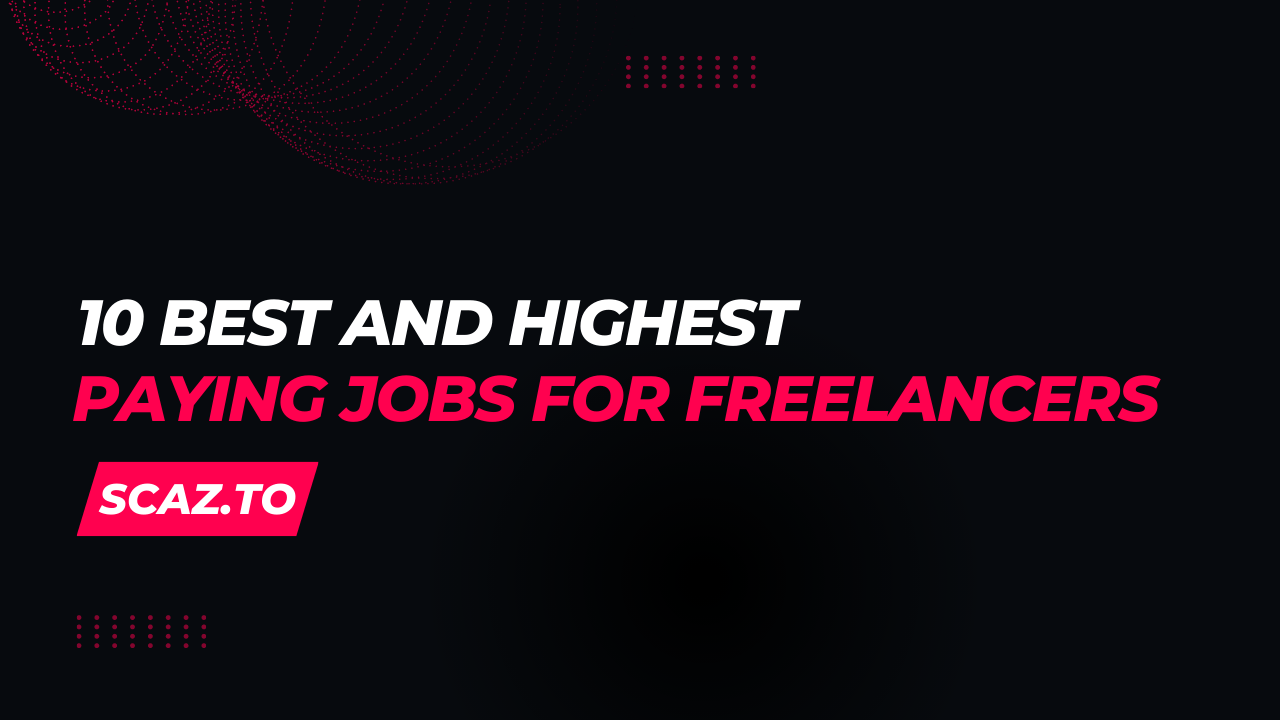
10 Best and Highest Paying Jobs for Freelancers
If you want to pick up projects that interest you the most, set your own hours, and work from anywhere, freelance work is a fantastic option. Therefore, it should come as no surprise that many professionals are making the switch to freelancing as more businesses realize the advantages of working with independent professionals via websites like Upwork. The upside is that market pay rates vary, making it simple to locate higher-paying freelance jobs that match your level of experience.
In this article, discover some of the highest-paying independent gigs and the benefits of showcasing your skills and expertise.
Note: Market rate information is current as of the time of writing but may change depending on the project or freelancing platform. This information serves as a general overview of what the market will likely bring. Rates are based on average earnings on Upwork and data from the Bureau of Labor Statistics.
Copywriter
One of the most promising careers for freelancers is copywriting. You might create newsletters, advertising copy, emails, e-books, articles, and other types of polished content as a freelance copywriter to draw readers in.
The U.S. Bureau of Labor Statistics (BLS) predicts that between 2020 and 2030, employment in this field will likely increase by 9%. Additionally, although statistics indicate that there are roughly 15,400 job openings for writers in the United States each year, the number is undoubtedly much higher for freelancers because you can work with clients from all over the world. Copywriters who take on freelance writing jobs through Upwork typically make between $19 and $45 per hour.
Web designer
To meet specific requirements, web designers assist clients in building websites. A web designer’s tasks may also include maintaining existing websites. Anyone with creative and technical skills who can design high-quality web pages and other website features will thrive in this field.
However, you might need to develop expertise in specific programming languages, like JavaScript, Python, or SQL, as well as in relevant software programs, to manage a variety of projects. On websites like Upwork, you could make $15 to $30 per hour or more depending on your experience. You’ll be in high demand as a web designer because job opportunities in this field are predicted to grow 13% by 2030.
Editor
Editors play an important role in the editorial process by reviewing and revising written texts to ensure they adhere to specific guidelines. They inspect various elements, including syntax, punctuation, flow, style, and fact-checking. Editorial processes are vital to producing high-quality content.
You can look into opportunities in this industry as a freelancer if you have a knack for spotting grammar mistakes and other problems. Editors can easily find high-paying freelance jobs. Depending on experience and other factors, copyediting projects typically pay between $20 and $40 per hour.
Data analyst
You can assist clients in the analysis of particular data sets involving previous transactions or events as a freelance data analyst. You’ll be crucial in identifying important trends in consumer behavior or other business factors that will help businesses make wise decisions about their daily operations. Businesses of all sizes rely on data analysts to more accurately predict future trends. Utilizing big data gathered from various operational sources is your responsibility.
Data analysts on Upwork typically charge between $20 and $50 per hour. Although many data analysts are employed full-time by businesses of all sizes, there is a consistent flow of lucrative projects available on freelance platforms.
Programmer
Programmers play an important role in today’s digital world by writing code that controls the features and functions of computer and mobile applications. By taking care of maintenance procedures and troubleshooting technical issues, they also keep systems operating efficiently. Advanced programmers who work in the tech industry frequently assist businesses with software and web development.
Accountant
Accounting experts keep financial records for businesses and may aid in their interpretation. The expert is crucial in ensuring that all financial records are accurate for reporting and tax purposes. Companies rely on accountants to provide accurate and well-presented financial information to help them make informed decisions about business operations.
It is simpler to analyze profits and losses more effectively when records are kept properly. It may also be necessary to prepare invoices, calculate payroll needs, work with auditors, and analyze operating budgets.
Virtual assistant
For a variety of administrative tasks, including data entry, calendar management, and email management, clients hire virtual assistants. These professionals may carry out tasks for their clients, such as making reservations at restaurants, scheduling appointments with doctors, and buying things. These services allow time-constrained clients, in particular small business owners, to concentrate on daily operations. The majority of virtual assistants work directly with clients or through freelance marketplaces.
Videographer
The process of videography involves recording events and editing the videos to produce a professional presentation. Success in this industry requires both video editing and filming skills. To complete the task effectively and accurately, you can work alone as a freelancer or with other experts. Weddings, business seminars, and parties are a few examples of occasions that call for professional videography services.
Social Media Managers
Marketing strategies for brands and companies should include social media marketing. Nearly every company now uses social networks to promote their products and brand, from small neighborhood coffee shops to major corporate names.
When the majority of these brands and companies began looking for people to manage their social media accounts on their behalf, this created a significant opportunity for freelancers. It has now developed into a separate industry.
According to PayScale, social media managers can expect to make between $46,000 and $72,000 annually in the US. Over 9,000 job listings for Social Media Managers were found in the US alone after a quick search on LinkedIn. 2,000 jobs in India as well.
What is the best freelance job for beginners?
In-depth knowledge of digital marketing, SEO, and copywriting can be useful for beginners in a variety of fields, including public relations, editing, web design, and social media management. These abilities can help you make a good impression on potential clients.
Some advantages of becoming acquainted with these topics include faster career growth and the ability to cross-leverage digital media channels. In turn, you can offer a more comprehensive service to clients.
Copywriting is a useful skill to have when managing public relations campaigns, and SEO increases the visibility of content across the internet. When it comes to web design, it’s critical to incorporate SEO elements that allow search engines to crawl and index webpages more efficiently. By doing this, you give customers who want to increase the visibility of their content a high-quality service.
Which Freelancing Site Is Best For Beginners? + Tips
Starting freelance is like starting a business. The first thing you need to do is develop your skills and build
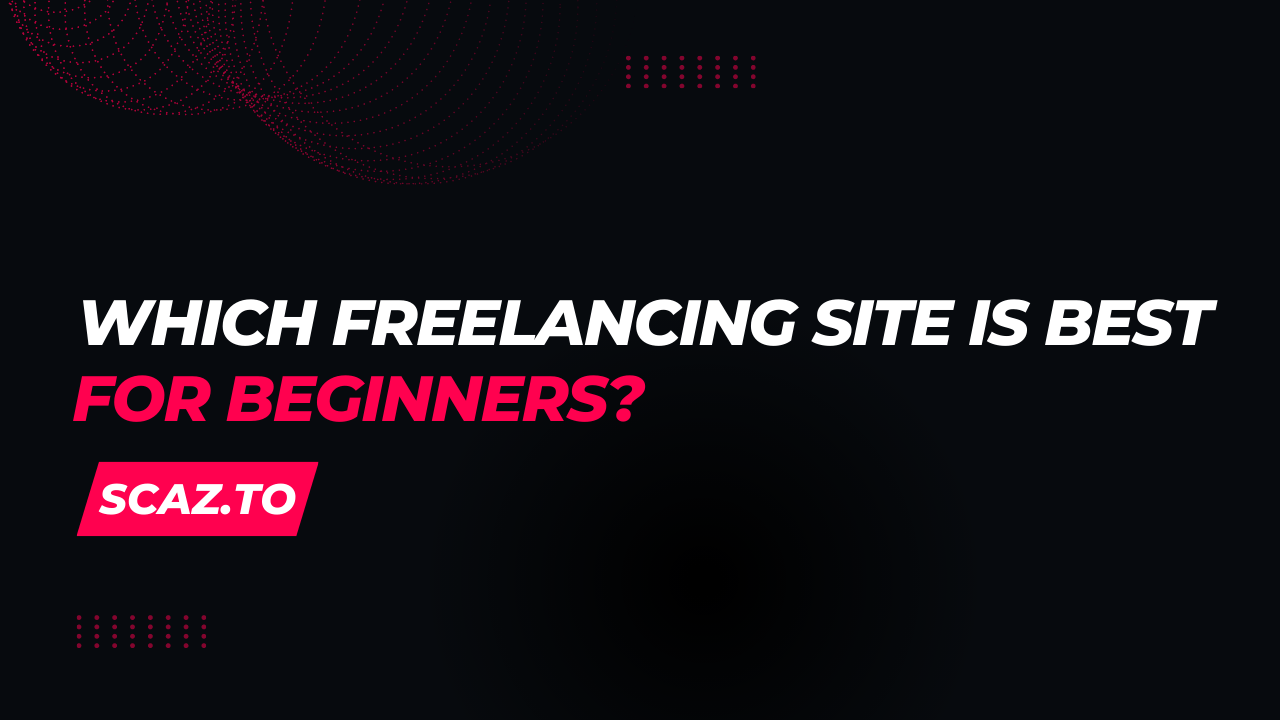
Which Freelancing Site Is Best For Beginners? + Tips
Starting freelance is like starting a business.
The first thing you need to do is develop your skills and build your portfolio. Then you have to find out what type of services you’ll be offering.
But finding the “right” market to sell your services is the key to getting more work and attracting clients.
Finding the ‘right market’, or in this case, the right freelancing website, to sell your services on from day one is important for a successful freelancing career.
I often advise against using freelance marketplaces. However, I believe it’s the perfect way for a beginner to start freelancing.
Using freelance sites to sell services and find work has both advantages and disadvantages. But as long as you find the best freelance site that fits what you want to work on, it will make your life so much easier. It’s also how I started my freelance career.
In this post, I will help you find the right platform to offer your services if you are a beginner freelancer. Let’s get started.
Freelance Marketplaces vs Job Boards

Before you continue, it’s important to understand the difference between freelance marketplaces and freelance job boards.
Freelance marketplaces are platforms that connect clients and freelancers. Examples of popular freelance marketplaces include sites like UpWork, Freelancer.com, and PeoplePerHour.
On these sites, you can create a profile and apply for jobs that are posted by clients. All of your negotiations with clients and payment processes are handled through the platform. You are not allowed to contact clients outside of the platforms.
In exchange for this service, the freelance platform charges a platform fee. For example, UpWork charges a platform fee of 20%. So when you complete a job and receive your payment from the client, UpWork takes a 20% cut.
On freelance job boards, however, you are free to contact clients via email and receive payments directly into your PayPal or bank account. Job boards are like the classifieds section of the newspaper. And these sites don’t charge freelancers a platform fee.
Ideally, freelance job boards are the best way to find work. But as a beginner, you won’t have much luck finding work on these sites. This is because the clients who post jobs on job boards are only looking for experienced freelancers.
Therefore, the use of a freelance platform is the most suitable approach for a beginner’s start.
Why You Should Use A Freelance Platform
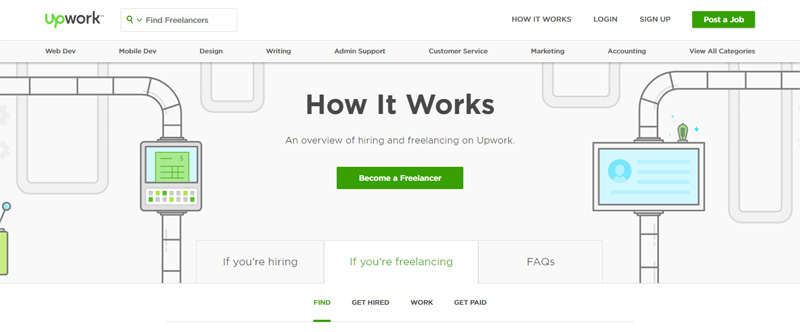
If you ask any established freelancer, they’re all going to give you the same answer. Almost all of the established freelancers do not use freelance websites. And they will tell you to avoid them as well.
It’s true, freelance platforms like UpWork, Freelancer.com, and PeoplePerHour can be toxic, and it’s never a good idea to rely on them.
It’s easier for a freelancer with a steady stream of clients to tell you to avoid freelance sites because they already have plenty of clients and don’t need to look on freelance sites.
But this is not the case for a freelancer who’s just starting out. New freelancers have to fight to find work and clients. In such a situation, a freelance site can be a great place to not only find work, but also gain freelance experience.
On freelance sites, for example, you’ll learn how to write great proposals to convince clients that you’re the best at what you do. And you’ll work harder to deliver high-quality results so you can get better reviews from your clients. It will be the start of a successful career path.
Should You Sign Up For Multiple Sites?

One of the biggest mistakes that most beginning freelancers make is to join every freelance site that they can find and create profiles all over the place in order to increase their chances of getting a job.
It makes sense, right? The more platforms you use, the more jobs you will be able to apply for, right? Wrong! You are setting yourself up for failure with this mindset.
Think about it. Freelance sites like UpWork use intelligent algorithms to rank the freelancers on their site. Highly ranked freelancers are the ones who respond to their clients immediately. They also have better client reviews because they deliver high-quality results.
You need to build your reputation on the platform and create a complete freelancer profile with great client reviews to increase your chances of landing work. Can you do this on 10 different freelancing sites? No, you can’t.
What you should do is pick 1 or 2 of the best platforms and decide to build your profile on that one. This will help you focus. Rather than copy-pasting the same message to different sites, write great job proposals. And choose better jobs that help you grow and develop.
In fact, you could get your account banned forever if you recklessly try to apply to every job you can find or even try to use bots to automatically submit applications.
The Pros & Cons Of Using Freelance Sites
Unfortunately, freelance sites are businesses that have been built by companies and corporations. They provide a valuable service by connecting clients with freelancers. But their main goal is to make more money. Which isn’t always good for freelancers or clients.
Benefits Of Using Freelance Sites
- You’ll be able to find work more easily
- You’ll have a platform to build your reputation
- You’ll learn how to do great work and deliver projects on time
- You’ll learn to communicate well with clients
- You’ll get paid easily (most of the time)
Downsides To Using Freelance Sites
- You’ll pay expensive fees for the platform
- You’ll have to compete with other freelancers
- Some clients will scam you or make you do more work
- You’ll run the risk of getting your account banned
How To Find The Best Freelance Site For You
So, how do you find the best site for freelance work while avoiding highly competitive sites and scams? Well, there are several ways to tell the difference between good and bad sites. Here’s how.
Check The Pricing Model
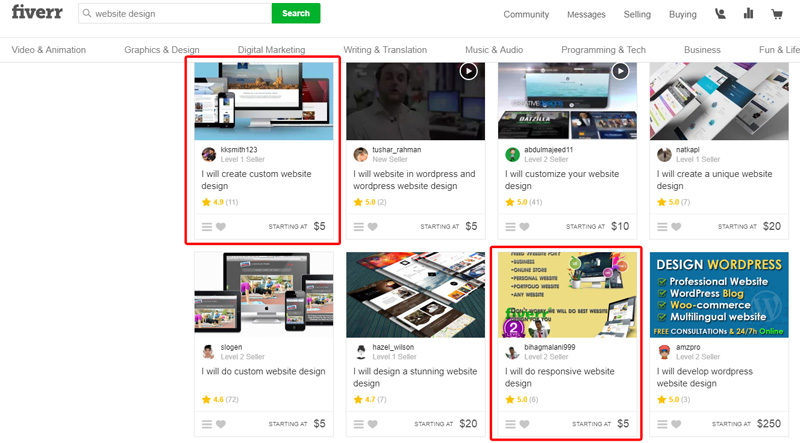
If a freelance site uses a fixed pricing model, it’s probably a place you want to avoid. For example, sites like Fiverr force you to put a price tag on the services you are offering. The site has already decided the price for you. You want a logo designed? It’s $5! Want a website built? It’s $5! This is not only unfair. It demeans your skills. Don’t use such sites.
How Many Freelancers Are There?
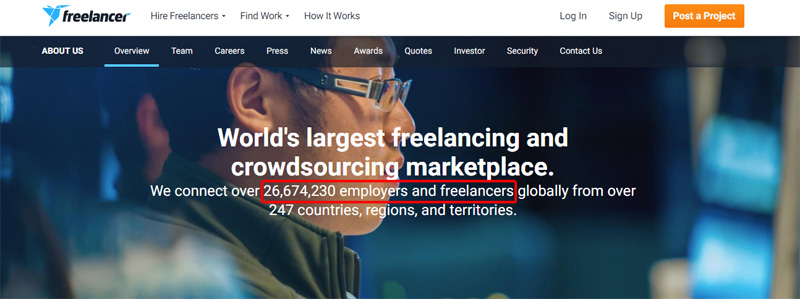
The more popular a platform is, the more difficult it will be for you to find work. Finding a freelance site with little competition is the best way to avoid getting into bidding wars with other freelancers. Find a relatively new site with a low number of registered freelancers.
How Much Does It Cost?
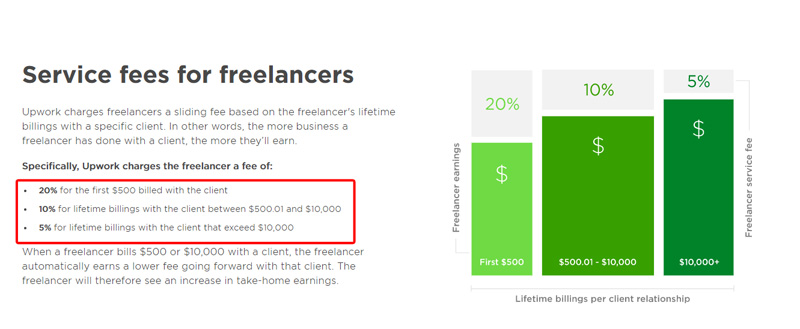
Keep in mind that freelance sites charge you a platform fee for allowing you to use the site to list your services. UpWork takes up to 20% of each of your jobs. For example, if you complete a $500 job, you’ll only receive $400 after the platform takes its 20% cut. Check the platform’s Terms of Service pages to learn more about platform fees.
Is It The Right Platform For You?

Do a quick search on the freelance site to see if they have enough jobs related to what you want to work on. Try finding a site that focuses on a specific industry. For example, Toptal is a site that’s dedicated to freelance software developers. Try to find a similar site that is focused on a niche.
Which Freelance Site Is Best for Beginners?
When it comes to freelance sites, you can’t point to one site as “the best” for finding work. It all depends on the type of skills you have and the services you offer. Some sites are best for writers, some are better for programmers, and some are great for designers.
Whichever platform you end up choosing, it’s always best to avoid the most popular ones like UpWork, Fiverr, and Freelance.com. These are the most competitive sites, full of freelancers who engage in bidding wars to get work done for the lowest price.
Instead, try to find a site that’s relatively new and has little competition. You’ll find fewer freelancers and clients on these sites, but you’ll have a better chance of getting work.
Here are some of the sites that are ideal for beginning freelancers.
Tips For Getting Your Profile Approved

As long as you avoid the most popular sites and the platforms with the most users, you shouldn’t have any trouble signing up.
Huge sites such as UpWork are getting way too many sign-ups on a daily basis. You won’t have any problems if you avoid these sites altogether.
However, by following these tips, you can improve your chances of getting accepted and getting more clients.
- Choose a smaller niche as your job category (for example, instead of using “graphic designer” as your category, choose a niche such as “infographic designer”).
- Create an attractive bio and profile.
- Use a real photo of yourself as your profile picture.
- Provide evidence of your work (fill out the portfolio section).
- Take skills tests if you can (even though it’s not necessary, it will improve your chances of approval)
Don’t Depend On Platforms

Freelance sites are great for getting your feet wet as a freelancer and learning more about how things work when you’re working online. However, you shouldn’t always rely on these platforms to find work.
These platforms are constantly changing their rules and pricing schemes. And you’ll never know if or when your account will be banned for some ridiculous reason. Not to mention the fact that there will always be another freelancer who is in competition with you.
So, once you’ve learned the basics and are comfortable with the way the freelance world works, slowly find alternative methods of finding work and eventually leave freelance platforms altogether.
Then you will never have to pay to use a platform or get involved in bidding wars. You will have access to job boards for work, and you will have access to high-quality clients who have high regard for your skills and hard work.
I left freelancing sites a long time ago and it was the best decision I’ve ever made. However, I’m still grateful for those sites that allowed me to establish myself as a freelancer in the first place.
How To Work Remotely From Home: 10+ Tips & Tools
Working on your laptop while lying on your bed sounds like a dream job. Doesn’t it? Well, sure, it sounds
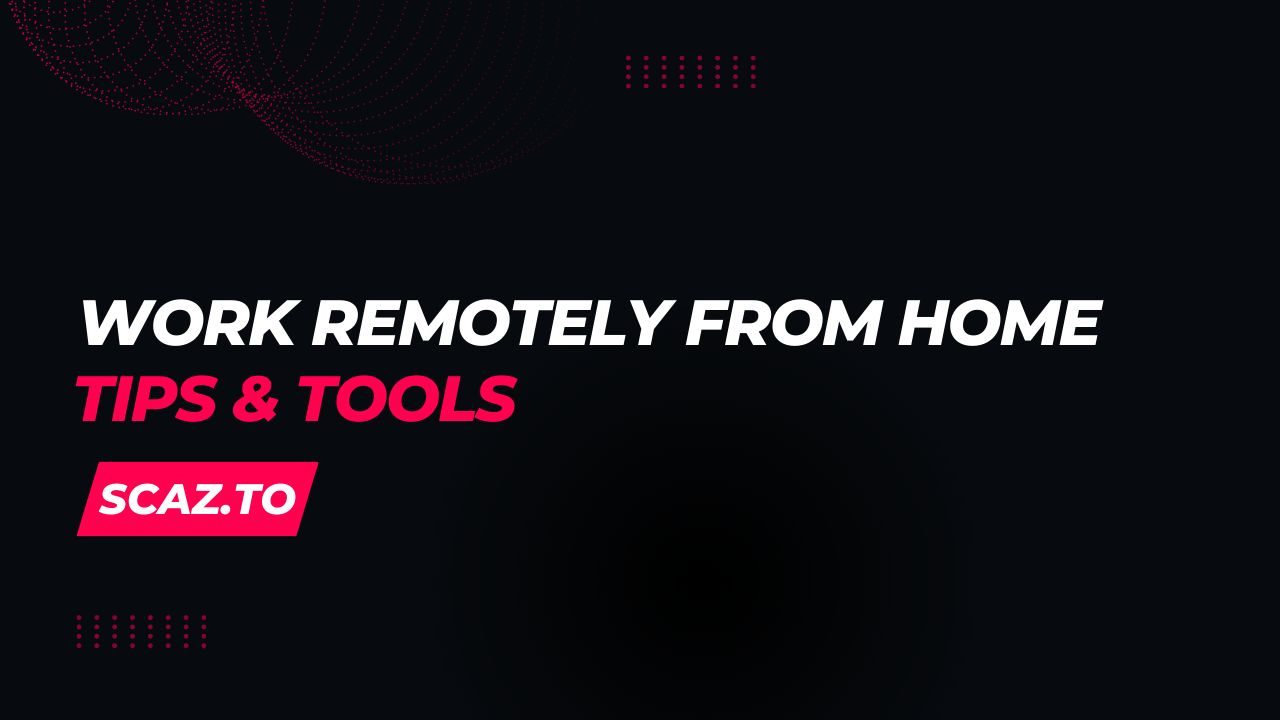
How To Work Remotely From Home: 10+ Tips & Tools
Working on your laptop while lying on your bed sounds like a dream job. Doesn’t it?
Well, sure, it sounds like it, but in reality, working remotely from home is nothing like that.
It’s actually challenging. Especially for people who suddenly find themselves working from home due to a global epidemic such as the outbreak of the Coronavirus.
Whether you’re just starting out as a remote worker, thinking about freelancing or even forced to work from home, you’ll find many useful tips and hacks for surviving remote work in this guide.
I’ve worked in regular office jobs. And for more than seven years, I’ve worked from home as a full-time freelance writer. I think I’m qualified to offer some advice because I’ve been in both worlds.
How To Ask To Work Remotely

Many big brand companies like Apple, Microsoft, Twitter, and Facebook have asked their employees to work from home because of the risk of coronavirus.
But you don’t have to wait for an epidemic to do remote work. In fact, you can ask your boss to let you work from home at any time. While this may not work for some jobs and companies, in most cases, it won’t be hard to convince your boss to let you work from home. And for employees at startups, it’s especially easy.
Demonstrating your value to your boss is the key. Be exceptional at what you do. And you need to make it clear to your boss that you can’t be replaced. Then mention your plans to work remotely.
When you’re negotiating a deal with your boss, instead of making it about you, make sure you give him or her a list of reasons why it will be profitable and better for them.
You can get an idea from the following list of benefits.
Benefits Of Working Remotely

Aside from unannounced visits from family and friends, screaming children, household chores, and procrastination, there are actually many benefits to working from home.
- Increase work performance: People who work from home are 13% more productive, studies show. That’s because you’re not distracted by annoying coworkers or constant coffee breaks.
- Working more hours: Imagine saving dozens of hours each week that you’d otherwise spend sitting in traffic getting to and from work. And use that free time to take on a part-time freelance gig to make some extra cash on the side.
- Be more creative: Creative people come up with better ideas when they’re off the grid and in a peaceful environment. As Ryan Holiday says in his book Stillness Is The Key. At home, you’ll have more freedom for clear thinking and new ideas.
- Save money: You’ll be able to save a lot of money that would otherwise be spent on gas for the car, bus/train fares, expensive lunches/dinners and coffees, and buying gifts for weird co-workers you never knew existed.
- Spend time with your family: If you have a family, remote work can be a way for you to spend more time with them as well.
Tips For Working Remotely

Here are some tips on how to survive now that you’re totally sold on the great benefits of remote work.
Get Into A Routine
The most effective way to survive working from home and staying productive all day, every day, is to get into a routine.
You must find an appropriate place to work. Your bed or couch shouldn’t be the place for work. Put a table for your laptop somewhere quiet.
Then get up early. Get dressed, make your coffee, and sit down at your desk on time. And get to work.
Now, I know you’re probably thinking that sounds like going to a regular job. Well, even though you work remotely, it’s still a job. And if you want to keep your job, you need to act like a professional.
Sticking to routines will help you get things done at home properly. You’re still going to have a lot of housework to do, cooking to do, children/pets to care for, and other things to get done.
If you don’t have routines, you’ll never find time to work.
Create Checklists For Daily Tasks
Whether you’re married or living on your own, you probably have a lot of things to do around the house in addition to your regular work.
Use checklists to make it easier to manage all those tasks.
I usually make a checklist the day before of everything that I want to do on a particular day. So, for example, at night I write down all the tasks that I’m supposed to do the next day. When they’re done, I check them off one by one.
Don’t use a note-taking app to do that. Get a little notepad and draw check boxes and write down the tasks by hand. Writing with pen and paper is more effective.
Find Your Most Productive Time
I used to hate getting up early to work. Then I discovered that I’m actually a night owl. I do my best work at night. I’m most creative around midnight. Actually, I’m writing this at night.
Are you a morning person or a night person? Do you hate mornings or get tired early? Figuring out the right time to work is up to you.
By the way, work is going to be a challenge if you have a family and kids screaming in your face all the time.
Now you have to make a decision. You can either wake up super early and get some work done before the kids wake up. Or you can wait until they go to sleep and then go to work.
Have A Background Music Playlist
Putting on headphones and playing some music is a great way to get rid of the background noise. I’m so used to it now that I can’t work for too long without some kind of music playing.
I usually play music with no vocals in it. Hearing them is distracting. So I have a huge playlist of upbeat and retro synth-wave music that I jam to at work. You can find those tracks on YouTube.
But feel free to find whatever works.
Use A Custom Pomodoro Timer
A fairly popular way to work more productively is the Pomodoro technique. It simply forces you to work for 25 minutes straight and be rewarded with a five-minute break.
This has never worked very well for me because when I’m in my creative mode, I tend to work straight through for at least an hour. When I stop, I usually lose the creative energy.
I also use an extension for Chrome called Marinara. It lets you set repeatable timers. It helps you stay focused.
Best Tools For Remote Workers

There are a lot of different tools out there, both paid and free, that you can use to your advantage to make working remotely easier. These are just a few of my favorite tools that I use on a daily basis. By the way, all of these tools have free versions.
1. Bonsai
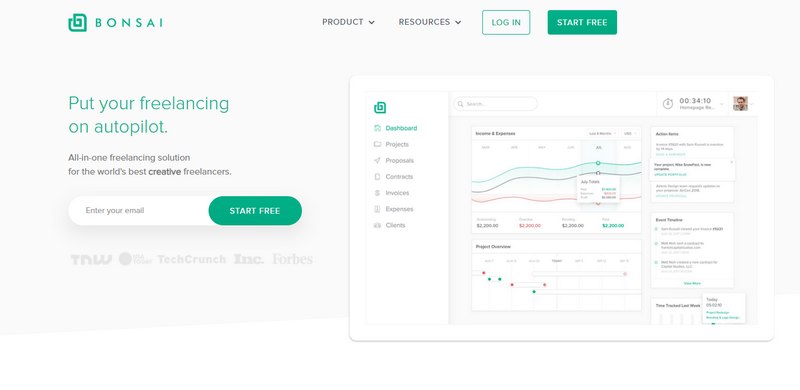
- Best For: Invoices, time tracking, proposals, and more
Bonsai is an all-in-one platform that comes bundled with all the kinds of tools that you need in one place. You can use it for invoicing, time tracking, project proposal creation, expense tracking, and more.
Instead of having to sign up for multiple sites and apps, Bonsai helps you manage all your work in one place.
2. Trello
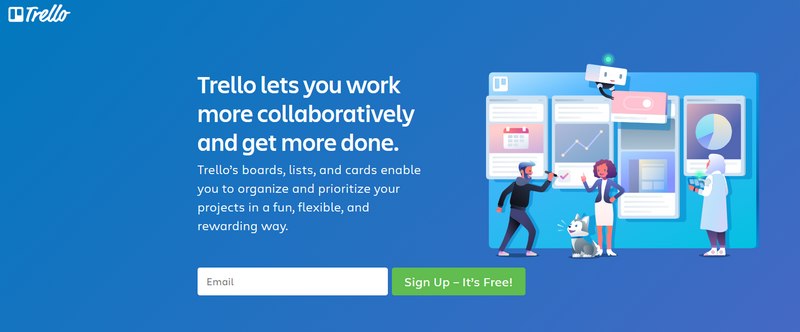
- Best For: Managing multiple projects
Trello is a great way to keep track of your projects. It has a very simple interface. You can keep track of multiple projects at the same time. Trello works like a visual to-do list. You can create tasks and even assign them to other members of your team to complete. And you can complete the tasks as you progress through the projects.
3. Slack
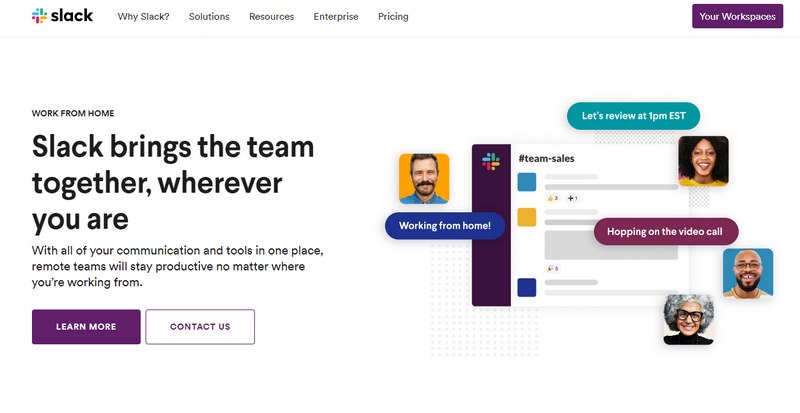
- Best For: Quick communications (email alternative)
You’ll have a lot of quick conversations with your team and your boss. It won’t work to send an email every time you want to ask a question. Try Slack instead.
Slack is a lot like email, but with a better user interface and a simpler instant messaging system. Using Slack, you can keep track of what you’re saying and have private conversations with multiple people without getting lost in big email threads.
4. Google Hangouts

- Best For: Videoconferencing
If you work remotely for a company, you’ll be making video calls all the time. Forget about Skype. It’s out of date. Instead, use Google Hangouts.
You can do both video conferencing and video calling with Google Hangouts. It’s free. And there’s no software to install. It works right in the browser. And because it’s hosted by Google, anyone with a Gmail account can use it. There’s no need to create separate accounts.
5. Google Drive
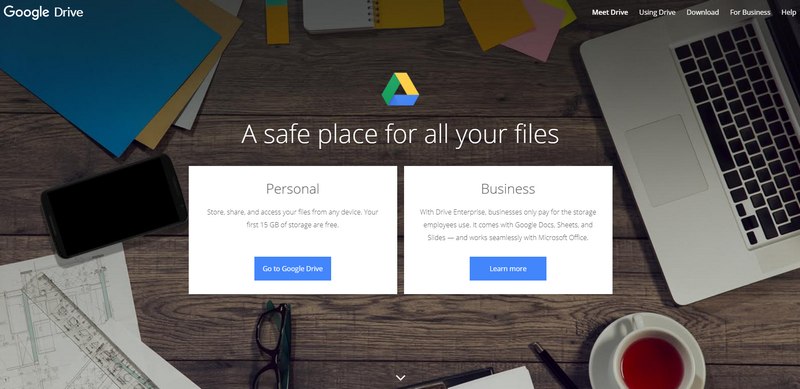
- Best For: Store and share files
Email clients only allow you to attach files up to 25MB. Use a cloud storage service if you want to share large files or even keep your important work documents in a safe place.
Google Drive is my first choice because it allows me to easily access my Google Docs and Sheets files and store them in the drive. It also offers 15GB of free storage. For file sharing, you can also use Dropbox or Box.
6. LastPass
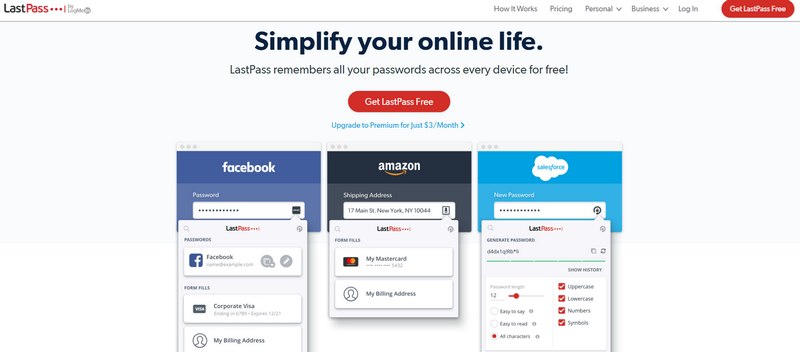
- Best For: Managing passwords in one place
With accounts registered on so many websites, it can be hard to remember the passwords for every site and application you use. Use LastPass to store all your passwords. Access your site accounts with one click.
LastPass uses military-grade encryption. So your passwords are safe. It also saves you the hassle of remembering passwords.
In Conclusion
All the changes that come with remote work can be a challenge at first. But you’ll get used to it in no time if you stick with it. And it will all become a way of life.
Of course, working remotely may not be right for everyone. If you’re an extrovert who loves hanging out with your colleagues and going out all the time, working from home will be harder. In that case, you should stick with a regular office job. If you’re forced to work from home, try to team up with a co-worker.
It’s about finding your happiness while being more productive.
How Much Should I Charge? 5 Ways To Calculate Your Freelance Rates
Figuring out the right price to charge your clients is one of the first challenges you will face as a
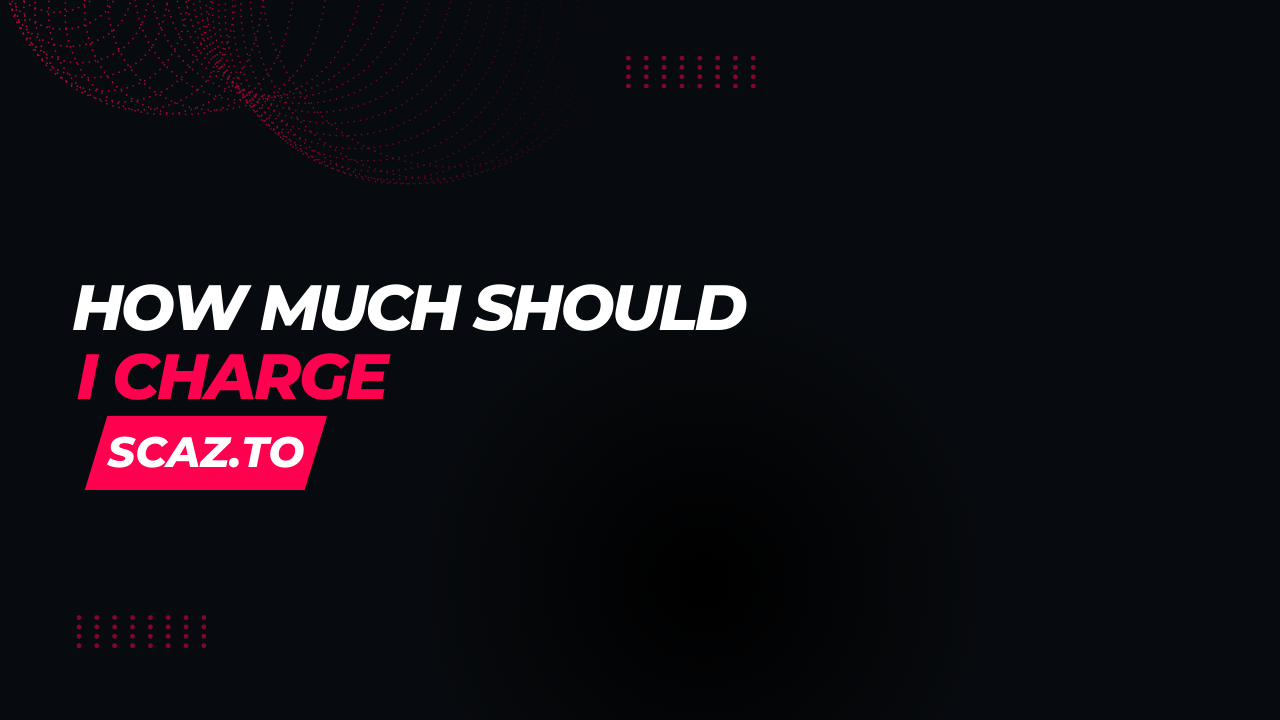
How Much Should I Charge? 5 Ways To Calculate Your Freelance Rates
Figuring out the right price to charge your clients is one of the first challenges you will face as a new freelancer.
How you calculate your freelance rates is important because your price has to be just right to win your clients.
If you charge too much, the client may never respond to your offer. If you charge too little, the client will be suspicious and think of you as a cheap, amateur freelancer.
But there’s no need to worry. Whether you’re a beginning freelance writer, designer, developer, or marketer, there are a few tricks you can use to figure out the ideal price for your freelance services. And I’ll show you how.
Hourly Vs. Fixed Rates
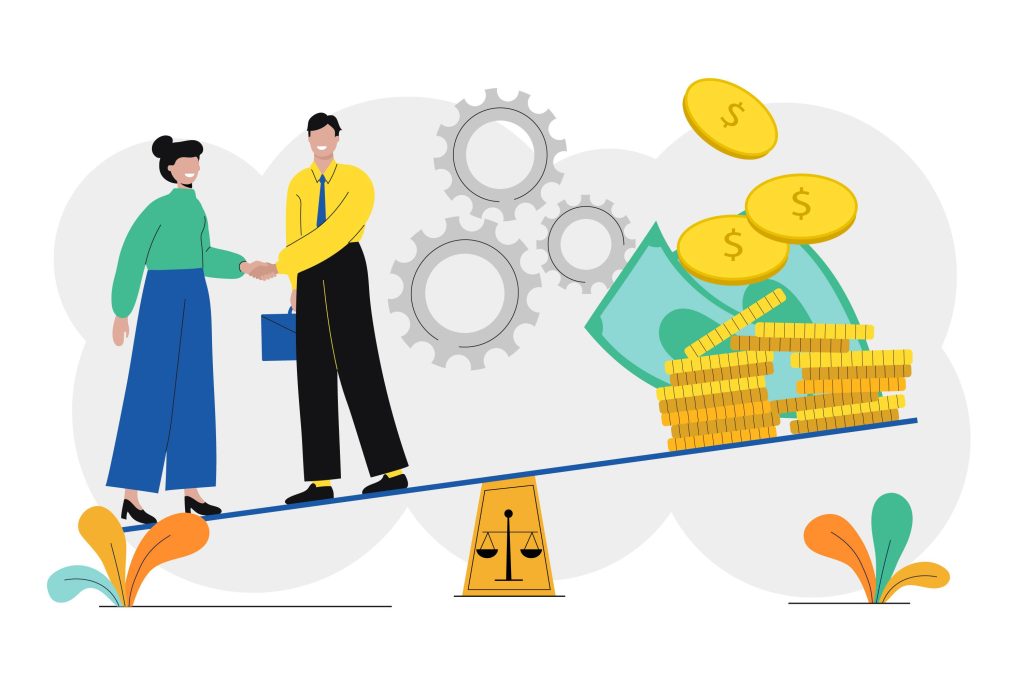
The big question: Should you charge an hourly rate or offer a fixed price for each project? This is a dilemma for most freelancers, as both methods have their pros and cons.
Personally, I’ve found fixed rates to be more beneficial for me and, more importantly, for my clients. Pricing per project allows me to offer the client a price based on the complexity of the gig and the amount of work it requires.
Hourly pricing also has its advantages. For example, there are experienced freelance copywriters who charge over $250 per hour. This is because when working on projects such as website copywriting and product copywriting, you can’t price by word count because the copy needs to be refined and tested over and over again.
So before you start, decide whether you want to charge an hourly rate or a fixed price. Depending on the type of service you provide, this is fairly easy to figure out. If you’re a freelance coder, designer or copywriter, an hourly rate should be the obvious choice.
However, choosing a fixed price gives you more freedom to spread out your hours working on different projects and deliver the best results by spending more time working on each project without having to worry about the hourly rate. That’s the main reason I encourage beginners to choose a fixed price.
A Few Things To Keep In Mind

Once you’ve decided how you’re going to price your services, there are a few options that freelancers often face. Including negotiation.
Clients will almost always try to negotiate a better price. You’ll need to leave a little wiggle room in your rate for such cases. Never say NO to lowering your price by a small amount. Add an extra $5 or $10 to your price so that if the customer asks for a discount, you can accommodate their request without being a jerk.
However, always stick to your original price. If a client seems to be backing out of a deal, don’t offer a lower price just to get the job. Chances are you’ll miss out on a better and bigger gig by accepting this low-paying job.
Some clients will also try to get you to do more work than you agreed to do. These types of clients are called scope creeps. They’ll agree to your price at the beginning, and then later ask you to do extra work or extra revisions for free.
Always discuss a price for the extra work and revisions before you start the project. And keep a freelance contract handy to mitigate these situations.
When pricing your services, remember to include your taxes and professional expenses, such as website hosting and any paid application subscriptions you use, in the total.
Here are a few ways to figure out the perfect price for your services.
1. Create Your Own Pricing Plan
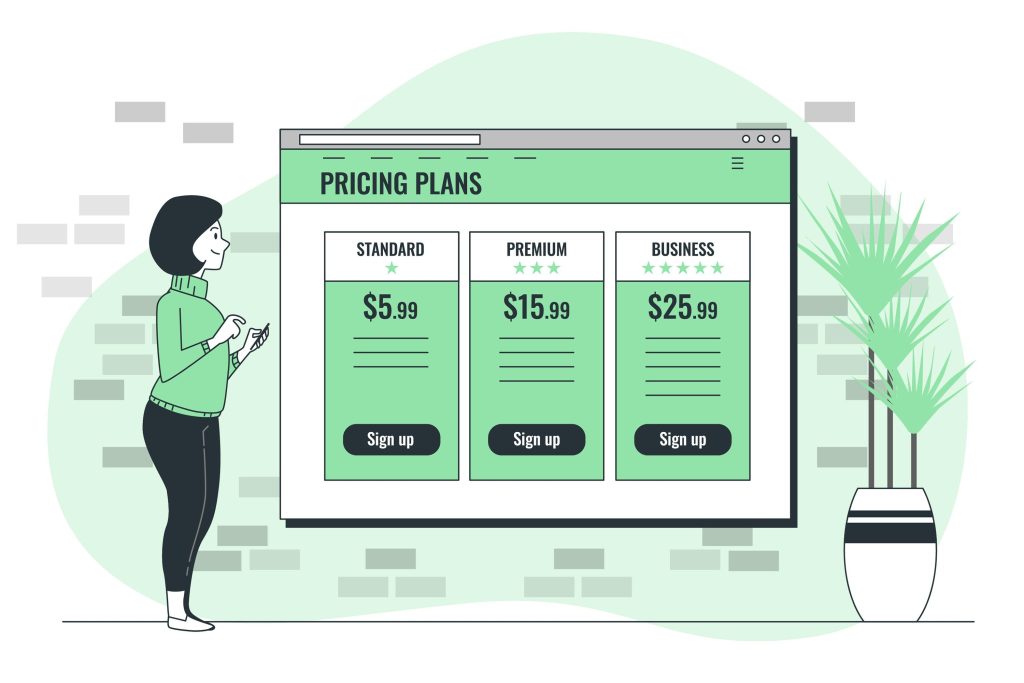
No matter how you price your services, how much you earn will always depend on how much time you have to work and how much work you can get done each day.
So the first and most logical way to price your services is to create a budget for your expenses and figure out how much you need to charge each month to reach your budget goal.
For example, let’s say you need $2,000 to cover all your expenses each month. If you work 8 hours a day, 5 days a week, you’ll have 40 hours a week and a total of 160 hours a month to earn your budget amount.
First, multiply your budget cost by 3. This is to help you make a profit and to ensure that you don’t have to work the full 160 hours to meet your budget. And then divide that total by 160 (your total monthly hours). ($6,000 / 160 = $38)
The ideal price for your hourly rate is $38. This method gives you the freedom to work on the projects of your choice and leaves you plenty of room to negotiate.
2. Browse Freelance Websites
Another way to find the best price for your service is to find out what other freelancers are charging on freelance platforms.
Go to a popular freelance platform like UpWork or PeoplePerHour and explore the categories on those sites to see what other freelancers are charging for their services.

You’ll find that all freelancers charge different rates. A good way to figure out a price for your service is to go to your industry category on the freelance site and find the two freelancers who charge the least and the one who charges the most in that category.
Take a closer look at their profiles to see what kind of skills and experience they have. Then, depending on your work experience, try to find a price in between the rates of these two freelancers.
Keep in mind that this method is only suitable for beginners. Freelancers on popular platforms often charge much lower prices than they deserve. So use these prices as a starting point and work your way up.
3. Explore Salary Estimate Websites

Another easy way to figure out your rates is to explore salary estimation websites.
Sites like Glassdoor and Payscale are great for researching average salaries and hourly rates in different industries.
These sites contain data collected from thousands of other professionals and freelancers. As a result, these are fairly accurate rates that people are currently charging.
Just enter your job and location to see the rates.
4. Use An Online Tool

You can also use online tools to find out what others are charging. This will help you get an idea of what the experts are charging so you can figure out a competitive price to offer your clients as a beginner.
There are several online tools you can use to find freelance rates.
Glassdoor has the most advanced tool that calculates freelance rates based on location and feedback from real freelancers.
Bonsai also has a great freelance rate calculator that shows you a wide range of freelance graphic designer rates and web designer hourly rates based on skill, location, and the amount of experience you have.
LinkedIn Salaries is another tool that allows you to compare job salaries from different regions and countries around the world. Unfortunately, it’s not yet available in some countries.
If you’re a software developer, you can use reports like Triplebyte’s to find your ideal rate.
5. Ask A Professional
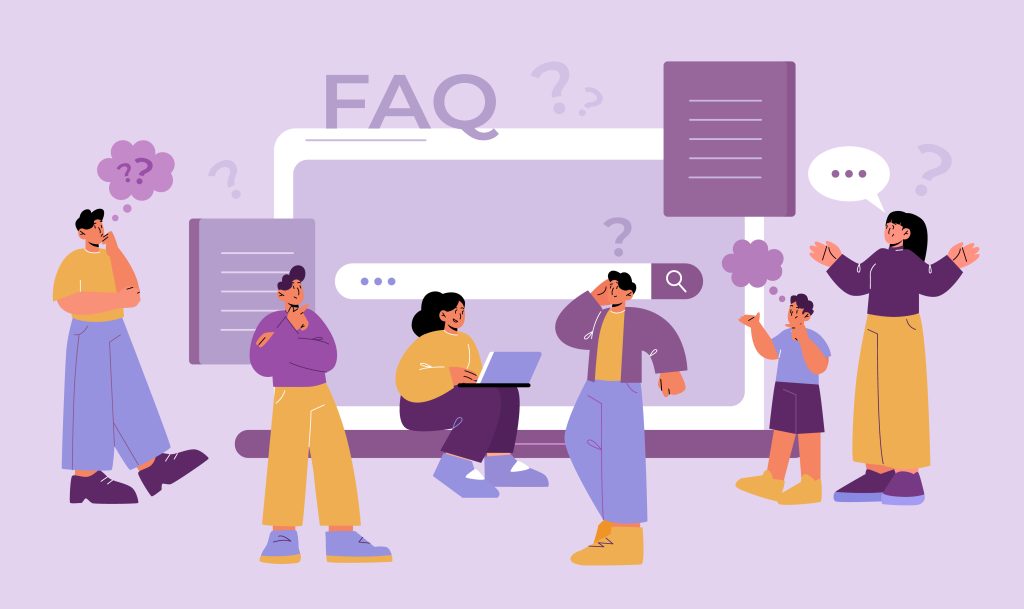
f you still can’t figure out a way to find the ideal price for your services, the best thing you can do is ask a professional.
Now, this is not going to be easy. That’s because most experienced and seasoned freelancers won’t reveal their prices to other freelancers. Obviously for competitive reasons. So you can’t ask them directly about their prices.
You’ll have to take an unorthodox approach. Pretend to be a client and ask for a quote.
For example, let’s say a client offers you a web design project, but you don’t know how much to charge. Well, now you can email an established freelancer as a client and ask for a quote on the same project.
An even better way is to post a job as a client on a freelance platform. You’ll learn a lot about how others price their services and write proposals.
It’s sneaky, I know. But it works! But not all freelancers are jerks. Some are willing to help others. So don’t be afraid to ask.
6. Let The Client Decide

This method is a bit unorthodox and may not work with most clients. But if you come across a decent client who has experience in this area, give it a try.
When you approach a client with a proposal, or even if a client approaches you, don’t mention your price in the first pitch.
Continue to discuss the project and ask questions to understand what the client is hoping to get out of the project.
For example, if you’re discussing a graphic design project for a social media campaign, you might ask the client how much buzz they hope to generate with the posts. Or ask about their budget and how much they’re spending on advertising.
And when it comes to negotiating the price, simply ask the client how much it’s worth to them given the amount of buzz they’ll generate from the campaign.
Simply put, let the client set the price for each project.
It’s difficult to have this conversation with a client on a freelance marketplace. So try it only with clients you approach through job boards or email.
Experiment With Your Rates
The important thing to keep in mind is that there is no right price for finding a rate for your services because it all comes down to the skills, experience, and the quality of work you offer. This is why most veteran freelancers have a habit of increasing or changing their prices every year because they consistently improve their knowledge and skills.
Use these tips to figure out a basic pricing model for your freelance services. Once you start gaining more experience and better clients, experiment with different prices. Eventually, you’ll be able to ask for higher rates and even double your rates.
As long as you’re happy with what you’re earning for the amount of work you do, there will never be a wrong price.
The Complete Guide to Becoming a Freelance Writer
If you’re new to freelance writing or want to get started, follow this guide and you’ll be able to avoid
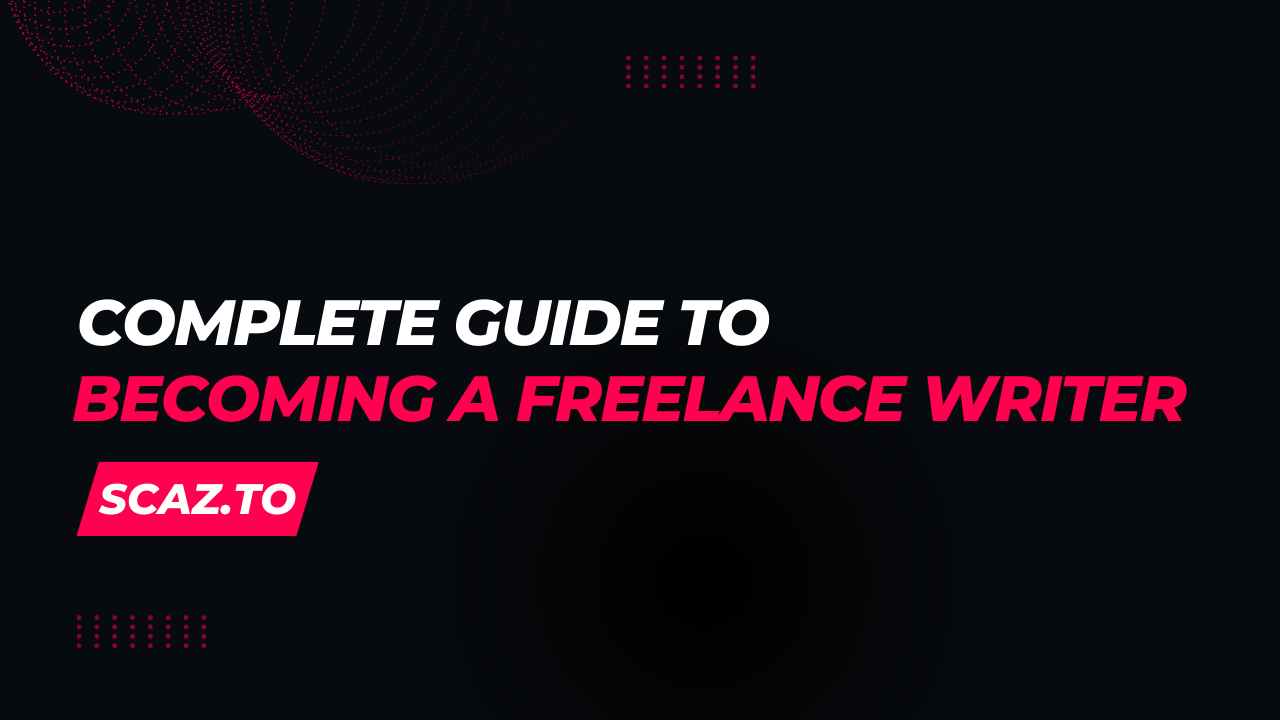
The Complete Guide to Becoming a Freelance Writer
If you’re new to freelance writing or want to get started, follow this guide and you’ll be able to avoid many of the mistakes I’ve made over the years.
It took me 7 years of mistakes, failures, and depressing moments to rise from $0 to $5,000 per month as a freelance writer. And I know there are still a lot of writers out there trying to make a few bucks online.
This post is dedicated to you. My no-nonsense guide to what I believe to be the best approach to starting out as a freelance writer the right way.
Step 1: Do You Have What It Takes To Be A Freelance Writer?
Most so-called “experts” and “gurus” make freelancing sound easy and mislead people into believing it is a quick fix for financial problems. A way for you to make some quick money to pay off your bills or to supplement your income while on vacation.
I’m sorry to tell you that if you’re only looking for a quick fix, you’re not going to make it as a freelance writer. Don’t start freelancing for the wrong reasons because you’ll have to put in a lot of effort to make money as a freelancer.
And be prepared to put in a few weeks of hard work with no pay. Because it will not be easy.
To be a successful freelance writer, you must also be passionate about writing. It is not something you are born with, but rather something you learn over time.
For example, if you get bored easily when reading books and long articles, writing may not be the right path for you.
So, before you begin, take a moment to reflect and ask yourself: Do I want to be a freelance writer or am I just looking for a quick fix to my financial problems?
Further Reading:
Step 2: Different Types Of Writing Gigs You Should Know About
Freelance writing is a diverse industry with numerous subcategories. Before you begin, you should be aware of the various types of freelance writing and select the one that best suits you.
Here are a few kinds of freelance writing:
- Copywriting: Copywriting work typically entails writing promotional content for brands, product descriptions, articles for blogs and magazines, and everything in between.
- Article Writing: Writing articles for online publications and blogs is not the same as writing college essays.
- Blog Writing: Writing for blogs entails learning a bit about blogging as well. This includes learning how to use WordPress, SEO, and more.
- eBook Writing: Writing eBooks varies by industry. To be a successful eBook writer, you must first learn about the various types of eBooks.
- Website Content Writing: This primarily entails creating content for website pages such as home pages, product pages, about pages, and so on.
- Ghostwriting: Creating content for others to publish under their own names. This type of work will not be recognized. However, you can charge more for these types of jobs.
- Fiction Writing: This could be the right path for you if you have a creative mind. However, finding freelance fiction writing jobs is difficult.
- Resume and Cover Letter Writing: Another low-demand type of writing.
- Technical Writing: This is the type of writing found on product manuals, agreement terms, and privacy policy pages.
Further Reading:
Step 3: Find Your Niche, But Keep Your Options Open
You can’t call yourself a freelance writer unless you can work in all (or at least the majority) of the categories listed above. Don’t try to be a master of all trades. Rather, be specific about your skills. Narrow it down to a specific niche.
If you’re good at writing eBooks, for example, call yourself a freelance eBook writer. If you’re good at writing essays, you should consider yourself a freelance essay writer.
Narrowing your skills to a specific niche will allow you to gain experience and land jobs more easily. But don’t limit yourself to a specific field. Maintain your options.
For example, the majority of my work entails working with business blogs and writing blog articles to assist in the development of various types of blogs. But I also write eBooks, newsletters, and copywriting whenever I can or feel the need for a change of pace.
Because there will be times when you desperately need the money. During those times, you should be prepared to do any type of writing work.
Further Reading:
Step 4: Learn To Write Like A Pro
For the first three months of developing my first blog, I wrote 15 to 20 articles per day, working nearly 20 hours per day. I pushed myself to the limit. Then I slowed down to writing around 6 to 10 articles per day. This went on for more than four years.
Most of the time, these were short articles of 300 to 500 words. But it was difficult for me at first. My second language is English. I was terrible at it. And I had to learn everything from scratch in order to write for online audiences.
For the first few months, my writing was abysmal. I received a lot of negative feedback and bullying from readers. pointing out my grammatical errors and cracking jokes
But I persisted and continued to write more and more articles. That is the main reason I am where I am today.
Unknowingly, my blog assisted me in practicing the art of writing for online audiences. While I still have a lot to learn about writing, my skills have improved significantly to the point where I can write as well as native English speakers.
What I’m trying to say is that you should practice. Keep practicing regardless of what you believe about your abilities or what others say about your work. You may make errors, but keep writing. You’ll learn as you go.
Malcolm Gladwell states in his book Outliers that it takes 10,000 hours of practice to master a skill. He points out that some of the most famous artists and inventors, such as Bill Gates and Mozart, practiced the same amount to master their skills.
It is not too late to begin practicing.
Step 5: Begin Establishing Your Reputation and Experience
Another advantage of creating my blog was that it served as my portfolio. When a client asked for examples of my work, I simply sent them a link to my blog. It has a significant impact on my success rate.
To begin working as a freelance writer, you no longer need to have your own self-hosted blog. There are other approaches to establishing your reputation.
“If you want to be a writer, you must do two things above all others: read a lot and write a lot.” – Stephen King
The first and most effective strategy is to get published on other well-known blogs. LifeHack, ProBlogger, and Mashable are just a few of the many great blogs that accept guest posts from people other than their writing staff.
Having a few of your articles published on these blogs will help you persuade your clients that you are a skilled writer rather than just claiming to be one.
To get an article published on another blog, you must be an excellent writer. They only accept the best of the best.
So, if you’re just getting started, start with a personal blog on a free platform. Medium is my favorite writing platform. It’s free and increases the visibility of your articles.
Create a personal Medium blog and write about topics related to your niche industry. You can even use your Medium blog as your portfolio if your writing is good.
Additionally, become acquainted with the WordPress platform and learn how to use it. Find out more about Search Engine Optimization. Discover how to format eBooks.
These skills will give you an advantage when submitting proposals to new clients.
Step 6: Hourly Or Fixed Pricing?
The question of whether to charge hourly or per project is one that freelancers have debated for a long time.
It really depends on the nature of your work. Charging an hourly rate, for example, is more appropriate for a copywriter who primarily works on web page copy. A fixed-rate is also appropriate for a blogger who writes articles based on word count.
Pricing, on the other hand, is determined by how fast and skilled you are. For instance, I can write a 1,000-word article on a specific topic in about 30 minutes. If I charged an hourly rate, I would be underpaid for my work.
That is why I always use fixed prices. It’s fair and equal for both the freelancer and the client, and I don’t have to worry about keeping track of my working hours. One less thing to be concerned about.
Step 7: Choose A Platform To Offer Your Services
I’m sure there are experts who will advise you not to offer your services through freelancing platforms. However, I recommend that you use a platform or a job board to find work for the first few months.
We’ve all got to start somewhere, right? And what better place to learn about different types of freelance jobs and what other freelancers are up to than a freelancing platform?
However, you must exercise caution when selecting a platform through which to offer your services. Most beginners take the most obvious route and sign up for the most popular freelancing sites, such as UpWork or Freelancer.com.
You should avoid these platforms. On these sites, there is far too much competition, which will diminish your skills and force you to fall to the level of cheap freelancers who engage in bidding wars to win jobs.
Instead, concentrate on newer and smaller freelance websites and job boards. And I know what you’re thinking: newer and smaller websites don’t get as many clients as larger sites, so how does this help you win more work?
This is similar to identifying your niche. There are fewer freelancers competing for jobs on smaller websites. Furthermore, if you already know how to write killer proposals and have a great reputation, you will be able to land more work even if there are only a few jobs available on that platform.
Step 8: Best Places To Find Freelance Writing Jobs
So, I advised you to avoid popular freelancing platforms like UpWork and Freelancer.com. Also, avoid Fiverr.
But where can you look for work elsewhere?
Actually, there are numerous excellent websites, platforms, and job boards where you can advertise your services and find freelance writing gigs. These are my top recommendations.
- ProBlogger Job Board: A job board that is regularly updated with high-paying freelance writing gigs. Professional writers should use this.
- AngelList: Remote job vacancies posted by startups. High-paying but more difficult work.
- goLance: A fairly new freelancing site with low platform fees.
- RemoteOK: A mix of content and digital marketing jobs. The best option for content marketers.
- Inbound Jobs: Marketing and content writing jobs that are complex. Advanced writers and content marketers should use this platform.
Limit yourself to one job board or platform. Try not to mass-apply for jobs by copying and pasting your proposals. It will be a waste of time.
Further Reading:
Step 9: How To Write A Killer Proposal To Clients
I did a small case study a few months ago by posting a fake job on UpWork and Freelancer. Many freelancers applied, and I learned a lot from their mistakes.
Coming on strong early in their proposals was one of the most common mistakes they made. This makes them appear desperate. They frequently offered extremely low prices for getting the job done.
Professional freelancers would never write proposals in this manner. Here’s an example email template that will show you how it’s done:
Hello, [Client’s Name],
My name is [your name] and I’m a freelance copywriter.
I saw your job posting on [name of the website] and noticed that you are looking for a blog article writer for your company blog.
I’ve been a freelance writer online for [number of years] and have helped develop several great and successful blogs for my clients. Including [names of a few clients with whom you’ve worked].
I’ve also had several articles published on well-known authoritative websites like [mention and link to the websites]. Examine my writing style to see if it fits your blog’s strategy.
I understand that increasing social media shares is just as important as optimizing articles for search engines. And I use a variety of tools to ensure that I target both of those areas.
If you’d like, I can suggest some topics and ideas for great blog posts.
Please let me know if you are interested.
Thank you very much,
[Insert your email signature here]
Step 10: Advice From One Freelance Writer To Another
Even though this strategy worked for me, I cannot guarantee that it will work for you. But if I can do it, so can you!
Keep a few things in mind going forward. Don’t be too greedy if you truly want to succeed and become an exceptional writer. Don’t charge extra for minor extra work you do for your clients.
Be prepared to go the extra mile. Writing an extra 100 words or preparing images for the articles will help you stand out in a crowd of freelance writers.
Concentrate on producing high-quality work every time. Treat every job as if it were your first. Look for ways to satisfy your customers.
Finally, avoid being a jerk. Always be courteous to your clients and keep your cool. Learn to keep your cool when they are criticizing your work or requesting more revisions.
Further Reading:
Conclusion
As you can see, it will take some time to complete all of these steps and begin earning real money. But all of your efforts will be rewarded.
Create a personal portfolio website for yourself while working from freelance websites and job boards. This website will assist you in gradually transitioning away from relying on job boards and toward receiving offers directly from clients via email.
When a client inquires about the type of work I do or wants to see examples of my work, I send them a link to my personal website.
Continue to improve yourself and never stop learning. It will determine your success!
24 New Freelancing Sites With Low Competition
Don’t you hate it when the freelancing platform you’ve been using for years suddenly raises its platform fee to absurd

24 New Freelancing Sites With Low Competition
Don’t you hate it when the freelancing platform you’ve been using for years suddenly raises its platform fee to absurd levels?
This not only forces freelancers to raise our prices, but it also causes us to lose repeat clients who are frequently dissatisfied with sudden price increases.
UpWork now forces all of its users to go through the same experience by implementing a new platform fee scheme aimed at charging heavily from freelancers.
As soon as the news broke, most UpWork freelancers began looking for alternative platforms in order to avoid losing money or having to raise their prices.
If you’re a freelancer looking for a new platform to offer your services, or if you’re just getting started as a beginner, this list is for you.
As you are aware, joining a new freelancing platform can provide you with numerous benefits. So, take a look through the list below to see if you can find a suitable site to offer your services.
The following are some of the best new freelance sites that are slowly rising to become industry leaders. As an added bonus, I checked each of the sites listed here to determine their platform fees so you wouldn’t have to. You’re very welcome!
DailyRemote
DailyRemote is a job board that curates work-from-home jobs for freelancers. The website contains a regularly updated collection of remote jobs from various websites and platforms, which you can apply for free.
DailyRemote is best for finding jobs in software development, design, virtual assistance, data entry, content writing, and marketing.
Remote Tech Jobs
Remote Tech Jobs is a brand new job board for freelancers in the tech industry. It curates the top jobs from popular job boards so you can easily find the right job that matches your skills.
This website is ideal for web developers, app developers, and programmers. It’s also free to search for and apply for jobs.
1840 & Company
1840 & Company is a new marketplace that launched in June of 2021. It’s one of the list’s few unique low-competition freelancer sites. Because this marketplace thoroughly vets its freelancers, you will need to demonstrate your skills when you join. However, once accepted, their managed approach will make getting hired simply.
The site is best for finding jobs in a variety of industries, such as web development, digital marketing, sales, accounting/finance, and back-office positions.
CloudPeeps
CloudPeeps is a freelance site that covers a wide range of skills, including marketing, social media managers, SEO professionals, developers, designers, and more.
It has served over 20,000 customers in various countries. You will have a better chance of landing jobs on this site because it has a relatively small customer base and professionals. Give it a shot.
FreeeUp
FreeeUp is a new freelance platform that only accepts freelancers after they have been vetted. This ensures that the platform is free of inexperienced and low-cost freelancers. This means that you will not have to compete in bidding wars to get jobs on this site. Instead, you will be rewarded for your skills and experience.
It will be difficult to gain access to the platform. However, if you have a strong portfolio and industry experience, you should give FreeeUp a shot.
Speedlancer
Speedlancer is worth mentioning because it is rapidly gaining popularity.
This website also emphasizes high-quality, or premium, freelancers. There are many experienced freelancers there. This site’s main selling point appears to be completing the job in less than four hours.
The only disadvantage is a 20% platform fee. Which is essentially the same as UpWork.
Contena
Contena is a freelance job board dedicated to copywriters. It includes writing jobs that are updated on a regular basis. Covering a wide range of copywriting jobs, including blog article writing, book writing, resume writing, and much more.
You can easily apply for these writing jobs after completing a simple registration process, without having to engage in any bidding wars.
ServiceScape
ServiceScape is a new but rapidly growing freelance site that specializes in writing, translation, editing, and graphic design. It now has over 80K registered clients, including reputable businesses.
This website is ideal for experienced freelance writers and designers. To register with the site, you must fill out a lengthy signup form. The only disadvantage is that it only accepts PayPal and checks for payment.
Workana
Workana is a freelance platform based in Latin America.
If you’re a Hispanic freelancer, this is the place to be. I couldn’t figure out the platform’s pricing system.
Outsourcely
Outsourcely is yet another new freelancing site that provides amazing features and options to freelancers. Outsourcely is completely free to use and allows you to keep 100% of your earnings. There are no platform fees. Employers are only charged for using the platform.
Remote.com
Remote.com is a well-established platform with over 2 million freelancers registered. To match freelancers with the right jobs and clients, the platform employs a fascinating AI (artificial intelligence) technology.
You can join Remote.com and apply for jobs for free.
goLance
goLance is one of the new freelancing platforms that is quietly gaining popularity. Michael Brooks, the site’s founder, and CEO has an inspiring vision for the future.
If you’re looking for jobs in marketing, programming, or web development, this new platform will provide you with a plethora of options.
goLance also charges a very low platform fee of 10%.
AngelList
How about working for a startup like Uber or Yelp? Then look no further than this website.
AngelList features a massive selection of jobs posted by popular and emerging startup companies worldwide, including remote work.
Hundreds of job listings posted by startups looking to hire freelancers can be found in the Remote Jobs category. The best part is that you’ll see what they’re offering to pay for the job right away.
Hired
Hired is used by companies such as Zappos, AlJazeera, and Forbes to find freelancers.
If you’re a skilled freelancer, this platform will be very beneficial to you. Furthermore, you do not apply for random jobs on this platform. Companies will instead come to you.
The platform charges employers a 15% fee, and if you bill 500 hours to a client, you’ll receive a $1,000 signing bonus from the website. Isn’t that cool?
RemoteOK
RemoteOK is a massive freelance job board.
There is no need to register. Simply find a job that interests you, click the apply button, read the job description, and apply via the contact email. It’s as simple as that.
Working Not Working
Despite its unusual name, this website appears to provide a high-quality service to freelancers.
The site is open to everyone, from copywriters to art directors and animators. All must, however, pass a review before being accepted into the platform.
Working Not Working is a free service for creatives. It will not charge freelancers any fees.
Authentic
Authentic is a freelance job board for designers, web developers, marketers, and copywriters.
Jobs are available from a variety of reputable clients, including startups and universities. To apply for most jobs on Authentic, you must first create an account. However, some of them will simply redirect you to the companies’ job pages.
GitHub Jobs
GitHub is well-known among software and web developers.
The same team behind GitHub created this official job board, which features jobs specifically for software and web developers.
You can get more information by clicking on a link or by emailing the company. There is no platform fee for doing so.
Parttimerz
Parttimerz is a freelancer community. The majority of the jobs are from Europe and the Middle East.
Users can create a profile, browse jobs, and apply after registering with the site. This website offers everything from consulting to web design and even nanny jobs.
Both freelancers and employers can use the platform for free. The site, on the other hand, charges a “symbolic transactional fee” for each completed job.
FiveSquid
This is a website for gig-style freelancers in the United Kingdom.
FiveSquid is similar to Fiverr, but for people in the United Kingdom. This website offers gigs for £5 (sterling pounds) rather than $5 (USD). The site is already brimming with gigs from various types of freelancers.
Even if you do not live in the United Kingdom, you can still join the site and offer your services. I came across a number of services offered by freelancers in Hong Kong, India, and even the United States.
The platform fee is determined by the cost of your gig. The platform will keep £1 for every £5 gig you complete. The platform will keep £2 for every £10 gig you complete.
Jobspresso
On Jobspresso, you can search for jobs in two ways: 1. You can send your resume to potential employers. 2. You can search for and apply for jobs posted by companies.
Once again, there’s no platform fee for this site either.
Landing Jobs
Landing Jobs is a website dedicated to assisting you in obtaining employment in software development, UXD, design, and video production.
You can register and apply for jobs for free. Your clients will be charged for the platform fee.
Proz
Proz is a platform for freelance translators that has been in operation since 1999.
This site has a lot of great jobs for people who are good at translating languages. To find a job, simply click on the jobs tab and then submit your quote. You’ll also need to create an account on the site.
Non-paying users will be charged $1 for each quote they submit when applying for a job.
Remotive
Remotive is a freelance jobs board that features jobs from highly reputable companies like Automattic, Wikimedia, and Ghost. This site has many job opportunities for web designers, developers, and software engineers.
There is no platform fee. The links on the site will redirect you to the jobs page of each company.
How to Make Money on Instagram
Overview Now that you’ve built a following on Instagram, it’s time to start making money. Most people who make money
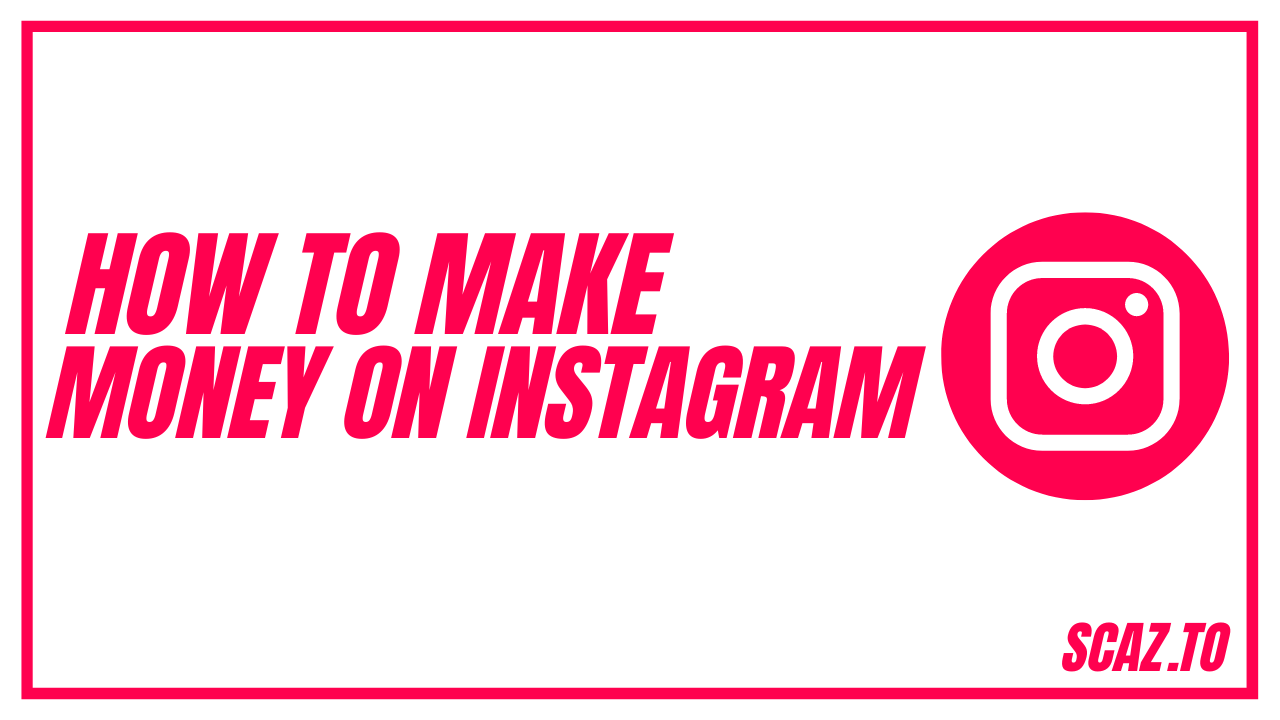
How to Make Money on Instagram
Overview
Now that you’ve built a following on Instagram, it’s time to start making money. Most people who make money on Instagram use some form of white hat monetization. This includes various methods, and most of the popular ones I’ll discuss below.
These methods include selling shout-outs (selling your posts to other people or businesses), getting sponsorships, getting creative, and selling your own product. Dropshipping is another popular monetization method used by Instagram marketers, but I don’t feel comfortable discussing it in depth because I haven’t used it extensively. When you monetize your followers, you need to know that there is a limit. You can’t try to sell them something every time you post – that will turn followers away. While this varies from niche to niche, it’s very common for people to practice a 5:1 ratio when it comes to advertising on Instagram – meaning you provide five pieces of quality content and one piece of advertising. It’s smart to make the ad look as natural as possible. Your audience should have a hard time deciphering whether each post is an advertisement or not.
Shout-outs
Shout-outs are probably the easiest and fastest way to make money on Instagram. When you sell shout-outs, you are essentially selling posts on your accounts. In a shout-out, other people get to advertise to your followers in exchange for cash.
This seems to be the most popular method, but it comes at a price. Here are some things to keep in mind when trying to sell shout-outs.
Selling shout-outs will devalue your account. Most people don’t want to see ads from someone they voluntarily follow. This can easily turn people away from your account. In most cases, you will lose followers if you decide to sell a shoutout. That’s why it’s important to only accept shout-outs that fit the general theme of your account. For example, if you have a fashion account, it would make sense to accept a shout-out from a fashion retailer because your followers might be interested in that, but don’t accept a shout-out from a gaming company – it will make your followers wonder why they are following you.
When you sell shout-outs, you are essentially allowing other people to monetize your account. Whoever buys the shout-out must be able to pay your fee and still make a profit off of your followers. It is quick money, but you can make more money if you know how to sell to your followers.
You can also contact businesses directly to see if they are interested in a shoutout partnership. If you have an extremely specific niche, this is sometimes the best option instead of finding a buyer on a marketplace. If you run a fishing Instagram account that has a decent number of followers, it might be a good idea to reach out to a lure/bait company to see if they are willing to buy a post. However, keep in mind and ask yourself, “Can I make more money selling something myself?“
Some of the most successful shoutout sellers can make over $30,000 a month selling shoutouts. These people sell shout-outs for upwards of $1,000 to $5,000 per post and have millions of followers. Smaller accounts with around 50,000 followers can make around $10 to $30 per post.
Final Verdict
Selling shout-outs is best for people who are unable to sell products themselves. So if you lack monetization skills, this is the perfect option for you. It gives you a lot of time to work on building your audience. The bigger the audience, the bigger the paycheck.
NOTE: Don’t be tempted to buy followers to sell at a higher price. Businesses will see a return on their investment with every post, and you will be less likely to get repeat business if you are deceptive with your followers. The same goes for likes and comments; don’t fake your engagement rate.
Sponsorships
Sponsorships are hard to get, but easy (and fun) to maintain. This is perhaps one of the most passive ways to make money on Instagram. Many Instagram celebrities have used their fame to get sponsorships from various companies. Being “sponsored” can mean a lot of things. Whether you’re the face of the company or you’re simply being paid to promote their product on a regular basis, sponsorships can be a fantastic, lucrative, and stress-free way to earn steady Instagram income.
Representatives from companies will usually reach out to you about a sponsorship opportunity. The size of the company and the payment terms are usually based on the size of your Instagram following. If you have 100,000 followers, you have a better chance of attracting a larger, more established company.
Some sponsorships are based on sales, while others are simply based on promotion. In some ways, a sponsorship can be very similar to selling shout-outs and affiliate sales; however, sponsorships will seem much more natural and native to your audience because the content is usually created by you.
It’s important that you never sell out. Don’t partner with companies that want to change the way you do things. For example, if you have a niche account related to food, specifically pastries, teaming up with a Bar-B-Que company will alienate your followers. Only partner with companies that will help your Instagram account move forward.
The fitness, fashion and modeling industries are the best examples of effective sponsorship. Almost every personal account with more than 50,000 followers is sponsored by a brand. Sometimes you will see these accounts promoting their brand with discount codes, or you will see some form of advertising in their profile bio.
If you have a personal account, you are much more likely to receive sponsorships if you are active on other social media platforms. Brands like to see this because it gives them more advertising opportunities. You are also more likely to get sponsorships with fewer followers as a personal account than you are as a niche account. With a personal account, companies can put a face behind their brand, which is more appealing than a specific niche account.
There are no requirements for sponsorship. Smaller companies tend to sponsor smaller accounts. I’ve seen accounts with 500 followers get sponsorships; however, these types of sponsorships are more likely to be based on commission rather than salary.
Just because you can get a sponsorship doesn’t mean you should. Keep in mind that sponsorships often look like “selling out” and can alienate your audience. Followers will also often be turned off by being associated with unfamiliar companies. I would recommend holding off until you connect with a company that will help accelerate growth within your account – not all sponsorships will do that.
If you think you’re big enough to get sponsored and haven’t yet – emailing companies and direct messaging sponsored accounts can help point you in the right direction.
Companies want to see value in your account. Most companies won’t associate themselves with accounts that show poor judgment or post content that is in poor taste. It’s important to maintain a professional image at all times. Also, companies will only sponsor accounts if they believe they can make more money from them. So if a t-shirt company pays you $5,000 to promote their products, they must believe they will make more than $5,000 in t-shirt profits from your account. Some accounts will see a problem with this and go into the business of making their own products to grab all the extra profits.
The money you make from sponsorships varies from niche to niche and company to company. If I had to estimate the average annual payment from sponsorships, I would estimate it to be around 10% of your follower base. So if you have 100,000 followers, you can expect to make about $10,000 a year, and if you have 1,000,000 followers, you can expect to make about $100,000 a year; but as I said, it varies.
Final Verdict
Sponsorships are a fantastic way to make money on Instagram because they often don’t require much work, and they can further accelerate your account if you choose the right companies to partner with. Don’t partner with companies that don’t align with your core values. Try not to look like you’re “selling out” by aligning yourself with companies that represent who you are.
Your Own Product (or Service)
Compared to the other monetization methods listed above, creating your own product (or service) will give you access to the greatest amount of profits and the greatest amount of brand enhancement. Creating your own product eliminates other disruptive third-party profits, and often promotes your Instagram account in a way that doesn’t bother your followers.
While this method is excellent in so many ways, it is also the most difficult. If you provide a poor product or service, your followers will be turned off and abandon you.
So it really boils down to this: If you can create a product that your followers will enjoy, create it. If you can’t create a product your followers will enjoy, sell something else. It’s as simple as that. There are many different types of products that can be created and sold to Instagram followers. Here are some of the most successful products I’ve seen.
Apps
Many Instagrammers have taken advantage of their followers by creating unique apps either through the Apple iOS store or the Google Play store. Kim Kardashian has leveraged her massive social media following to sell various apps to her fans. Kimoji, an app that shares the celebrity’s emoji, reportedly made $1,000,000 in one minute. The app cost $1.99 per download, and at its peak, 9,000 people downloaded the app every second. That’s the power of tens of millions of followers! Other Instagrammers have used their influence to create tools, games, and other helpful apps!
Clothing
Many Instagrammers create clothing. They use clothing to easily sell an idea or message to their followers. Also, if you have good content and legitimate fans, most fans will want to support you in this way. T-shirts are probably the most popular apparel choice, but hats, sweatshirts, wristbands, and pants are also common. Christian Guzman, a popular fitness Instagrammer, created Alphalete – which is now an incredibly popular clothing company. Christian used his Instagram followers to launch a legitimate business.
If you want to sell clothing to your audience, there are many online custom clothing distributors that can help you. Places like TeeSpring make it easy to upload a design and quickly sell merchandise to your followers without having to keep a warehouse full of product!
Programs & eBooks
Popular Instagram users also heavily create various types of programs or subscription services. It is incredibly common for someone in the fitness industry to create workout plans for their followers. Cheap programs can be sold for around $10 per month, while personalized programs can cost close to $500 per month. Nutritionists also provide this type of service, but they create weight loss/diet programs instead.
It’s also common to see courses for sale on Instagram. Many experts will sell Udemy courses or special certifications to their followers. eBooks are also popular. Many experts will use their Instagram followers to promote their eBook – whether it’s through a complex mailing list or a simple buy-now button on their website.
Niche Inspired Products
Sometimes certain niches call for certain products. For example, FuckJerry, an incredibly popular comedy account, used his celebrity to create a card game called “Whatdoyoumeme”. This card game, based on his overuse of memes, sells for $30 a piece. The game is promoted frequently on his account, which has about 10 million followers.
Another example of a niche-inspired product is Kylie Cosmetics. Kylie Jenner is often referred to as the “makeup queen,” so she parlayed her fame into Kylie Cosmetics, a makeup company. She actively uses her tens of millions of Instagram followers to promote her own company’s Instagram account.
Final Verdict
Creating your own product gives you the most potential out of your account. You eliminate third party commissions and fees and keep all the profits. While this is the best way for some people, it’s not ideal for those who can’t offer a good product to their followers.
Instagram marketing is an ever-evolving game, and while there are a large number of accounts promoting ecommerce stores, there are a number of increasingly effective tactics that few people seem to have caught on to.
Get Creative
There are many ways to create wealth on Instagram that will never be listed on any website, message board, or book. In some scenarios – if not most – the best way to make money on any platform is to do something no one else is doing. This allows you to take control of any market from the start and monopolize any niche through creativity. When you do something that no one else has done before, you have access to incredible profits – if the idea can catch fire.
If you think about it, just about every method of monetization has been “creative” at some point. Discovering a new way to monetize your followers is obviously something I cannot spoon feed you, you have to discover it on your own. However, I can give you tips that I have used in the past to help me break down creative barriers.
Find a product or service that will appeal to your followers. Then find a creative way to distribute it to your audience. While this may seem like an obvious way to go, many promotions, giveaways, and new monetization methods start this way. For example, Kylie Jenner has done this with a unique mobile application that streams premium content to her followers. Many of her fans are incredibly interested in her personal life, so she shares her “free” content on social media and her premium content through the official Kylie Jenner app. In fact, most of Kylie’s sisters do the same. She is delivering a product while delighting her fans in a unique way.
NOTE: You do not have to create a specific product to creatively monetize. There are many interesting and unique ways to monetize your fans using the first three methods listed above!
Find ways to get other people to sell your products. When you find a product or service that would work well for your followers, explore the possibility of finding others to sell it for you! By finding affiliates to sell to your followers, you take a lot of the headache out of monetizing just your audience – you also open up the possibility of selling to your follower’s audience as well!
Typically, affiliation works best when you have created the product or service yourself. This is currently being done by many Instagrammers in the form of online nutrition supplement sales, for example. Many supplement companies sponsor affiliates, typically Instagram fitness celebrities, to sell their products through the use of promo codes and discount codes. These codes allow companies to track the sales of individual affiliates. This allows companies to focus more on product development instead of their social media presence. Not only are supplement companies doing this, but so are clothing companies, beauty/makeup companies, sports companies, and more.
Use Instagram as a tool to promote other revenue streams. If you have an already established brand, then creating content via Instagram usually only funnels to your main brand; however, if you don’t have a pre-existing brand before Instagram, then you have many opportunities for additional monetary growth outside of Instagram. If you can build an audience on Instagram, then you can funnel that audience to other outlets that you create.
For example, if you have a large Instagram account that consists mostly of videos, then many of your followers may be interested in a YouTube channel of your content. You can create a YouTube channel, fill it with content, and then use YouTube’s ad network to make money from each ad view.
This works great with websites too! For example, if you have a large Instagram account in the fashion niche, you can create a fashion blog related to your Instagram content and earn money from the ads on your website. Not to mention, this also gives you a great opportunity to sell other things to your followers through your blog! The possibilities are endless!
Regardless of how you choose to monetize, being creative will allow you to stand out from the competition in a unique, memorable way that your followers will appreciate. If you want to stand out from the competition, you can’t do the same thing they’re doing!
Final Verdict
Being creative isn’t for everyone. Not everyone is creative, but those who are will have a unique advantage over those who aren’t. Finding a way to creatively monetize your Instagram account can be the difference between making $100 a day and $1,000 a day.
Key Points
• There are many different ways to monetize your Instagram account. Don’t get stuck on what’s most popular in your niche. Go ahead and explore all the different options; there might be a better way out there!
• Be persistent! Remember that the results you hope for may not happen right away. Keep building your brand and focus on what you can improve. There is always room for improvement!
• If you gained your following through gray-hat growth methods, you need to be extremely careful about how you monetize. Instagram may have secretly flagged your account.
• Do not monetize too early. You do not want to turn off your followers. Fewer people will follow you if they see that you are already monetizing.
How to Set Up Your Instagram Profile
Account Creation Creating an Instagram account is very easy, and there are plenty of guides and videos out there to
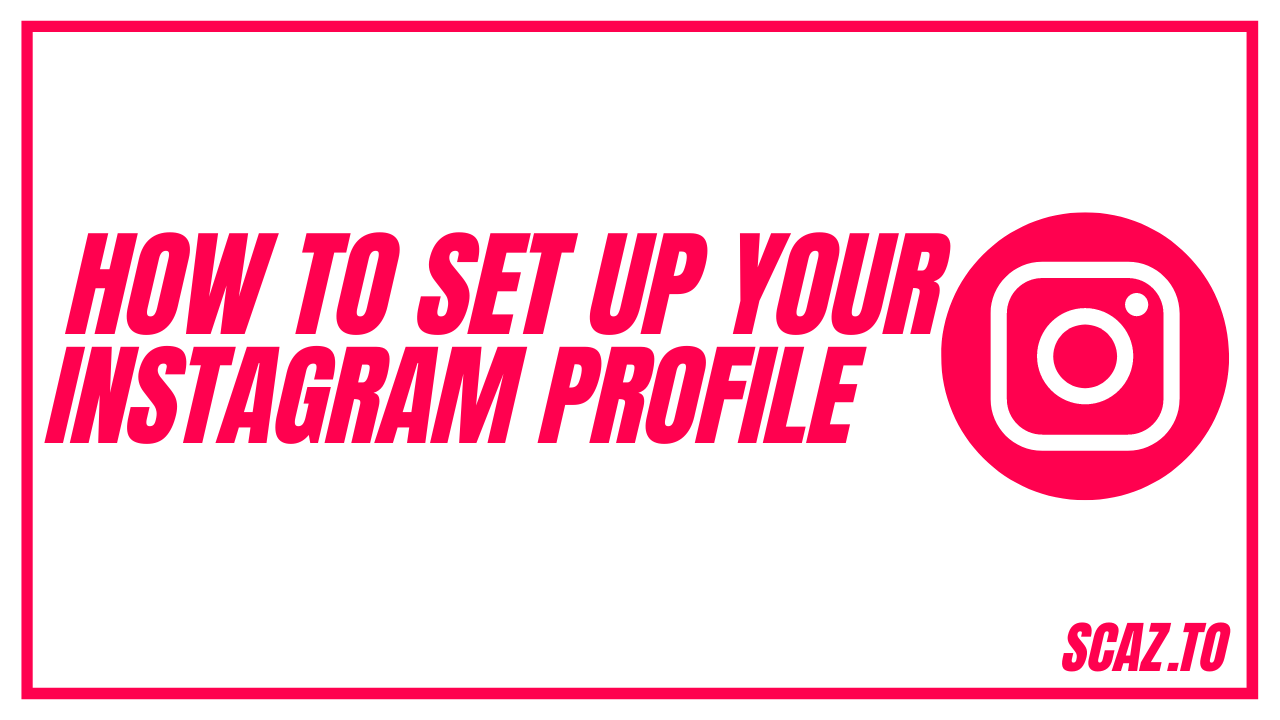
How to Set Up Your Instagram Profile
Account Creation
Creating an Instagram account is very easy, and there are plenty of guides and videos out there to walk you through the steps. I’m not going to lecture you or give you a sermon on how to create an account, but there are a few things I want to point out.
First of all, Instagram allows you to ethically create and manage up to 5 accounts. If you decide to create more, Instagram will get concerned, so you need to create and manage additional accounts appropriately. This means creating accounts under different IP addresses and using different devices to simulate different account owners.
Second, all accounts can be interchangeable – up to a point. If you decide to change your niche or username at any time, you can do so. However, this could negatively affect any followers you already have.
Username Selection
When choosing a username, it’s important to find a brandable, memorable name. Avoid using periods, underscores, and numbers. It’s better to use a unique name than a generic, forgettable one.
Finding a more creative name would help build a brand. Building a brand will also help you monetize your followers later.
With over 2 billion users, good Instagram usernames are getting harder to find every day. Think of Instagram usernames as domain names. If someone visits your website and wants to come back in the future, they’re more likely to remember your website if it’s called www.Apple.com instead of www.apple-juicyapple.xyz.
When setting up a new account, you should aim for a short, simple, and (most importantly) memorable username that looks authoritative in a user’s activity feed and is also easy to remember.
I’ve tried a lot of tools, bots, websites, and username checkers in the past that all claim to be the best way to “snipe” usernames, but the method I’m about to share with you is honestly the best, and it’s saved me a lot of hours.
This may surprise you, but I use a domain name suggestion site to come up with username ideas. The site, Leandomainsearch, takes a keyword you enter, runs it through its algorithm, and then comes up with literally thousands of two-word username ideas.
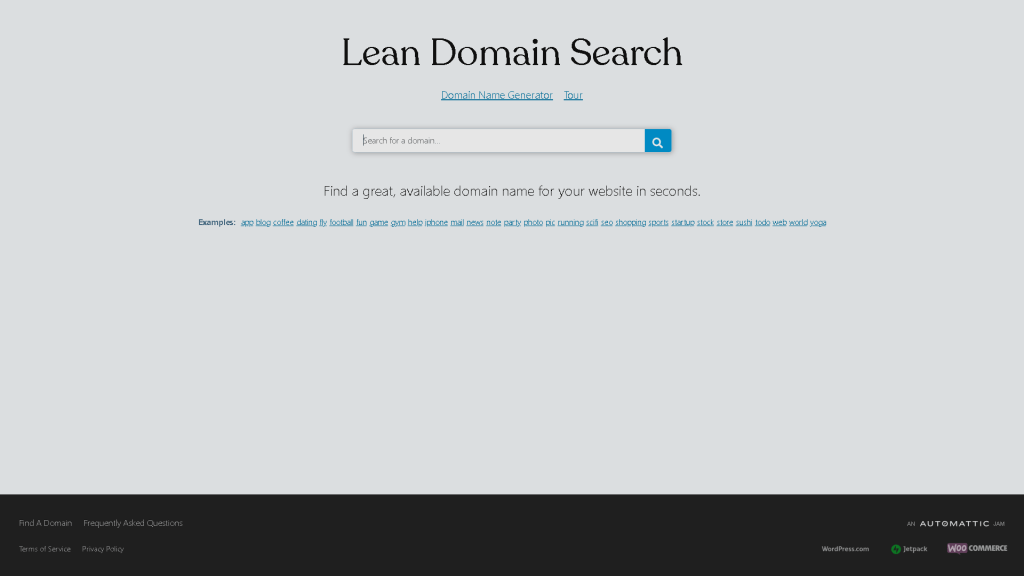
This tool is good not only because it gives you ideas and inspiration for your Instagram username, but it also tells you if the domain name is available, which gives you the option to expand your brand further down the line.
The only downside to this tool is that it doesn’t tell you if the Instagram @ is available or not, but you can easily find that out with a quick search (Go to instagram.com/[Ideal Username].
Picking a Niche
There are two types of accounts you can create – personal accounts and niche accounts. A personal account on Instagram would be an account modeled after the account owner, and a niche account would be modeled after a thing or idea.
You may be asking yourself, “What kind of Instagram account should I create?” That’s a fair question, and here’s what I recommend for everyone: Do something you love.
Whether you’re creating your first Instagram account or your 1,000th, I highly recommend creating accounts that you will always be engaged with. Create accounts that you are passionate about. Create accounts that you will nurture every day. Your accounts are your babies. If you love football, create football accounts. If you love making money, create luxury and motivational accounts. If you love to work out, create fitness accounts. It’s that simple. If you’re a vegetarian, don’t create accounts about eating meat. It doesn’t make sense. If you don’t care enough about it in real life, you won’t care enough about it on social media.
You have to be knowledgeable about the accounts you create. If you don’t know the latest fashion trends, then you’re probably going to do a poor job of having a fashion account on Instagram. If you have little to no interest in fitness, your personal account about healthy living probably won’t get very far.
In another sense, you should create accounts that you know how to monetize. If you don’t know how to monetize your followers – don’t worry, we’ll get to that later. I’m not saying you need to have a 10-page business plan when you start an account, but you should have a general idea of how you can profit from it.
Don’t be afraid to use unconventional niches! You might be surprised at the size of your audience! This account has more than doubled since I took this screenshot. Her engagement levels are close to 15%, and I’m sure she’s making good money promoting her Amazon affiliate link!

Major Key Alert
Although I’m a firm believer in creating accounts in whatever niche you’re passionate about, there have been a lot of people who have contacted me asking which niche is “best”. So here is my opinion on the matter.
Most Explosive/Fastest Growing Niches
Fitness Girls/Babes: @sommerray
Maybe I’m biased because I’ve rapidly grown several fitness accounts, but I personally think Instagram is known for “Instagram fitness chicks.” If you are an Instagram fitness chick with a decent body (read: booty), you’re in luck…
Fashion/Makeup: @kyliejenner
On the other end of the spectrum, people also seem to like watching makeup videos or double-tapping fashion choices.
DIY/Viral
Pets
Most Difficult/Slowest Growing Niches
Fitness Guys: @bradleymartyn
You have to be an absolute beast to get a million followers as a fitness guy. It’s a lot easier if you’re a girl.
Motivational: @businessmindset101
Try to find a motivational account out there with over 50,000 followers that has a 10% engagement rate (Your engagement rate is the percentage of your followers that interact with your posts. A 10% engagement rate for an account with 1,000 followers would mean that, on average, about 100 people like your posts). It’s impossible. I don’t like to say that niches are oversaturated, but this one is close…
Luxury
Comedy
There are definitely some niches that are harder to grow than others, simply due to supply and demand.
Bio
While what you post is more important than your profile bio, it’s still important to have a compelling bio that introduces your account. Check out what successful accounts in your niche are doing to get a general idea of what you should be doing, as this varies from niche to niche.
If you have other social media accounts, it is best to link to them in your bio as well, as this will help boost their presence. If you have a personal website that you would like to link to, feel free to do so, if it is relevant to your account or niche.
Profile Picture
Your profile picture will be the first impression most people have of your account, so make sure it’s good, unique, branded, and easily recognizable.
Bradley Martyn
Note his unique profile picture. He uses emoticons correctly, uses his brand as a hashtag, and provides contact information, other social media links, and a link to his service.
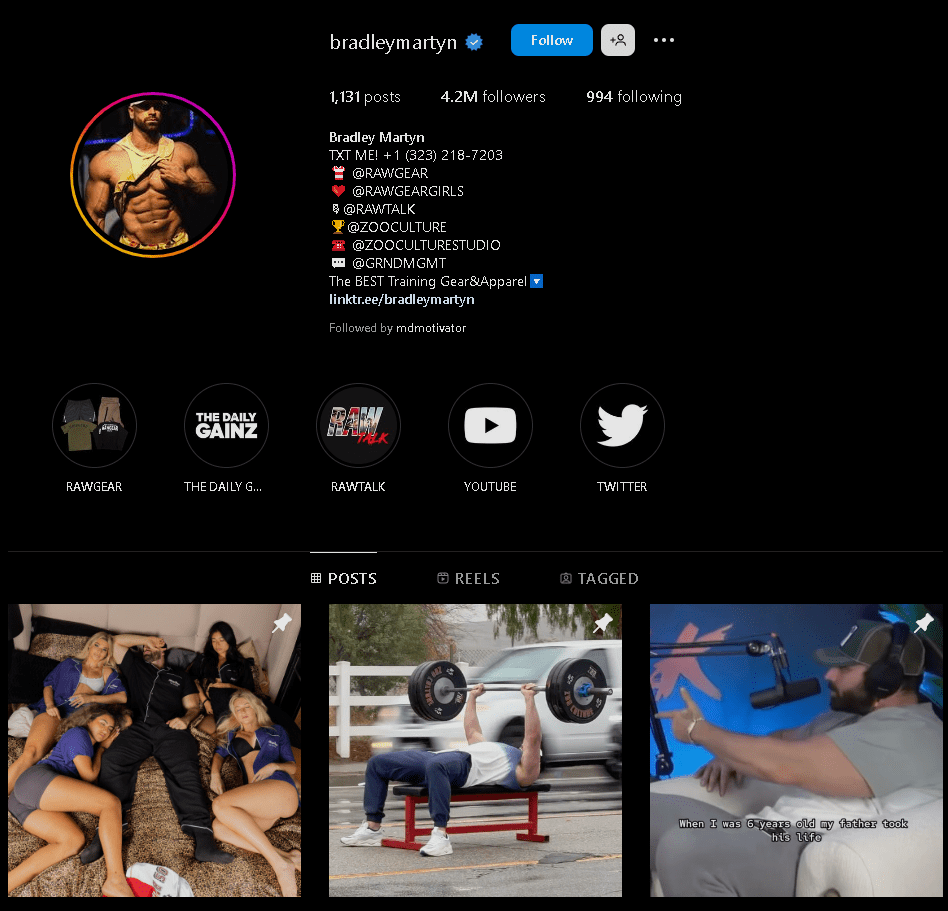
Nikki Blackketter
Note her unique profile picture. She describes herself quickly and succinctly. Gives her other social media links, and she links to her main website.
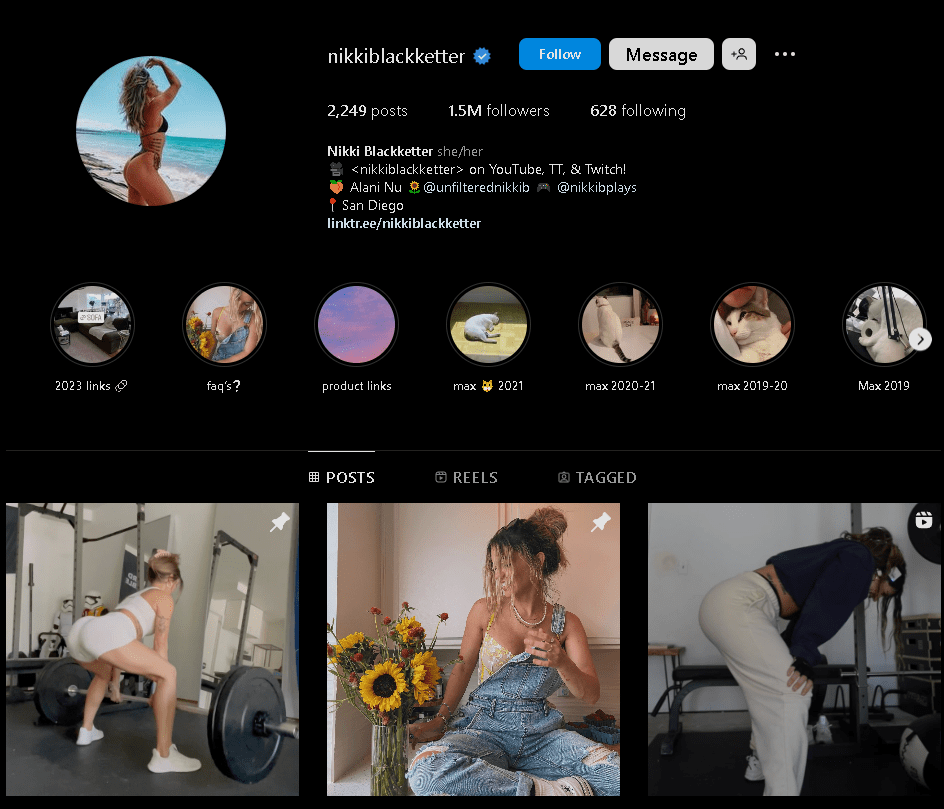
FuckJerry
Notice the unique, brandable profile picture this comedy account uses. Notice how he uses memes to sell his comedy card game.
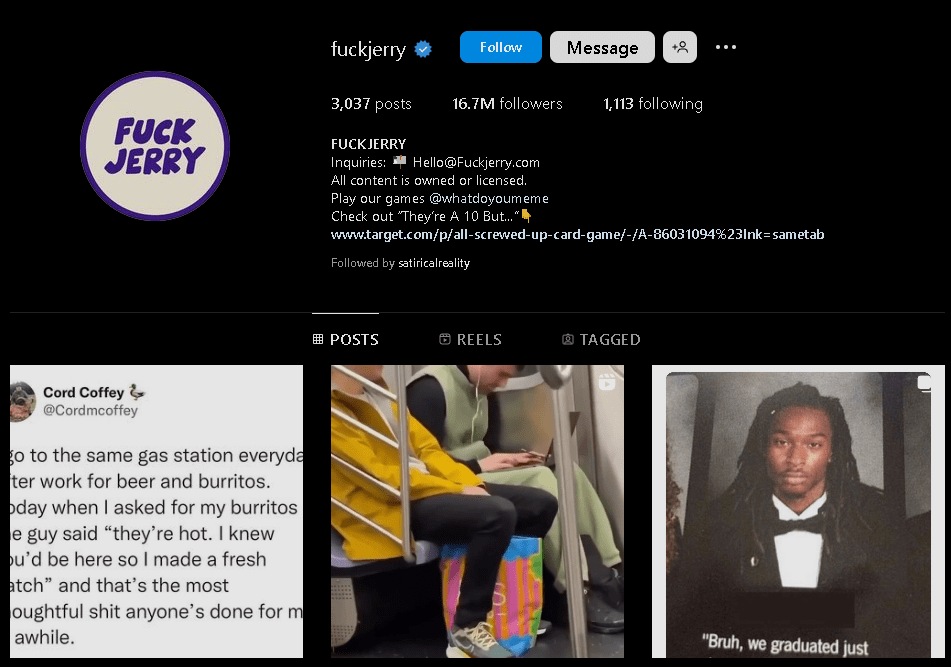
I’m a big believer in taking the time and effort to properly set up all of your Instagram profiles with eye-catching profile pictures.
Treating your Instagram accounts like they are world-renowned brands will help you create an authoritative name in your niche that your followers can associate with quality content. I’m going to walk you through a few different methods for creating profile pictures for your Instagram accounts and any other social media platform you’re interested in, but before we get started, it’s important to know what you should be aiming for:
Your profile picture should:
- Be identifiable from a phone screen. One thing I’ve noticed with some of the not-so-good accounts out there is that they seem to forget that Instagram is primarily a mobile platform. The vast majority of people are going to be looking at your account on a very small screen, so having a small logo with a lot of detail is not a good idea.
- Be unique and imaginative. Don’t steal someone else’s profile picture. Just don’t do it! Re-creating an already successful profile picture is a much better idea.
- Be creative. The more eye-catching and creative you can be, the better. Coming up with a play on words or a branded logo is a great idea if you’re really in it for the long haul and want to build some quality accounts.
The Easy Way
Graphic design is not for everyone, and there is a reason why so many people outsource this kind of thing. One thing I have found beneficial (and I recommend everyone do this instead of spending hours doing it yourself) is to find a designer on Fiverr who will provide the PSD/source files as well as the image file. This means you can reuse the logo as many times as you want, changing the details for each account (if you have multiple accounts).
For about $5-20, you can effectively get unlimited profile pictures, and all you have to do is change the text each time. It’s a pretty good deal.
Be sure to fully brief the designer so they know the logo is for Instagram, and send them the list of considerations above.
The DIY Method
I’ve been using Photoshop for as long as I can remember, but you’re more than welcome to use other editing tools out there.
As I mentioned before, it’s important to make sure you own all the rights to your work and that you don’t get hit with a nasty copyright strike in the future. There are a lot of free graphic sites out there, but my personal favorite is freepik.com
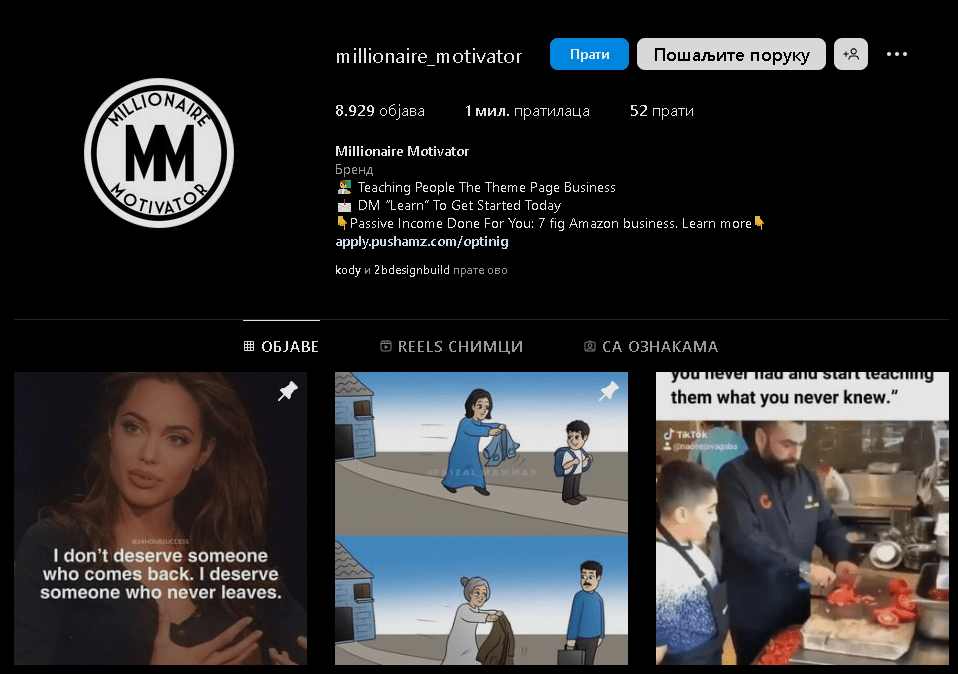
Obviously, there is no way that I can tell you how to design your logo, as it depends heavily on your niche and vision, but I will walk you through a basic design that fits a lot of niches and is easily re-creatable.
To start, we’re going to create a simple border. Since Instagram profile pictures are circular, you’ll need to go to this search on FreePik and choose a design that you think will look good in your niche.
After downloading the appropriate file format, you will want to import it into Photoshop (or your editor of choice) and resize/center it. I would recommend a 500px by 500px file for this.
While a background or pattern might work for you, I prefer to stick with a white/black background with an occasional grunge texture. It’s really all about your personal preference and the account in question.
By far the most important part of your profile picture is the actual text. There are millions of flat fonts out there, but I like to use this list for inspiration.
After you download and load the font you want to use, you need to decide what you’re going to display. Some people like to display the first letter of their username, some like to display the first letter of each word, and some like to display their entire username. I think this varies a lot depending on the name, so that decision is up to you.
The last thing you need to do is create the actual text. If you’re well-versed in Photoshop/your tool of choice, you can probably do some amazing things with the text tool, but for the graphical noobs, this article is really helpful. I like to recreate the “strikethrough” effect in most of my logos, as I think it sets them apart from the usual garbage.
To recap: create a 500×500 file and create a border using FreePik. Download a nice, flat font and then use some of the effects in the article I linked to make it stand out a bit more.
Public or Private?
Public accounts are usually a better option than private accounts under most circumstances. With private accounts, people are less likely to follow you because they can’t see your content, and many people don’t want to waste their time waiting for you to approve their follow. Stick to public accounts.
The only time it makes sense to use a private account is when you are about to get a shout-out from another account.
Worst Freelance Mistakes & How To Avoid Them
Are you constantly being turned down by customers? Or do your clients keep asking for discounts? Or for more revisions?
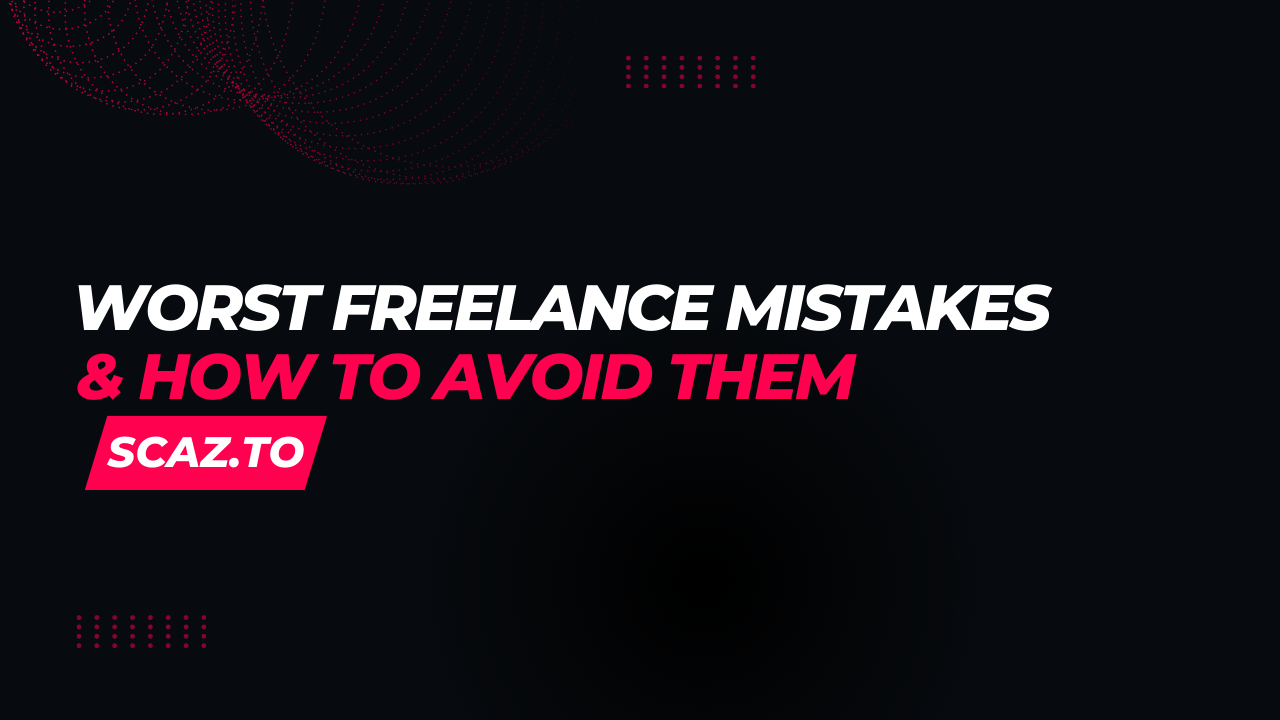
Worst Freelance Mistakes & How To Avoid Them

Are you constantly being turned down by customers? Or do your clients keep asking for discounts? Or for more revisions?
Then see if you’re making these freelancing mistakes.
But don’t worry. We all make mistakes when we start out. It’s how we learn to get better.
It was Albert Einstein who once said, “A person who has never made a mistake has never tried anything new. Of course, we can’t learn new things without taking risks, and sometimes we make mistakes. But if you make the same mistake twice, it will cost you.
Most freelancers make a lot of mistakes when dealing with clients and often wonder why they don’t get enough work or why they have to chase clients just to get their bills paid. Some even give up too easily after experiencing failure after failure.
I’ve made a lot of mistakes in my freelance career. But I also learned to avoid most of them by learning from the mistakes of other freelancers. And you can do the same.
Here are some of the mistakes you should always try to avoid in order to become an excellent freelancer.
1. Offering Discounts

Clients often ask for discounts, especially when applying for jobs on freelance marketplaces. And it’s up to you to stand your ground in these discussions.
Of course, there are ways to make your client feel better and still charge the right amount.
But the worst part is when freelancers offer discounts without the client asking. This is what leads to bidding wars on freelance sites like UpWork and Freelancer.com.
And it’s the worst possible way to throw your freelance career in the trash.
Every time you discount your services, you send a signal to the client that devalues your work. And it will also hurt your reputation as a freelancer.
The key is to find the right clients who value your talents.
2. Terrible Communication Skills

Learning how to talk to clients, write great emails, and create killer project proposals are all important elements that will make you a better freelancer.
Clients are more experienced in dealing with freelancers. And they can spot an amateur from the first message they receive.
The way you address the client in an email or the way you phrase your messages can send strong signals about your work ethic and experience.
You don’t have to take courses or have a degree in English Literature, just knowing how to write a great email or have a pleasant conversation with a client is more than enough.
You can start by reading this guide to writing emails and talking to clients.
3. Accepting More Than You Can Handle

A few years ago, I took on a large project to deliver 20 1500-word articles in 20 days. I was already working on two other projects at the time, but I was too greedy to turn down the opportunity. Back then, it took me two days to complete an article, and this time I wanted to challenge myself to see if I could do more. And I was so terribly wrong.
I managed to deliver the project on time, and the client was happy with the results. But I had to work all day to manage all the projects, and by the end of the month I was too exhausted to continue. Worst of all, I wasn’t able to deliver my usual high quality work at that time.
He never came back to order more. Probably because of the poor quality of my work. I lost a valuable client.
From that day on, I decided not to accept more than I could handle, no matter how good it sounded.
The point is, it’s important to pace yourself when you take on new work. I know you have bills to pay and rent to pay. But try not to be too greedy and think about your career in the long term.
4. Working For Free
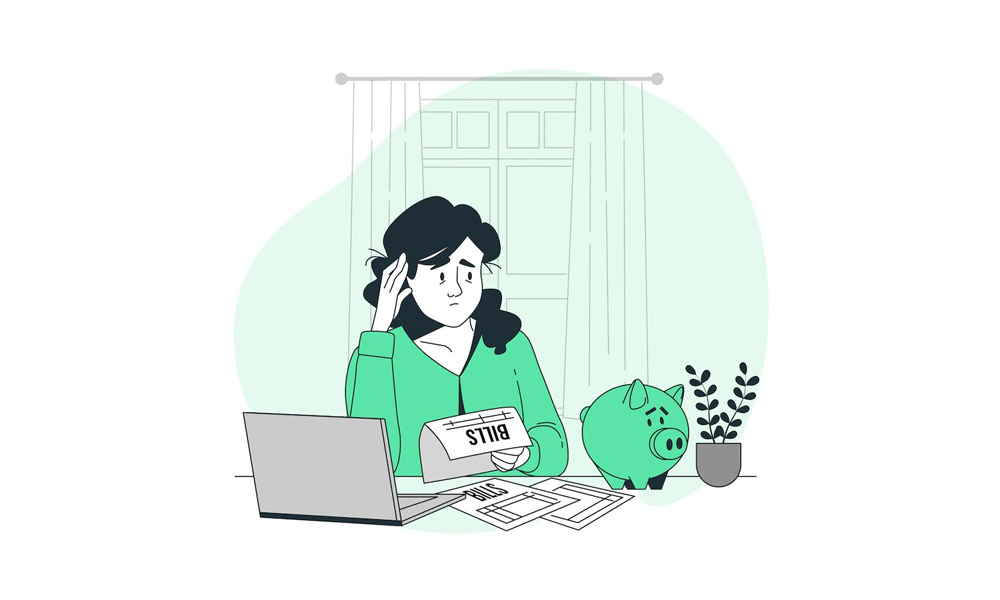
I know the thrill you get when a client responds to your proposal and says they’ve decided to give you the project. It’s a great feeling, right? This month’s rent is covered.
But don’t get too excited, because these clients may be ripping you off.
Not all clients are honest and trustworthy, some try to manipulate you to get what they want and never pay you for it. Asking for free sample work is a common method some clients use to get their projects done by a number of freelancers without paying them for their work.
Another method is to cancel the project at the last minute after you have sent your work for final review. Most clients will simply ignore you after you deliver the work. What are you going to do, sue them?
You need to prepare for these situations. First of all, never give free samples and never work for free. And try to get them to sign your proposal if you can.
If a client wants you to do part of their project, calculate the price you’d charge for that part and ask them to pay for your work up front.
Always ask your clients to deposit a percentage of your total payment before you begin work. If you’re using a freelance platform, have the client break the project into small goals so that you get paid each time you deliver a piece of the project.
5. Not Knowing How to Price Your Services

Finding the perfect price for your services can be difficult when you take on projects of varying sizes. But if you don’t find an appropriate way to charge for projects early in your career, it will hurt your credibility in the long run, and you won’t be able to raise your prices.
According to a study by Contently, 38.6% of freelancers have only made $10,000 a year, which is even less than $900 a month. Only 19% were able to earn more than $50,000.
Charging low rates is a mistake that almost all freelancers make on sites like Upwork and Freelance.com. These sites are designed to lower your standards and force you to work for less. But if you’re confident in your skills and experience, you should fight for your place and charge your clients reasonably.
6. Assuming You Know Everything
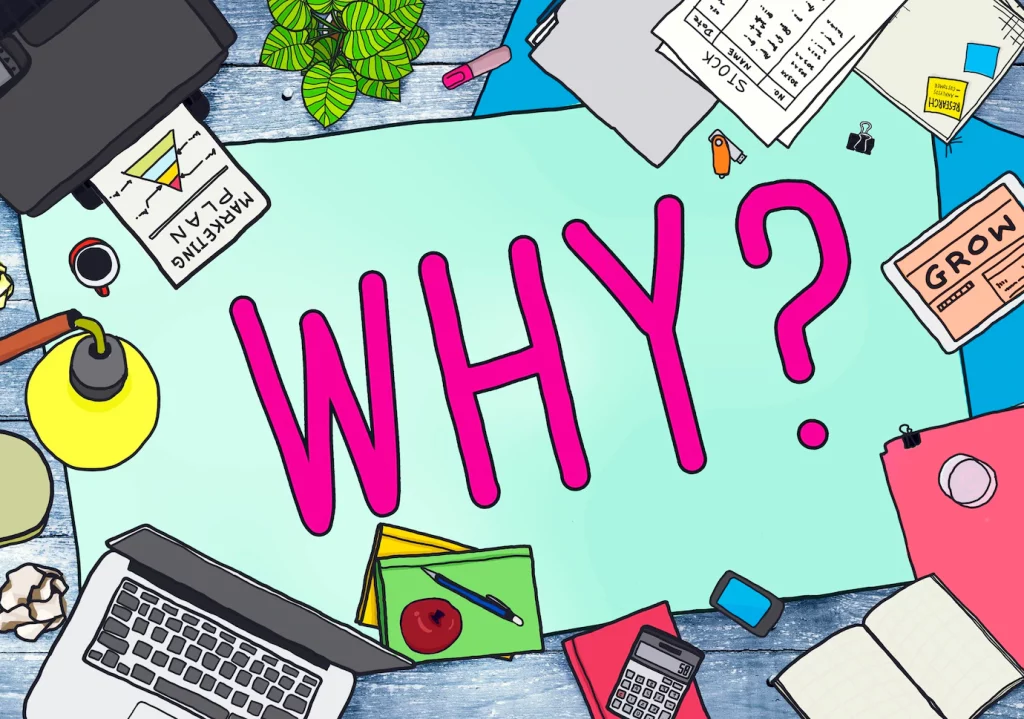
Technology moves faster than the blink of an eye. And you need to evolve with it to be more competitive and a more relevant freelancer in your industry.
You may be an expert copywriter or an expert SEO analyst, but if you think you know everything, you will avoid trying to learn new skills. Or keep up with the latest news in your field. Eventually you’ll hit a dead end, or someone else with much higher skills and lower rates will come along to replace you.
There’s nothing wrong with learning a few new skills to improve your work and your skills. Subscribe to all the top blogs in your industry and keep up with the latest trends.
I use Skillshare to learn a new skill every month. It’s a solid investment that keeps me on top of my freelance career. If you can’t afford premium courses, use YouTube and other free sites like eDX.org.
7. No “Rainy Day” Fund

When you start making more money than you expected, it’s easy to get a little carried away and spend beyond your usual budget. After all, what’s the point of making money if you can’t spend it on the things you love, right?
Sure, you’re free to do whatever you want with your money. Just remember to put a small amount of your earnings in the bank every month, just in case. Think of it as your retirement or rainy day fund.
Freelancing has its ups and downs. You might make $5,000 one month and $100 the next. You can never be sure what to expect in this field. So make sure you have a rainy day fund to cover your expenses during those tough times.
This is the one mistake that forces freelancers to quit their careers and go back to day jobs because they don’t plan ahead. Don’t make the same mistake.
In Conclusion
I always refrain from calling myself an expert because even though I have gained a lot of experience over the years, I know I still have a lot to learn. Socrates was right: “The only true wisdom is to know that you know nothing.
So keep learning, find ways to challenge yourself, and strive to be a better freelancer!
Advantages And Disadvantages Of Being Self-Employed
Self-employment and freelancing are not as glamorous as most people believe. It possesses both benefits and drawbacks. Read this post
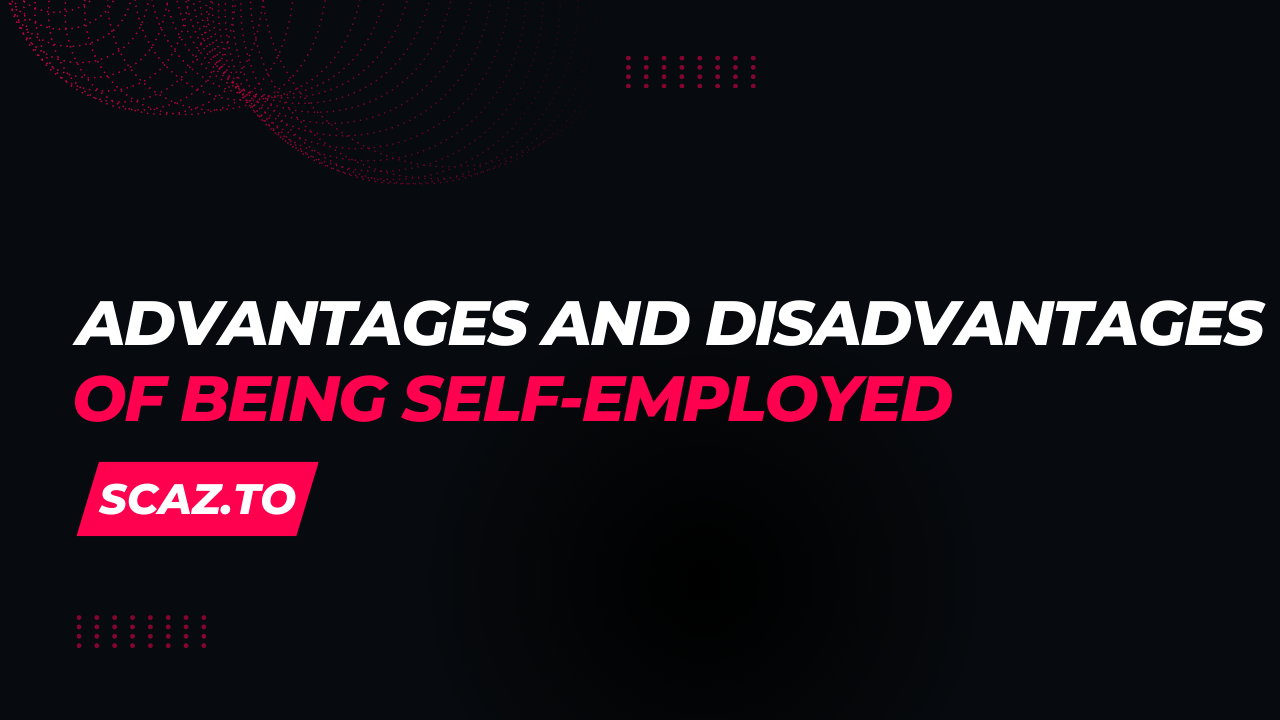
Advantages And Disadvantages Of Being Self-Employed
Self-employment and freelancing are not as glamorous as most people believe. It possesses both benefits and drawbacks.
Read this post for a list of the pros and cons of self-employment if you’re considering starting a freelance career or returning to a full-time position after struggling with freelancing. This list will hopefully assist you in making a decision.
If you’ve seen pictures of digital nomads traveling the world with their laptops, you’re aware of their lifestyle. Or Facebook posts claiming that freelancing is a lonely path. Let me reassure you, it’s all true.
Freelancing has numerous advantages and disadvantages. I see a healthy balance of both, though. It is unquestionably superior to the disadvantages of a day job. Here’s why.
1. Never Having To Answer To A Boss
Before starting freelancing I worked at 3 different day jobs. I am grateful for the experience despite the fact that it was a terrible time filled with moments of depression.
Because it enabled me to recognize the advantages of freelancing and appreciate being my own boss.
You can never produce outstanding work while working a day job.
How can you work when your boss hovers over your shoulder every few minutes, criticizing your work, not appreciating your creativity, never listening to your ideas, and causing you anxiety?
As a self-employed individual, you won’t need to worry about any of the above. Your clients will be open to listening to your ideas, will value your opinions, and will give you the freedom to complete tasks as you see fit.
But, You Have To Answer To Clients
Naturally, you will still need to deliver work on time, meet deadlines, take constructive criticism from clients, and make revisions when working with clients.
However, do not mistake your clients for your boss. As a freelancer, you are your own boss!
If you feel that a client is abusing, manipulating, or depressing you, you can fire them. And find a new client. It’s as simple as that.
2. You’ll Earn A Lot More Money
Currently, I am earning 20 times more than what I was earning at my day job. My parents continue to wonder if I am operating some sort of illegal drug distribution network. They have absolutely no idea how this is even possible.
It may take some time to get there (it took me four years of hard work), but you will earn significantly more doing freelance work than at any other day job you can imagine.
As long as you don’t get comfortable and keep learning new skills and improving your services, you will eventually earn more money being self-employed. I promise that.
But, No Monthly Guaranteed Paychecks
Unless you land a full-time freelance position with a startup or remote team, there is no guarantee of payment when freelancing.
For the first four years of my career, I lived from client to client. After completing one project, I sought out another. This describes the majority of freelancers. There is always the possibility of not acquiring a client in time.
However, this can be resolved by focusing on long-term clients and projects. This is how I resolved my problem. Once, I served the same three clients for more than two years.
3. Flexibility In Working Hours
One of the greatest benefits of being self-employed is waking up at 10 AM and starting work at 1 PM.
I have never enjoyed waking up in the morning because I am not a morning person. I was slow to realize that I am a night owl. I do my best work at night.
As a freelancer, I can work whenever I choose. I do not have to worry about being late to work and making up a story to explain my tardiness to my boss.
I believe that having to wake up in the morning is one of the reasons why I have always disliked my day job.
However, you must work much harder.
Being your own boss entails a great deal of responsibility. You must complete daily tasks, manage multiple clients, keep clients informed of progress, issue invoices, and manage expenses, among other responsibilities.
Consequently, you will likely end up working longer hours than a 9-to-5 job. There are occasions when I work until 12 or 1 a.m. However, I do not consider what I do to be work because I genuinely enjoy it.
4. Future-Proof Your Career
As a result of the recent pandemic, an increasing number of businesses are adopting 100% remote work systems. This means that all of their employees work from home or they employ remote workers from abroad.
This is excellent news for freelancers, as it will increase the number of remote positions and job opportunities available to remote workers from around the world.
In the coming years, the number of freelance workers and available jobs in the industry will undoubtedly increase.
But, You’ll Be Stuck At Home
Obviously, as a remote worker, you will be unable to visit the office and socialize with your coworkers and friends.
This is the ideal setting for introverts. However, extroverts will struggle to adapt to this change. However, if you survived the pandemic lockdowns, switching to a remote position will be simple.
5. You’ll Be More Productive
Studies indicate that working from home improves employee productivity by 13 percent, reduces stress, and boosts morale.
You will be able to approach projects at your own pace once you become self-employed. Take your time and don’t rush through tasks. And work from the convenience of your home while interacting with your pets or playing video games.
There will undoubtedly be deadlines and project schedules to contend with. However, when you are at ease in your workplace and have the option to work flexible hours, you will be less concerned.
There Will However Be Distractions
There will also be interruptions, such as an unannounced visit from a friend or the need to be a good host to family and friends. Or when your children return from school and run around the house screaming.
Of course, there’s nothing a good noise-canceling headphone can fix.
6. Freedom To Travel More
As an introvert, I have always enjoyed my own company, and I enjoy being at home. Staying at home, reading a good book, writing, playing my favorite games, or watching a movie are my definitions of having a good time and enjoying life.
However, many individuals wish they could travel more, see the world, and discover new places. Freelancing is an excellent way to realize this goal. It is possible to work and travel at the same time.
Self-employment is the optimal path to becoming a digital nomad.
But, You Probably Won’t Be Able To
As I’ve stated, freelancers must also manage numerous responsibilities. Therefore, even when traveling, you will be required to work long hours to meet deadlines.
Obviously, it is difficult to work and be productive while traveling between locations. However, there are numerous individuals who travel while working in a comfortable manner.
7. Start Your Own Business
Freelancing is a lot more like running your own business. Probably because of this, many freelancers start their own businesses.
One of the freelancers I admire is Brian Casel. He was a freelance web designer in the past. He then transformed his service into a product business by offering web design and marketing services to restaurants and hotels. He profitably sold both businesses and is now operating a content marketing business.
In addition, starting a business is on my bucket list. In a sense, I feel that my experience as a freelancer has prepared me for the challenge, and I am ready to accept it.
But, Are You Willing To Take A Risk?
Starting a business involves a lot more responsibility than being self-employed. Managing a team of employees being the biggest responsibility of all.
Also, most people are unwilling to take the risk of leaving their comfort zone of earning a living and investing in a business.
8. Spend More Time With Your Family
I recall, as a child, staying up late to speak with my father. See if he brought any treats. Or, describe all the exciting events that occurred at school. The majority of the time, he arrives home late, frequently in a terrible mood, and goes straight to bed.
I am certain that the majority of parents regret not being able to spend quality time with their children due to their demanding jobs.
Self-employment will help you resolve this issue. You can spend additional time with your children, spouse, and pets. You will also become a better parent and/or partner.
However, it can also be lonesome
A disadvantage of freelancing is that very few people will understand what you do. Consequently, it can become lonely at times.
Sometimes, my friends question how it is possible for me to become tired while sitting at a computer. They do not comprehend how mental energy can be depleted by creative work.
Especially in my country, having a permanent job and a monthly paycheck are the only factors that people consider when judging a person’s character. As long as you receive a paycheck at the end of the month, they don’t care how miserable you are working a low-paying government job.
9. Pursue Your Passion
You will have the freedom to find and work with clients of your choosing when you are a freelancer.
If you enjoy writing about travel, you can find work in the niche of travel blogging.
If you enjoy creating hand-lettered designs, you can also find work in this niche.
Simply put, being self-employed entails choosing to engage in work that you enjoy.
But, You’ll Have To Listen To Clients
Even if you land your dream job and get to do things you’re passionate about, you will be required to follow instructions the majority of the time.
The client will almost always specify the desired appearance of the project. Therefore, you must frequently adhere to their guidelines. This provides you with very little creative freedom to complete the work as you prefer.
However, if you manage to establish a reputation. Customers will seek you out for your creative output. Similar to how large corporations approach highly skilled individuals.
10. Find Financial Freedom
Freelancing enabled me to achieve financial freedom.
Due to working online, I was able to earn 10 times as much as I would have at a normal job. As a result, I was able to purchase a home and a brand-new vehicle without incurring any debt.
It’s a dream realized. I cannot fathom where I would be if I had not begun working online.
But, it will require a great deal of effort.
This ability to purchase the finest items you desire does not come easily. It requires a great deal of effort.
Prior to earning my first $500, I worked every day for very small amounts of money. But I was consistent and diligent in my pursuit of a single objective. I eventually arrived.
You can achieve financial independence while working online, but it will require commitment and effort. Are you prepared to accept the challenge?
Another Point To Consider
However, none of these advantages or disadvantages are as significant as your happiness.
It is impossible to place a monetary value on the joy and satisfaction that come from working from home and doing work you love.
You need not sacrifice your own happiness to support yourself or your family. You can live a happy life as a self-employed individual.

